Japan on a budget: 17 ways to get more for your yen

Mar 28, 2024 • 7 min read

These top tips to low-cost living can help you stretch your budget on a trip to Japan © Monzenmachi/Getty Images
Japan has a reputation as an expensive place to travel, but it’s an image that doesn’t hold up on the ground.
With a little strategy, a visit can be very reasonable – budget-friendly, even. Many of the country’s major sights, for example, cost nothing, and free festivals take place year-round.
With these top tips on finding the best-value places to stay, the right transportation tickets and places to eat that suit all tastes and wallets, you can make your yen go further on a visit to Japan .

A guide to daily costs in Japan
- Capsule hotel room: ¥4,000 (US$30)
- Basic room for two: ¥8,000 (US$60)
- Self-catering apartment: (including Airbnb) ¥6,000 (US$45)
- Coffee: ¥400 (US$3.50)
- Sandwich: ¥300 (US$2.20)
- Beer/pint at the bar: ¥600 (US$4.50)
- Dinner for two: ¥5,000 (US$38)
- Hour of karaoke for two: ¥2,000 (US$15)
1. Consider staying in a business hotel
These economical (and, to be honest, rather utilitarian) hotels offer the best prices for private rooms with en suite facilities.
It’s possible to find double rooms for as low as ¥8,000 (and single rooms for as low as ¥6,000), though these will be a little more expensive in cities like Tokyo , Kyoto and Osaka .
Look for places that include a free breakfast buffet – they can be substantial enough to keep you going for hours.
2. Book direct at a guesthouse or hostel
Japan has fantastic guesthouses and hostels all over; not only are they generally clean and well-maintained, but friendly English-speaking staff are usually on hand to offer near concierge-level service.
A double or single room is comparable to a business hotel (but usually has shared facilities); dorm beds cost around ¥3,000.
Some places do charge extra for towel rentals, so you can save a few yen by bringing your own. Note that rates are often slightly cheaper if you book directly rather than through a booking site.

3. Sleep in a capsule hotel in the cities
Capsule hotels, which offer small rooms with enough space for just a bed, provide a budget-friendly place to spend the night.
A capsule berth costs slightly more than a dorm bed in a hostel (¥4,000 per night), but you get more privacy.
You probably wouldn’t want to stay every night in a capsule, but they’re good for saving money in cities where hotels are pricier.
4. Go camping in the summer months
If you really want to do Japan on the cheap, you can rely on its network of well-maintained campsites in rural or resort areas; prices range from ¥500 to ¥1,000 per person or tent. Note that many sites are only open in the summer.
5. Swap a night in a hotel for an overnight bus ride
Long-distance buses, like those operated by Willer Express , are the cheapest way to get around, and longer routes have night buses, which saves a night on accommodation. There are also bus passes, which can make this an even cheaper option.

6. The Japan Rail Pass is a great travel bargain
Like the famous Eurail Pass, the JR Pass is one of the world’s great travel bargains and is the best way to see a lot of Japan on a budget.
It allows unlimited travel on Japan’s brilliant nationwide rail system, including the lightning-fast shinkansen (bullet train).
There are also more regionally specific train passes that are cheaper, so examine your itinerary carefully before deciding. Purchase a pass online or from a travel agent like JTB in your home country.
7. Ride local trains for less with the Seishun 18 Ticket
The Seishun 18 is another great deal, but with very specific conditions: for ¥12,050, you get five one-day tickets good for travel on any regular Japan Railways train (meaning not the shinkansen or any high-speed limited express trains) during a limited period of a few weeks.
The Seishun 18 Ticket is only available at certain times during the year – during school holidays (the ticket is designed for students, but there’s no age cap) – and can only be purchased from JR ticket windows in Japan.
If the timing works, and you’re a fan of slow travel, this is a unique, ultra-cheap way to get around in Japan .
8. Consider renting a car to go beyond the cities
Highway tolls and petrol in Japan are expensive; however, renting a car can be economical if you’re traveling as a group or family, or are plotting an itinerary that takes you away from major rail hubs.
9. Take domestic flights with low-cost airlines
Japan has several budget carriers, like Peach , Jetstar and Air Do , that offer bus-like pricing on some routes – just be sure to factor in the time – and cost – of going to/from the airport.

10. Japan’s shrines and temples are free to visit
The vast majority of Shintō shrines in Japan cost nothing to enter. Likewise, the grounds of many temples can be toured for free (often, you only have to pay to enter the halls or a walled garden).
11. Eat cheap food and meet locals at a traditional festival
Throughout the year , festivals take place at shrines and temples and through city streets. They’re free, an excellent way to see traditional culture come alive, and are well attended by cheap food vendors.
12. Opt for hikes and walking tours
Going on a hike or a trek is free and can be the most rewarding part of your trip: explore an up-and-coming city neighborhood , walk old pilgrimage trails or rural lanes, or get up into the mountains in one of Japan’s national parks .
Japan’s cities, especially Tokyo, have some fantastic buildings designed by many of the big names in Japanese architecture. With a little bit of planning, you could chart your own architecture tour. Ask at a tourist information center or your accommodation for suggestions.
13. Spend time relaxing in the city parks
Urban parks are generally free to enter (and some gardens are, too) and are popular with locals on weekends; pack a picnic and settle in for an afternoon of people-watching. If you time your visit right, you could be bathing in the beauty of Japan's cherry blossoms .
14. Shop for cheaper goods at a local market
Many seaside towns have fish markets, some rural spots have morning markets, and some cities still have their old-fashioned open-air markets. Visits here are a great way to connect with local culture and are often a source of cheap, fresh food.
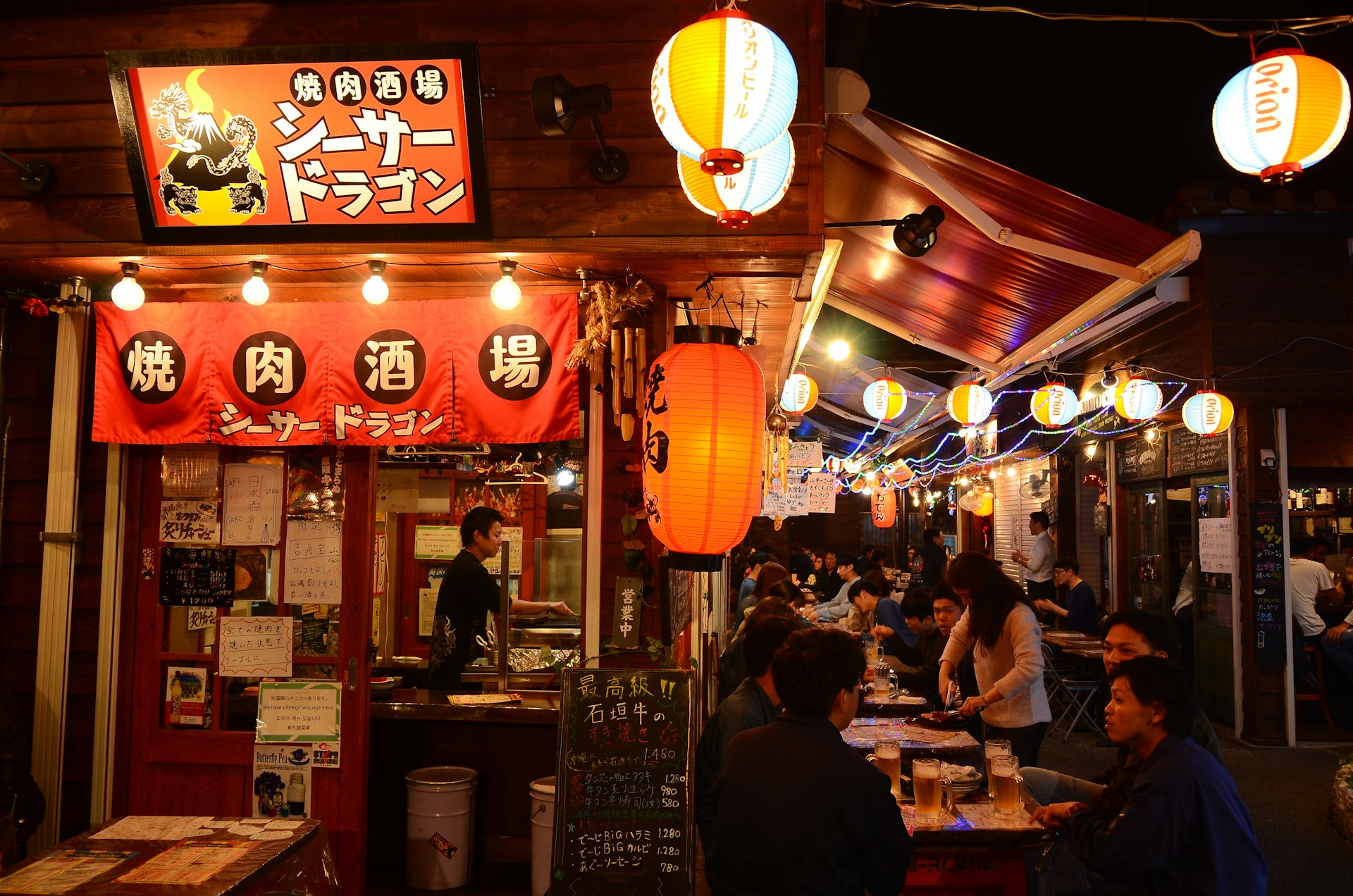
15. Choose the right dish in the right place to save money
You can get a good, filling meal in shokudō , Japan's answer to the greasy spoon, for under ¥1,000. A steaming bowl of tasty ramen can be picked up in many places for as little as ¥600.
Tachigui (stand-and-eat counter joints) sell soba (buckwheat noodles) and udon (thick white wheat noodles) for even less – starting as low as ¥350 per bowl.
Many upscale restaurants in Japan offer a smaller course at lunchtime for significantly less than they charge at dinner, so for a bargain deal have your larger meal then. In all restaurants in Japan, tea and water are complimentary, and tipping is not required.
16. Bentō are a budget alternative to a meal out
These "boxed meals," which include a variety of dishes, can be picked up for under ¥1,000 at supermarkets. Department store food halls sell gourmet ones for a little bit more; visit just before closing to buy them on markdown.
17. Get everything you need and more at the convenience store
Convenience stores are the best friend to all budget travelers. They stock sandwiches, rice balls, hot dishes and beer, all of which you can assemble into a very affordable (if not exactly healthy) meal. Accommodations always have kettles, so cup noodles are always an option.
Keep planning your trip to Japan:
Save this guide to the top things to do in Japan . Find out what to expect during every season from cherry blossoms to winter skiing . Before you book your trip, read these t op things to know before you go . Do you need a visa? Discover more here. Want to see Japan by train? Railway enthusiast John Walton shares his advice.
This article was first published May 15, 2012 and updated Mar 28, 2024.
Explore related stories
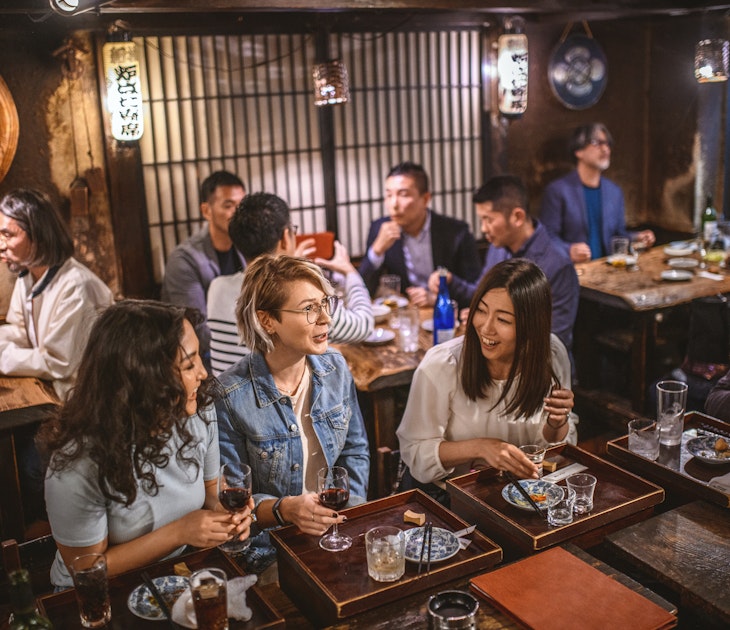
Budget Travel
Mar 23, 2024 • 7 min read
Tokyo is expensive but you don't need to max out your credit card to enjoy. Our insider tips and tricks will stretch your yen and save your bank account.
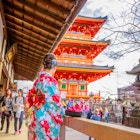
Dec 10, 2023 • 6 min read

Oct 20, 2023 • 13 min read

Jan 29, 2020 • 9 min read

Jan 12, 2020 • 5 min read

Oct 28, 2019 • 19 min read

May 3, 2024 • 14 min read

May 1, 2024 • 9 min read

Apr 14, 2024 • 6 min read

Apr 3, 2024 • 17 min read

The Cost of Travel in Japan: My 2024 Budget Breakdown
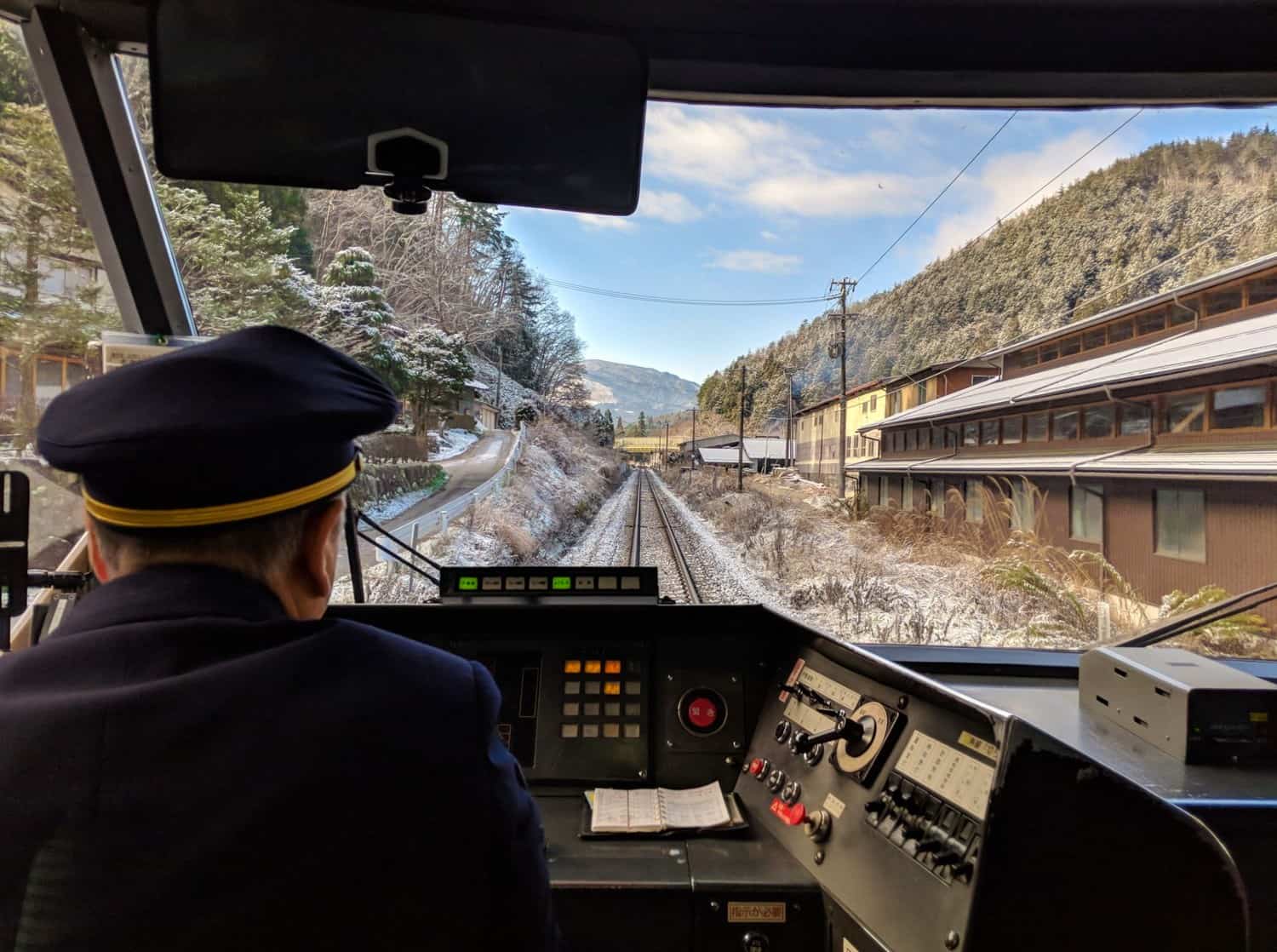
It took me six years to get to Japan.
I didn’t think I could afford it.
Every time I seriously looked into visiting, I would wince at the high cost of the train passes, read about how the hotels were super-expensive, and then fly to Vietnam instead. Or Taiwan. Or even Australia. Japan was simply too expensive for a budget traveller, so I decided to save it for when I was rich.
With that not happening any time soon, I decided to blow my money anyway, because I wanted to go and the gushing blog posts from travel writer friends had convinced me it would be worth the splurge.
Imagine my surprise, then, when I discovered that it really wasn’t that expensive.
I arrived in Japan fully expecting it to be the priciest country I’ve ever been to, but I discovered it’s more on a par with Western Europe or North America, and cheaper than Australia. It was way more affordable than Namibia , where my daily expenses came to $132, and way, way, way more affordable than the Democratic Republic of the Congo , where I averaged, um, $550 a day.
Anyway! This is about the cost of travel in Japan rather than my poor financial decisions, so let’s get started!
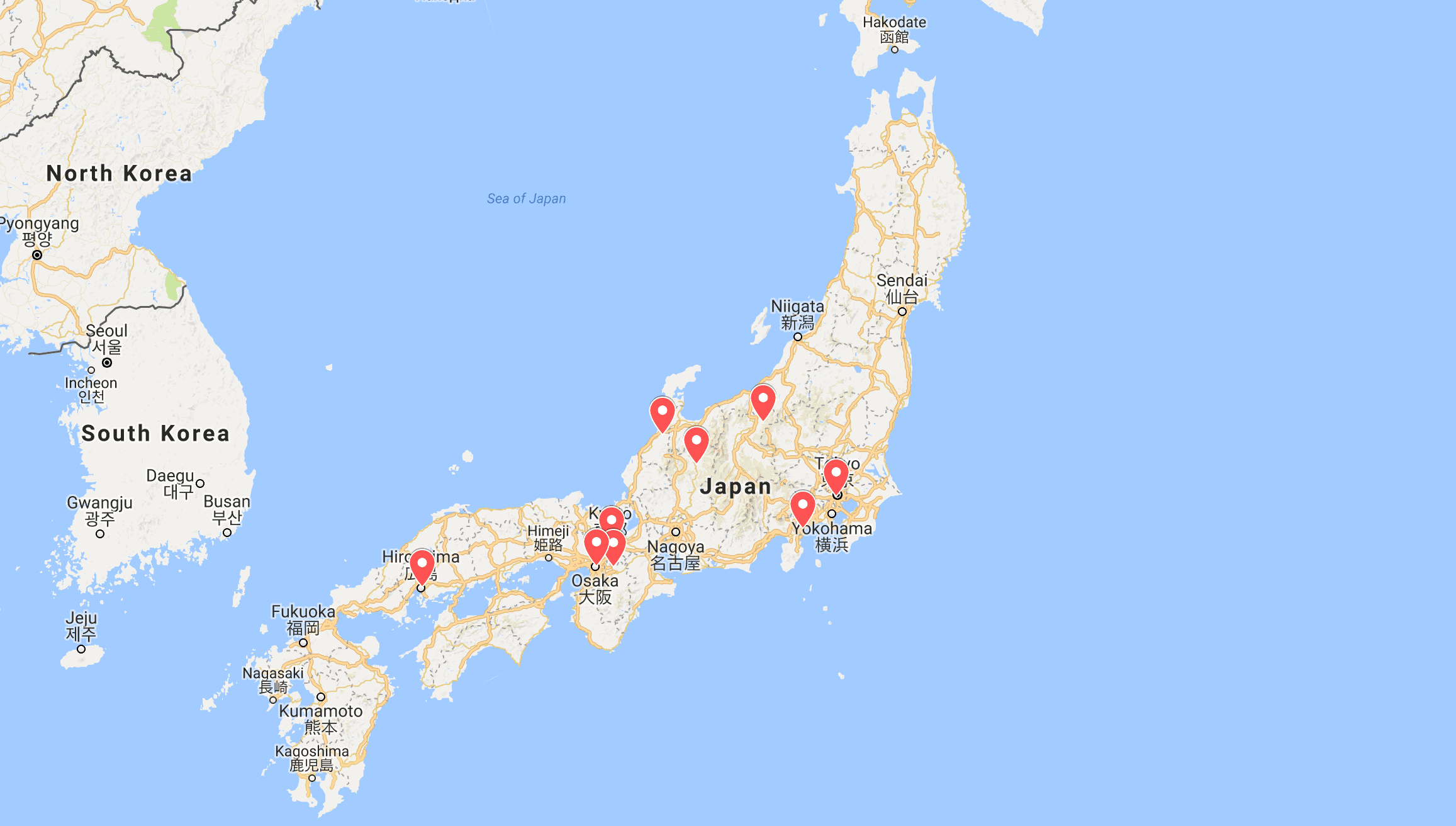
My 16-Day Japan Itinerary
Here’s a brief rundown of where I visited over my 16 days in the country — I think I managed to put together the perfect itinerary for first-time travellers to Japan .
Tokyo: 4 nights Hakone: 1 night Yudanaka: 1 night Kanazawa: 2 nights Takayama: 1 night Kyoto: 3 nights Hiroshima: 1 night Osaka: 3 nights
What’s Included in this Post
This budget breakdown covers how much I spent on accommodation, transportation, activities, food, and whichever miscellaneous items popped up while I was in country.
I’ve not included my flights into and out of Japan because this is going to vary significantly based on where you’ll be arriving from. In case you’re interested, though, I paid $320 for a return flight from Rome to Tokyo, which I scored through browsing my favourite site for flight bargains, Secret Flying .
The amounts in this guide are listed in Japanese Yen and U.S. dollars, simply because the vast majority of my readers are from the U.S. And finally, these are the three rules I always abide by on this site:
- I do not accept sponsored trips, so everything listed in this post is something I personally paid for with my own money
- I travel anonymously to ensure my experiences accurately reflect what yours will be. I don’t want special treatment!
- Every single word of this article was written by me, based on all of my own experiences. I strictly do not use AI to compose my guides.
Okay — let’s get started with my expenses.
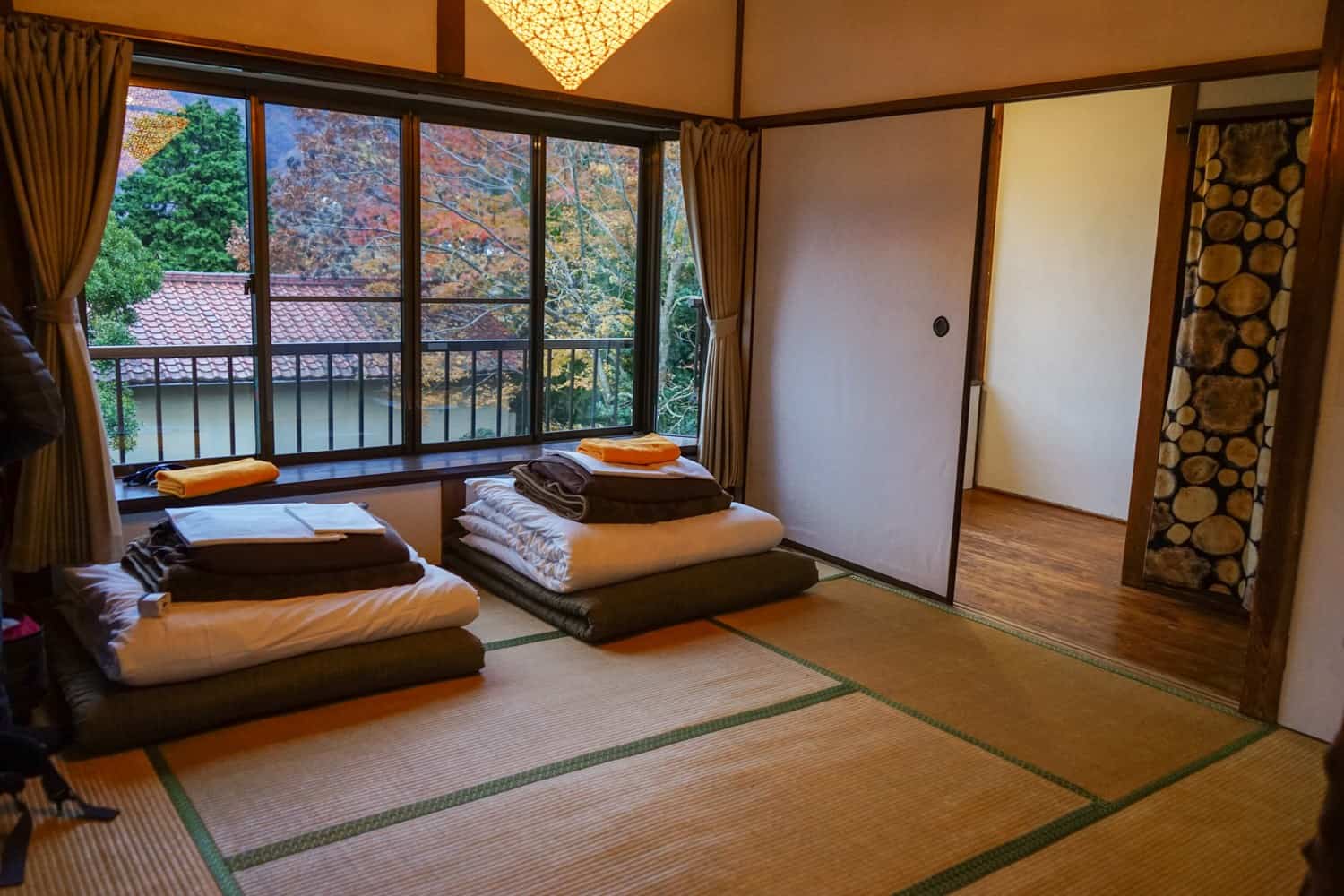
The Cheapest Accommodation Options in Japan
Like practically every country in the world, prices in Japan have increased post-pandemic.
In 2024, you’ll be paying a little more for everything than you would have done a few years ago — in fact, prices almost doubled between my first trip in 2017 and today! — however costs are still on a par with most Western countries. Travel in Japan shouldn’t be too devastating to your travel budget.
I’ll start on the lower end of the spectrum. If you’re willing to put in the time and effort, it’s possible to avoid paying for accommodation entirely.
Couchsurfing exists in Japan and allows you to stay with a local for free , usually sleeping on their sofa and enjoying a local’s insight into life in their country. Yeah, it’s not the most comfortable of living situations, but if your budget’s tight, it’s worth sending out a few requests to hosts to see if anything comes of it. You can browse through the 300,000+ Japanese hosts on the Couchsurfing site — just be sure to read the references of anybody you choose to stay with.
Housesitting is a more upmarket option, aimed at mid-range and luxury travellers. Housesitting involves taking care of somebody’s house for free while they’re away, often (but not always) looking after their pets, too. It’s best for long-term travellers or retirees, as you can’t pick and choose dates and destinations, so you’ll need to have a lot of flexibility as to where you go and at what time of year. If you do have that freedom, though, it’s a wonderful way to cut down your travel expenses, soak up some home comforts, and live like a local for a while. Trusted Housesitters is the main site for getting started with housesitting, as they have the highest number of listings.
Finally, when it comes to free accommodation, you could take a look at WorldPackers in Japan , where you’ll be able to volunteer for locals in exchange for food and board. There are some seriously cool options available on the site right now, from helping harvest honey for a bee farm in the countryside to lending a hand in the garden of a Buddhist temple. Readers of this site get a $10 discount for WorldPackers with the promo code neverendingfootsteps .
If you’re not looking to travel for free and just want a clean and comfortable room to sleep in, there are plenty of great budget options, too.
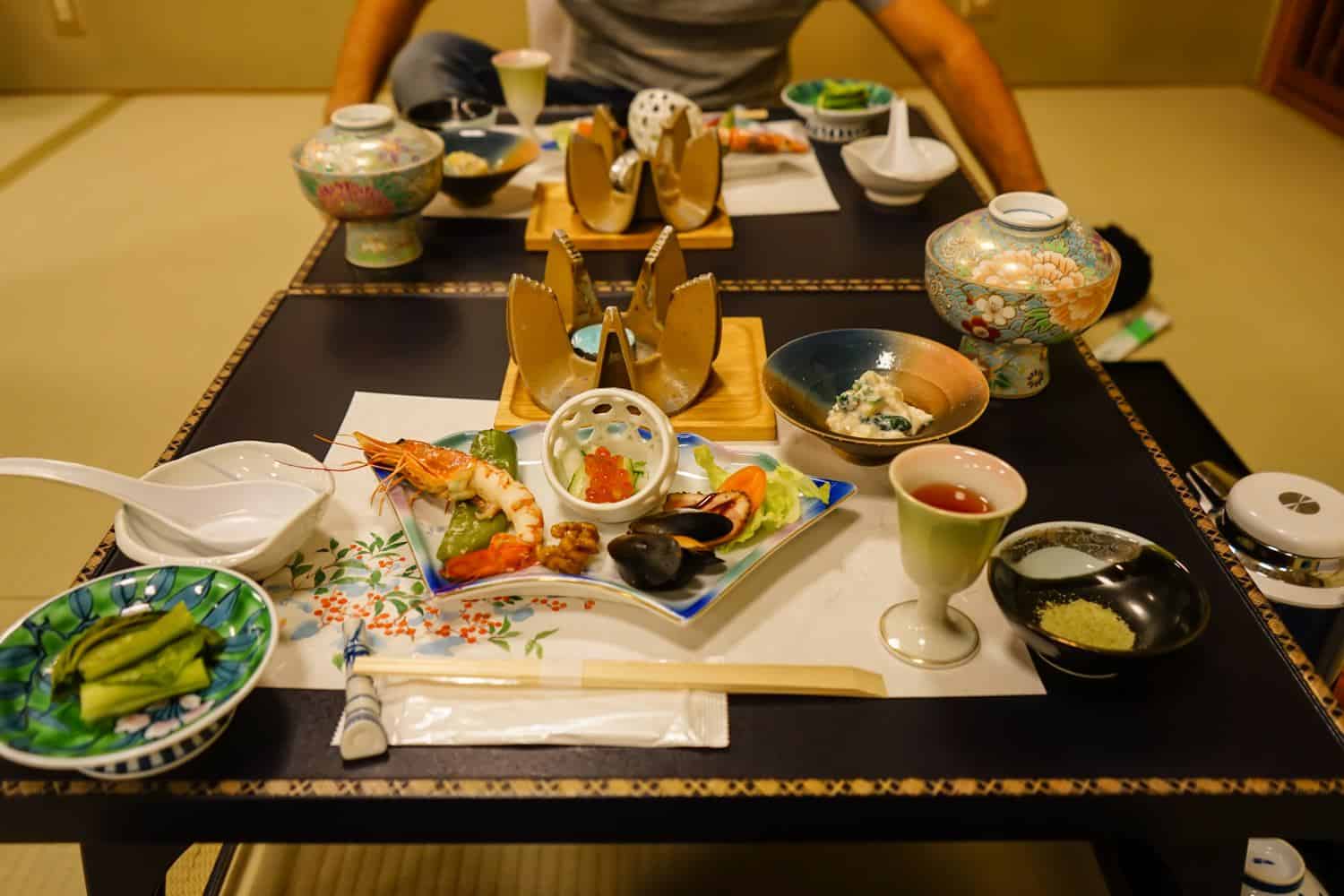
And then we have hostels . In Japan, you’ll come across hostels all over the country, finding them on tiny islands, large cities, and even within the national parks. They’re one of your best options for saving money.
Hostels in Japan are on a par with the rest of major cities in East Asia, and you can expect to spend $25 a night for a dorm bed for a well-reviewed hostel, with the price increasing slightly to around $45 a night for the absolute best of the best.
When it comes to private rooms in hostels, you’ll be looking at $50 a night for a clean, basic room in a good location, so if you’re travelling with friends or with your partner, you may find it cheaper to grab some privacy over settling for two beds in a dorm room. $90 a night will get you an exceptionally well-reviewed private room in a hostel.
I use HostelWorld to find the cheapest hostels, as they tend to have the greatest number of listings at the lowest prices.
And then there are hotels, which I’m going to jump into next.
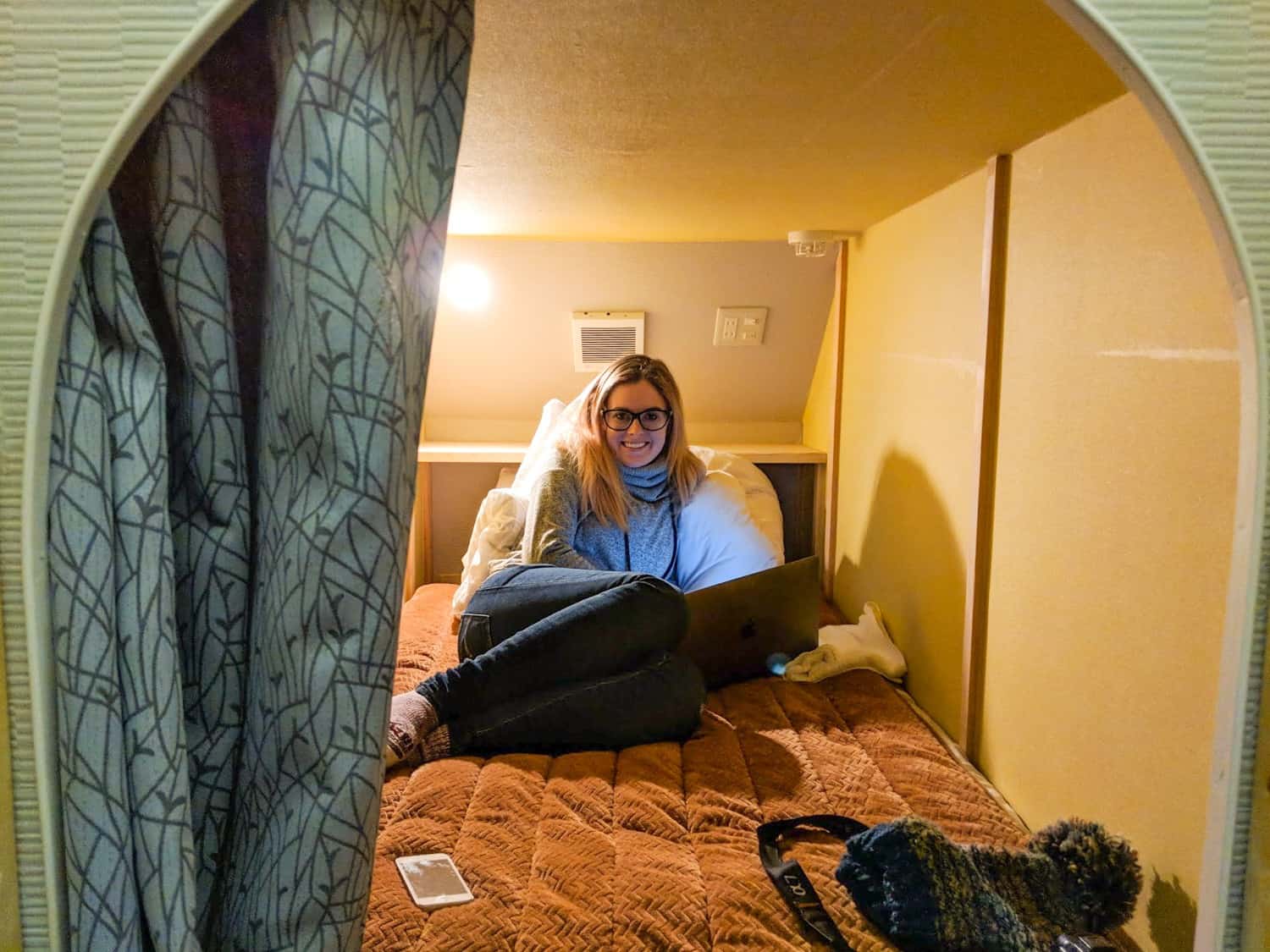
The Cost of Accommodation in Japan
There are so many different types of accommodation in Japan! I attempted to experience as many as possible while I was in the country.
I stayed in a capsule hotel, prioritised hunting down a ryokan, slept on a tatami mat floor, stayed in family-run guesthouses, and checked out some pretty cool hostels. While I did attempt to save money by staying in some cheaper places, I was also happy to splurge on extremely well-rated rooms, too.
As always with these budget breakdowns, I like to share the prices of where I personally stayed, along with a description of the property and whether I’d recommend choosing it, too — hopefully this helps make your trip planning easier!
I visited Japan with my partner, Dave, and we travelled on a mid-range budget; searching out good value accommodation that was highly-rated and in a central location. We prioritised locally-run properties that weren’t too flashy or fancy; for us, a cosy vibe, unique furnishings, and welcoming staff are far more important than the generic decor of a hotel chain.
(Oh and just a quick note: hotels do charge different prices across a range of dates, depending on how busy a certain travel period is going to be. Because of this, it’s hard to be super accurate in the costs that I list. To get to the quoted prices below, though, I looked at the rates across the next six months and took the average: it could be slightly cheaper or more expensive, depending on when you’re visiting.)
Tokyo: $135 a night Odds are, you’re probably going to kick off your Japan adventures in Tokyo, and if so, it only makes sense to really throw yourself into the local experience. That’s why we decided to stay at this lovely onsen-ryokan in Shinjuku. (Whenever readers ask me which neighbourhood to choose in Tokyo, I always recommend Shinjuku or Shibuya.) The reason why I loved this specific property, though, is because it’s a ryokan (traditional Japanese Inn) that also has an onsen (hot pool). It’s a great way to jump immediately into all things Japanese.
And it was wonderful; my favourite hotel in the country. The rooms were small and cosy and felt super-traditional and calming. The views over Tokyo at night from the window were incredible. And the rooftop onsen? With free popsicles afterwards? So good. It’s located in a quieter neighbourhood, but still only a 10-minute walk to the subway. I really recommend this one!
Hakone: $80 a night In Hakone, we opted for a private room in a lovely guesthouse , with a tatami mat floor to sleep on and a private onsen on-site. The photo of the tatami mat room above is of our room here. It ended up being another one of our favourite stays in Japan! The staff were lovely and there was a restaurant/bar that served up fantastic pizzas. It had a cosy and chilled-out atmosphere, with great food and wine, and lots of blankets to snuggle up with as we ate. It was also worth staying here just to experience the private onsen — we got to go in as a couple!
Yudanaka: $105 per night In Yudanaka, we opted for a stay in a wonderful little ryokan ; this one was even more traditional than the one in Tokyo! Often, ryokans can be super-expensive in Japan — as much as $500 a night for the experience — so I was thrilled to have stumbled across a more budget option in Yudanaka. It was run by an adorable Japanese couple and their house came with a private onsen, return transport to see the snow monkeys , and one of the most extravagant meals of my life. A kaiseki is a multi-course (like, 20 courses) meal that will see you eating roughly a week’s worth of food in a single night, sampling fresh, local-to-the-region Japanese cuisine. It was phenomenal, and I loved having no idea what anything was. It even included homemade plum wine, which was so good! I highly recommend the experience (although strongly advise you not to add breakfast to your booking — we were still so full that we couldn’t eat any of it!)
Kanazawa: $65 per night Kanazawa is home to some seriously cool accommodation! We had a hard time choosing where to stay because every property looked so cosy and inviting. In the end, we settled on this minimalist, modern set-up — it was great value for money relative to most other places we stayed in Japan, especially when you consider it’s only been open a year. It’s in a great location, right outside Omicho Market, where you’ll sample the best sushi of your life. Also within walking distance is Kanazawa Castle and Kenroku-en Garden, so you’re really staying in the heart of it all. I recommend signing up for the traditional Japanese breakfast, as you’ll likely not have had anything else like it before! There’s also an onsen and laundry facilities (always appreciated mid-trip!), and the staff were so sweet and kind.
Takayama: $76 per night In Takayama, we stayed in a small, locally-run guesthouse in the centre of town. It felt like particularly good value for Japan, as it was one of the few places we stayed that you could describe as spacious! It even had a kitchen and washing machine. The beds were comfortable and the hotel was within walking distance of everywhere, including the train station. It was quiet, the staff were lovely, and overall, it made for a comfortable stay!
Kyoto: $84 a night In Kyoto, we stayed in a cosy hotel in the heart of town — we loved this place so much in 2017 that when we returned to Japan this year, we knew we’d have to stay there again! The property was in a fantastic location for exploring Kyoto and the bathrooms were nicer than anywhere else we stayed. It’s one of the top-rated guesthouses in the city — while also being one of the cheapest — so when you take that into consideration, I’m convinced you won’t find anywhere better to stay in Kyoto.
Hiroshima: $40 per bed In Hiroshima, we opted for a capsule-style hostel because I didn’t want to leave the country without trying one — you can see a photo of the “capsule” at the top of this section. Fortunately, we found ourselves in a room with only two other people staying there, so our capsule room with 20-odd beds was light on snorers. The owner of this place was ridiculously lovely and it was within walking distance of all of the monuments and activities. Really great bathrooms, a fun common area, and a cheap price: surprisingly, I would have stayed another night!
Osaka: $108 a night I rounded off my time in Japan with a little bit of a treat, opting for this four-star hotel that offered a ton of freebies. It’s all about the onsen here — it’s open all day and is simply beautiful. After you’ve finished your daily bathe, there’s free ice cream to eat, free comics to read, massage chairs to relax in, and even free ramen to slurp on. Yes, really! It was in a great location for Osaka — just a couple of blocks from the nearest metro station. The decor was calming and traditional; the perfect way to say goodbye to Japan.
In total, I spent an average of $97 per day on accommodation over my 16 days in Japan.
The Cost of Transportation in Japan
Okay, so let’s talk about transportation now. And specifically transportation post-2024.
It used to be the case that practically every visitor to Japan would invest in a JR pass (a train pass that grants you unlimited rides over a certain time period). After all, the best way to explore this country is by train, and by buying said rail pass, you’d be saving a significant amount of money on your trip — especially if you were taking a similar route to my one. A JR Pass pre-October 2023 would have saved me a whopping $175 over buying individual train tickets.
Seems like a no brainer, right?
In October 2023, the Japan Rail Pass skyrocketed in price. No exaggeration here: prices increased by an incredible 70% .
What a baffling decision.
What that means is that it’s not such a clear-cut decision anymore. The Japan Rail Pass still holds some benefits: If you’re a first-time visitor to Japan and don’t feel too confident about buying multiple single-journey train tickets, the pass will make it a lot easier: you just show it at any station and get on a train. You won’t need to worry about any extra charges and will have the flexibility to take train-based day trips whenever you want.
For most travellers, however, the value proposition is simply no longer there. For example, my recent 16-day itinerary (Tokyo – Hakone – Tokyo – Nagano – Kanazawa – Takayama – Kyoto – Nara – Kyoto – Hiroshima – Osaka) cost me 50,000 Yen ( $350 ) with single tickets. However, a 14 day rail pass is priced at 80,000 Yen ( $530 )!
Alas, the Japan Rail Pass is no longer something I recommend — unless you’re going to be taking enormous, lengthy rail journeys (like across the whole country) in a short period of time. Alternatively, if you do want that added sense of security and ease by not having to juggle a dozen train ticket bookings, you may find the extra price worth it.
So with all that being said: you’re most likely going to be using the JR West website to book your single train tickets online. This covers the entirety of Japan that’s west of Tokyo (all of the places I visited were west) and allows you to book your train tickets all in one place — and then you can reserve a seat on said train one month before its departure date. Honestly, it’s pretty easy to use, book, and reserve — and being able to do it all online means you can get everything sorted before you step foot in the country.
Let’s take a look at the some of the prices that a typical train journey in Japan costs — in this case I’ll use my itinerary mentioned above to plot out the costs:
Tokyo – Hakone: 2,500 Yen ( $17 ) Hakone – Tokyo: 2,500 Yen ( $17 ) Tokyo – Nagano: 7,500 Yen ( $50 ) Nagano – Kanazawa: 8,500 Yen ( $57 ) Kanazawa – Takayama: 5,000 Yen ( $33 ) Takayama – Kyoto: 9,000 Yen ( $60 ) Kyoto – Nara: 700 Yen ( $5 ) Nara – Kyoto: 700 Yen ( $5 ) Kyoto – Hiroshima: 10,500 Yen ( $70 ) Hiroshima – Osaka: 10,000 Yen ( $67 )
So if you were to replicate my Japan route exactly, you would end up spending $381 on rail tickets. It sounds like a lot of money but I do want to stress that the trains in Japan are some of the best in the world. They’re spotless, comfortable, modern, and lightning-fast. You will feel like you’re travelling in luxury.
If you’re not down to spend hundreds of dollars on trains, then the buses are going to be your best option. They’re cheaper, slower, less comfortable, often run overnight, and are complicated to book. The best sites I’ve found for booking long-distance buses is Willer Express and Japan Bus Online — but even they don’t run buses for several of the routes I took on my trip.
I thought it would be a good idea to share the cost of buses for the trip I took, so that you can compare them to the train and see how much money you could save.
Tokyo – Hakone: 2,250 Yen ( $15 ) Hakone – Tokyo: 1,800 Yen ( $12 ) Tokyo – Nagano: 2,200 Yen ( $15 ) Nagano – Kanazawa: No bus for this route Kanazawa – Takayama: 3,300 Yen ( $22 ) Takayama – Kyoto: 3,800 Yen ( $25 ) Kyoto – Nara: No bus for this route Nara – Kyoto: No bus for this route Kyoto – Hiroshima: 4,300 Yen ( $29 ) Hiroshima – Osaka: 4,000 Yen ( $27 )
As you can, see prices are generally around half what they are for the trains. You’d be looking at paying $212 in total for taking the bus, with three trains replacing the routes where I couldn’t find any existing buses.
We’ve covered the main ways to get in between the destinations, so now it’s time to take a look at how much you could spend on transportation within the cities.
Fortunately, this was where I found Japan to be really affordable. I love to explore cities on foot and I found many of the places I visited to be surprisingly walkable. In total, I spent $6 on the metro in Tokyo, $7 on the metro in Osaka, and $2 on the metro in Kyoto! Everywhere else, I just walked.
A reasonably big expense was our Hakone Free Pass (spoiler: not free), although this was more of a combined transportation and activity cost. At a cost of 6,100 Yen, or $41 , It provides you with unlimited transport around Hakone (where you’ll find Mount Fuji), and discounted entrance to all the attractions in town. If you’re going to Hakone, this will save you money because it covers everything you’ll definitely do there.
The Cost of Food in Japan
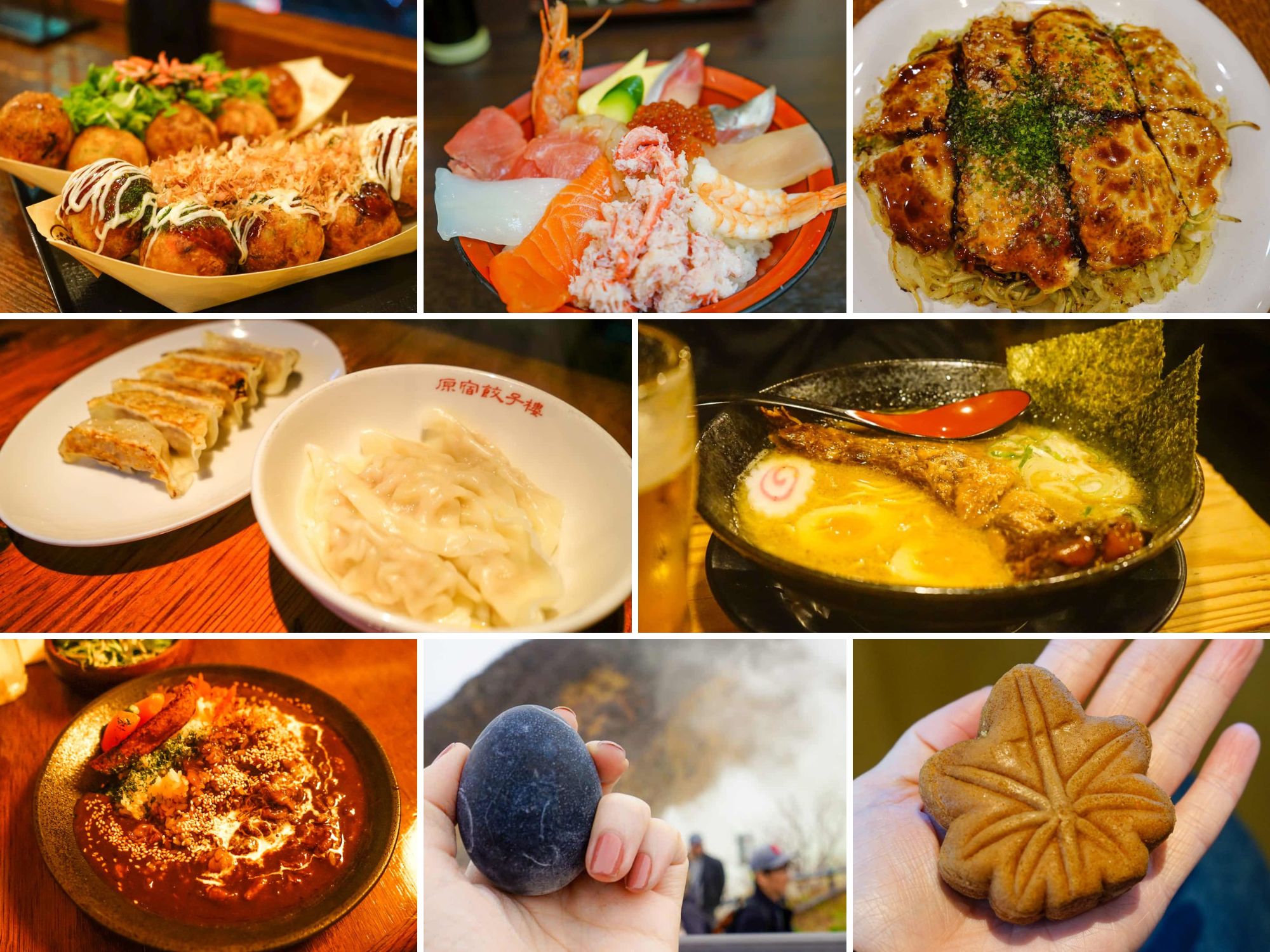
If you love Japanese food but have yet to travel to its homeland, you have such a treat in store for you. The food in this country is phenomenal; packed full of flavour and surprisingly inexpensive. It’s true: eating out is the easiest way for you to cut costs in Japan.
In fact, the vast majority of my meals in this country came to less than ¥1000 ($6.50) .
I’ll start first by breaking down the typical costs that you can expect to spend on the most well-known of Japanese dishes. Then, I’ll cover what you’ll be likely to eat for breakfast, lunch, and dinner, along with the costs associated with each of these meals. Finally, I’ll round out the section off by sharing some of my favourite food experiences in the country and describe which options are worth a splurge and which ones you can happily skip.
You can’t think of Japan without picturing sushi, so that feels like the most logical place to start. If you eat fish, this is going to be such a revelation for you! The sushi and sashimi in Japan is better than any I’ve had in the world and it was here that I finally understood how raw fish could ever be described as buttery.
To combine your sushi/sashimi-eating with a cultural experience, head to Tsukiji Outer Market in Tokyo or Omicho Market in Kanazawa. For a bowl filled with a selection of sashimi, like in my photo above, you’ll pay between ¥1,800 and ¥4,000 , depending on the size and quality of the fish. That’s the equivalent of $12-$25 .
Slurping on a steaming bowl of ramen is my personal definition of a true travel joy, so I opted for this cheap and cheerful dish most evenings as a way to save money. Note: the ramen in Japan is incredible , so don’t interpret my frugality as a hardship. Once you’ve tried the ramen here, I’d be surprised if you didn’t immediately start planning a return visit.
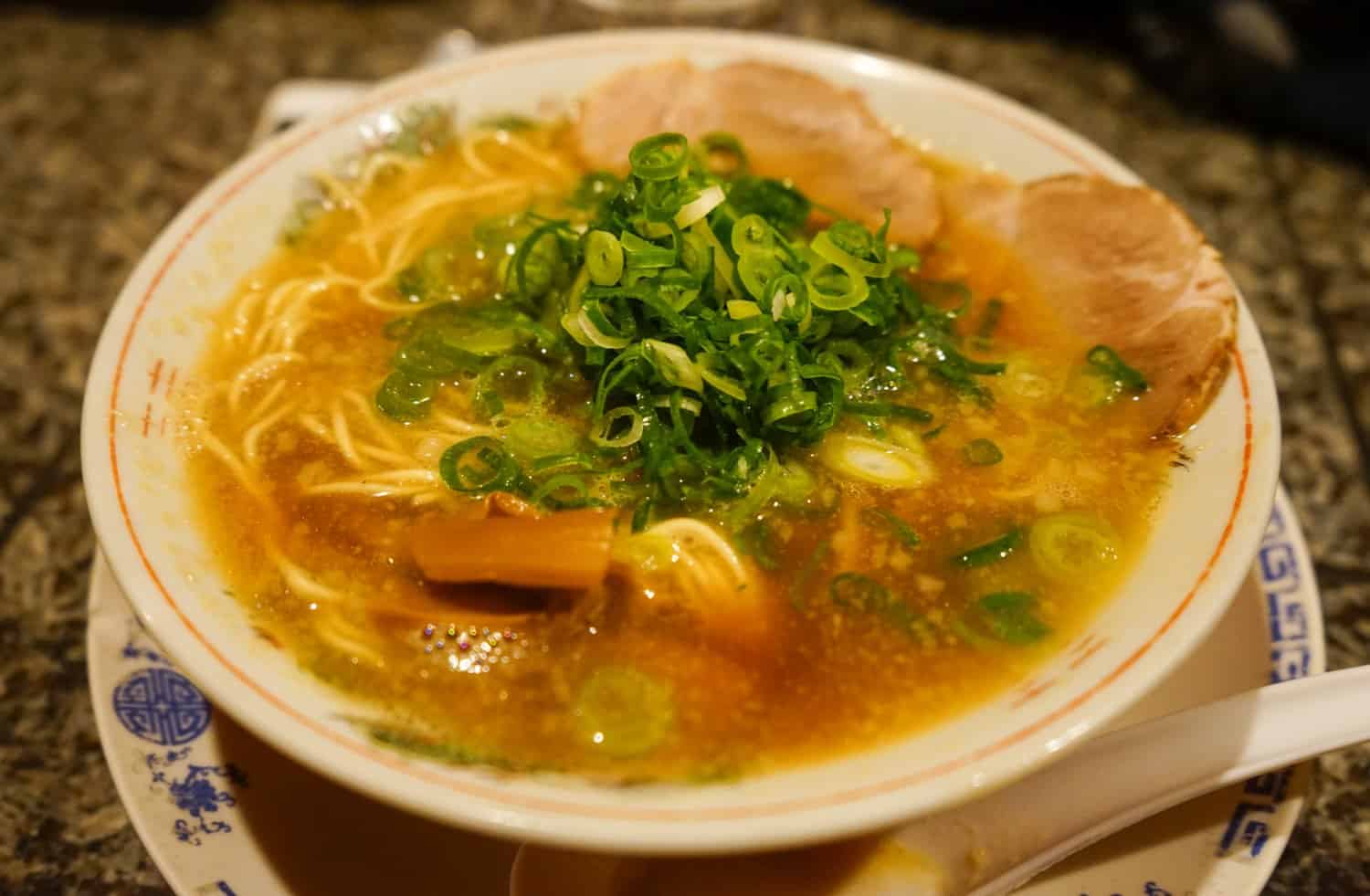
One of my favourite aspects of ordering ramen in Japan is how you’re given the option to customise the dish to your own tastes. It’s not uncommon to be handed a small slip of paper where you’ll get to mark down all of your preferences. Do you want your broth to be rich or light? Your noodles to be firm or soft? Added spiciness or none at all? Extra spring onion? A hard- or soft-boiled egg? Most options come out to ¥1000 ($6.50) for a bowl of pork ramen.
Speaking of cheap and delicious food options, I highly recommend sampling a couple of versions of okonomiyaki while you’re in town. This savoury pancake dish is so delicious, extremely filling, and inexpensive at just ¥1000 ($6.50) – ¥1500 ($10) . The cities of Osaka and Hiroshima each offer up their very own version of okonomiyaki and strong opinions are held by many over which is best! If you’ll be heading to both destinations, make sure you try one of each and let me know which is your favourite.
A dish that I tried for the first time while I was in Japan was Japanese curry and what a wonderful experience that turned out to be! In comparison to Indian curries, I found the Japanese version to be richer, sweeter, and less creamy, with plenty of umami vibes. Once more, you can expect to pay ¥1000 ($6.50) for a plate of katsu (pork cutlet) curry.
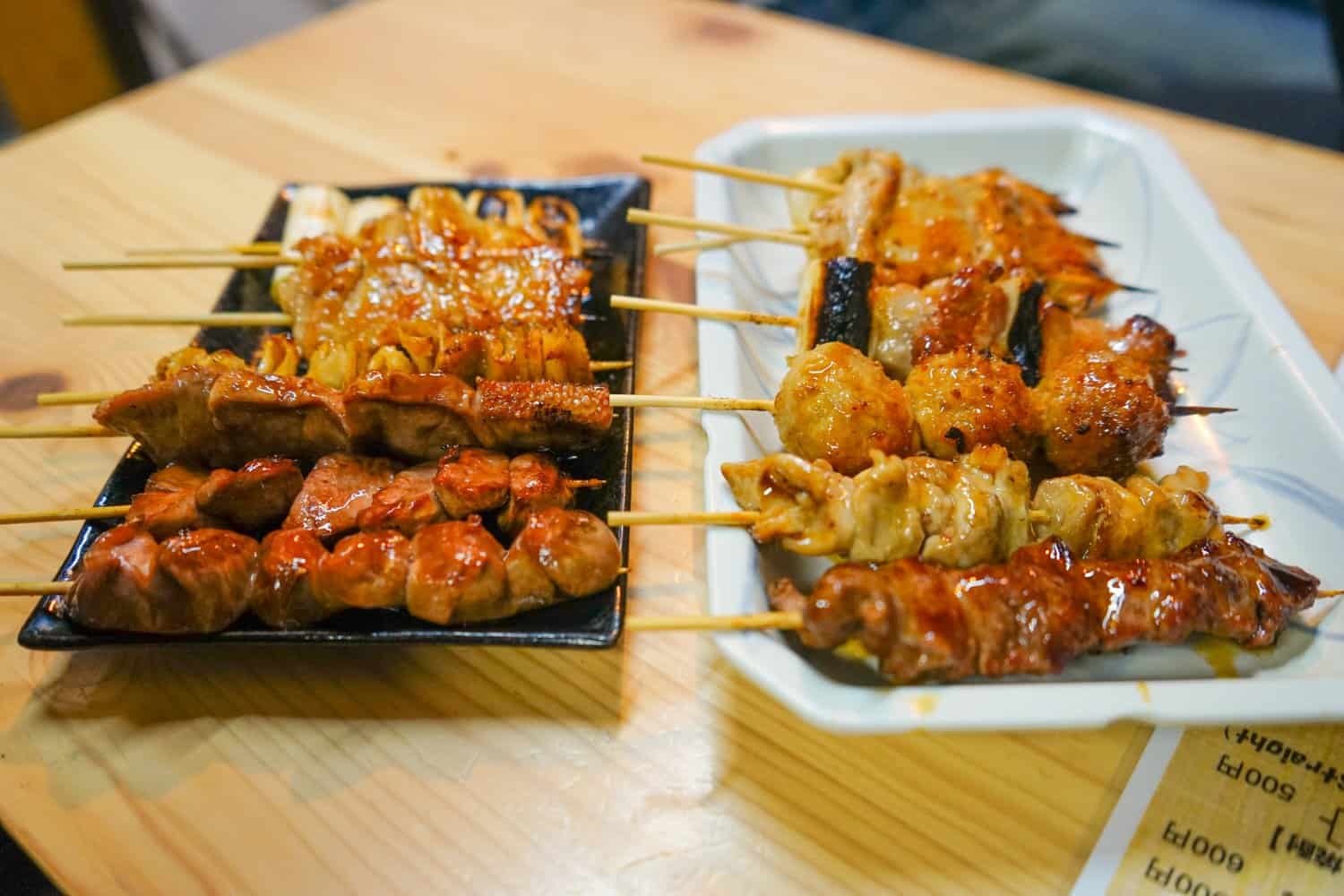
One of the most delightful aspects of my Japanese eating experiences was sampling all of the different snacks in the country.
Street snacks like takoyaki were ¥500 ($4.50) . We splurged on our kaiseki experience at our guesthouse in Yudanaka and paid ¥4000 ($36) for our food extravaganza. It’s a budget option compared to many other kaisekis, which can easily come to $100 for the experience, but still our most expensive meal. Another splurge was on sushi in Kanazawa, which I paid ¥2000 ($18) for.
Whether you’re on a budget or ready to splurge, it’s essentially impossible to eat badly in Japan. If you’re on a really tight budget, you can even get surprisingly decent food from 7-Eleven !
My total cost of food in Japan averaged out to $23.20 per day.

The Cost of Activities and Entrance Fees in Japan
Activities and entrance fees in Japan were very reasonably priced, and I never found myself outraged over the cost of anything. You’ll typically pay less than $5 to enter most temples, museums, and gardens.
Here’s how I spread my cash around:
Entrance fee for the hedgehog cafe in Tokyo: $13/1400¥ Entrance to the Snow Monkey Park : $7/800¥ Entrance to Kenroku-en gardens in Kanazawa: $3/310¥ Entry to the Golden Pavilion in Kyoto: $3/300¥ Entry to Ryoan-ji zen garden in Kyoto: $5/500¥ Ticket for the Hiroshima Peace Memorial: $2/200¥
My total cost of activities in Japan averaged out to $2 a day.
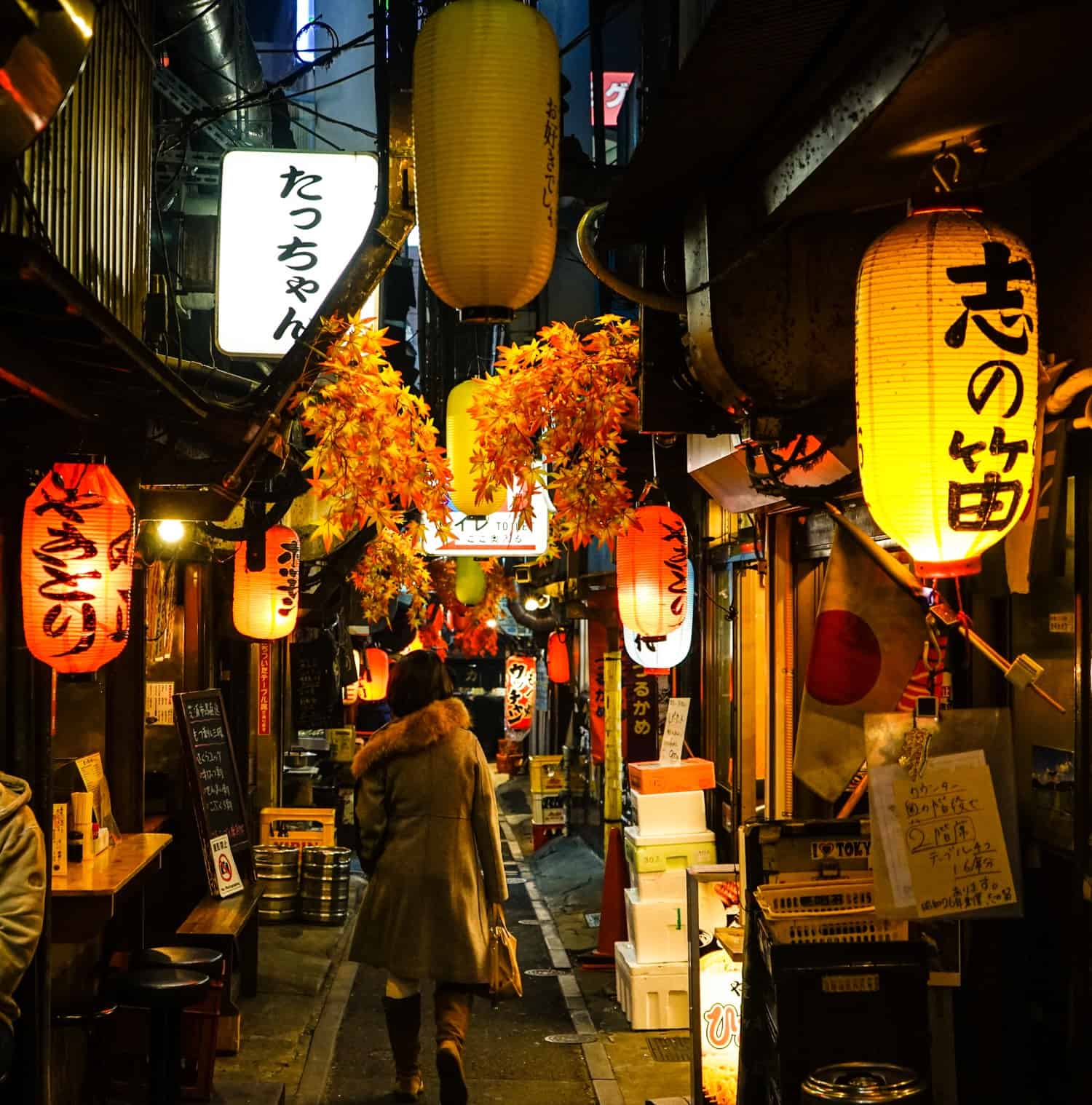
Miscellaneous Expenses in Japan
A local SIM card: $14
I mentioned above that I was able to buy a local SIM card when I purchased my rail pass. If you aren’t going to be using a rail pass in Japan, I recommend taking a look at Airalo instead. Airalo is a company that sells local e-SIM cards for travellers. What that means is that you can buy a virtual SIM card online before you arrive in Japan, and then as soon as you land in the country, can switch on your data and start using it.
It’s worked flawlessly for me and I’ll never go back to physical SIM cards. It’s just so easy! You’ll pay $6 for 1 GB of data or $14 for 3 GB for Japan and can also top-up through the Airalo app.
If you’re going down the Airalo route, just make sure your phone is e-SIM compatible first (all recent iPhones and many Androids are).
Insight Guides guidebook to Japan: $10
My sister bought me this guidebook as a gift before I left for Japan and at first I was like, Insight Guides? Meh. I wish she’d got me the Lonely Planet instead. Then when I opened it up and started reading, I swiftly discovered that Insight Guides are my new favourite guidebook company. It was so, so useful!
What I love about Insight is that their books focus heavily on the history and culture of Japan, with big, beautiful pictures, tons of information about local customs, food, and how to travel responsibly and respectfully. I recommend picking up a copy before your trip to Japan, but not taking it to the country with you — they’re big and heavy, so this is one for inspiration, planning, and education.
Luggage storage at Snow Monkey Park near Yudanaka: ¥500 ($4.50)
We had our backpacks with us when we visited the snow monkeys, so utilised the on-site storage facility while we hiked up the mountain in the snow. You can also hire snow shoes and winter gear if you’re unprepared for the climb, but I was fine in my totally impractical sneakers.
Travel insurance for 16 days in Japan: $60
If you’ve read any other posts on Never Ending Footsteps, you’ll know that I’m a great believer in travelling with travel insurance. I’ve seen far too many Go Fund Me campaigns from destitute backpackers that are unexpectedly stranded in a foreign country after a scooter accident/being attacked/breaking a leg with no way of getting home or paying for their healthcare. These costs can quickly land you with a six-figure bill to pay at the end of it.
In short, if you can’t afford travel insurance, you can’t afford to travel.
Travel insurance will cover you if your flight is cancelled and you need to book a new one, if your luggage gets lost and you need to replace your belongings, if you suddenly get struck down by appendicitis and have to be hospitalised, or discover a family member has died and you need to get home immediately. If you fall seriously ill, your insurance will cover the costs to fly you home to receive medical treatment.
I use SafetyWing as my travel insurance provider, and recommend them for trips to the Japan. Firstly, they’re one of the few companies out there who will actually cover you if you contract COVID-19. On top of that, they provide worldwide coverage, don’t require you to have a return ticket, and even allow you to buy coverage after you’ve left home. If you’re on a long-term trip, you can pay monthly instead of up-front, and can cancel at any time. Finally, they’re more affordable than the competition, and have a clear, easy-to-understand pricing structure, which is always appreciated.
With SafetyWing, you’ll pay $1.50 a day for travel insurance.
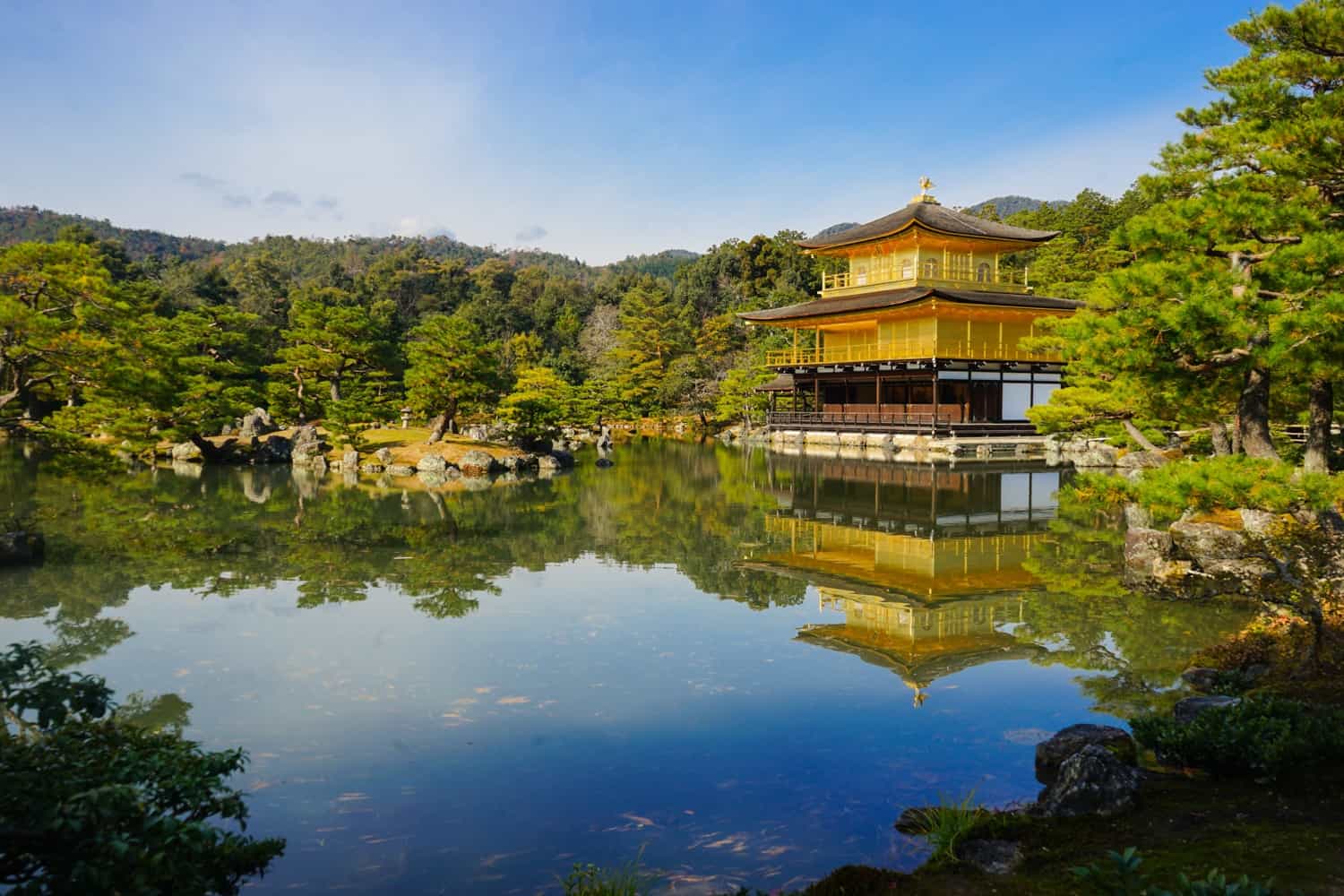
How I Track My Expenses While I Travel
Every time I share my expenses, you guys always want to know how on earth I manage to keep track of so many details from my travels!
Because Never Ending Footsteps is my company, the vast majority of my travel expenses are business expenses. I therefore studiously record everything I spend everywhere I go. I take photos of every receipt I receive and use Xero accounting software to record these expenses. In cases where I can’t get a receipt, I’ll take a photo of the price list and my ticket or food, or something as evidence.
Once a week, I then sit down and spend an hour or so uploading my receipts to Xero and making note of every penny I spent in each country I visit. It makes writing these posts super easy!
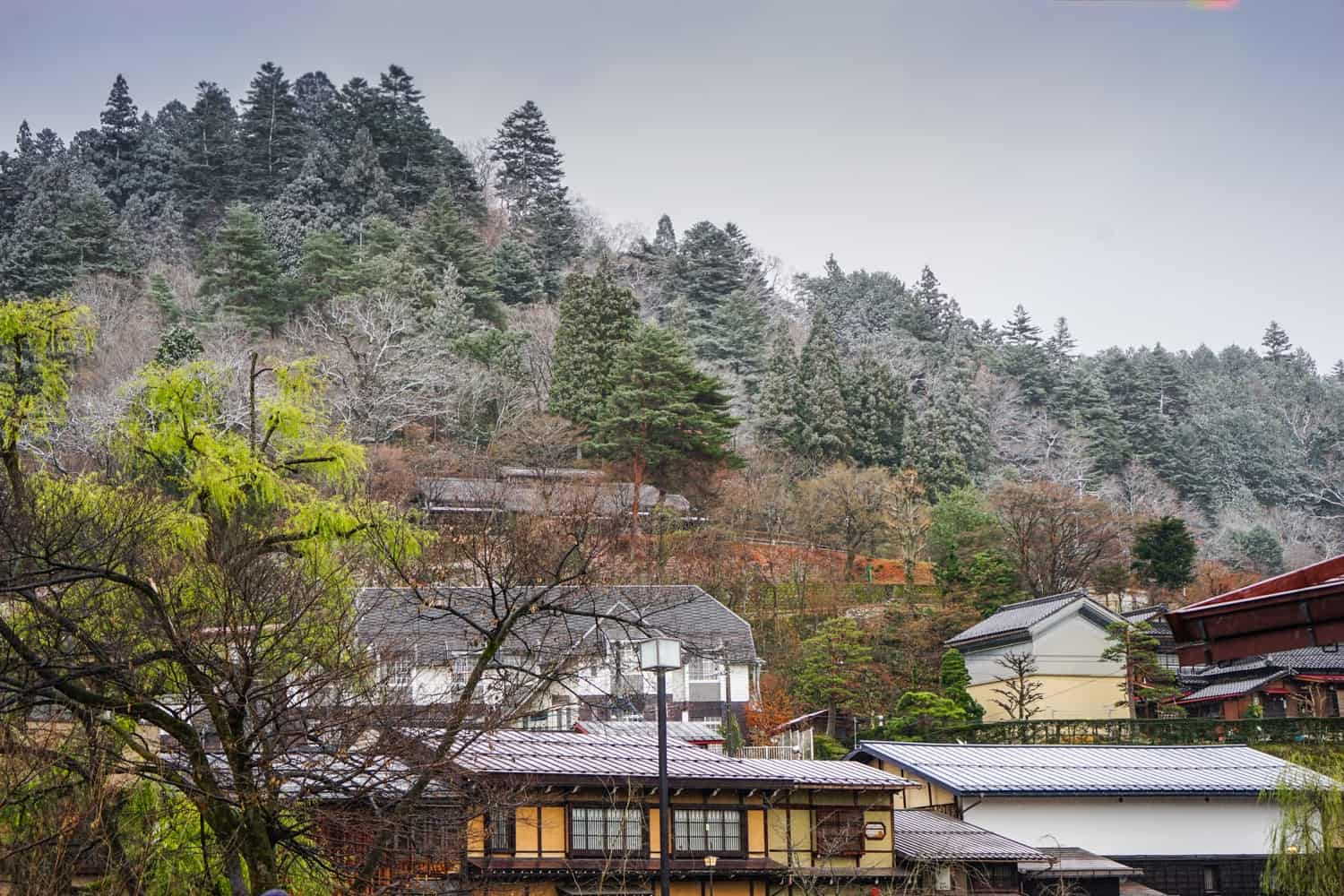
How Much Does it Cost to Travel in Japan?
It’s time to tally up all of my expenses to see my total travel costs!
Accommodation: $97 per day Transportation: $27 per day Food: $23 per day Activities/Entrance Fees: $2 per day Miscellaneous: $2 per day
Average amount spent in Japan: $151 a day!
I don’t know about you, but given Japan’s pricey reputation, I’m fairly impressed with the amount I spent in the country, especially as I included quite a few splurges in there.
How about you? How expensive were you expecting a trip to Japan to be?
Related Articles on Japan 🇯🇵 What’s it Like to Travel in Japan? 🏯 How to Spend Two Weeks in Japan: An Itinerary for First-Time Visitors 🍣 15 Weird and Wonderful Things to Eat in Japan 🎌 23 Incredible Things to Do in Osaka, Japan 🗼 21 Spectacular Things to Do in Tokyo, Japan 😎 Hipster Harajuku: The Coolest Neighbourhood in Tokyo 🦔 Should You Go to a Hedgehog Cafe? My Experience in Japan 🐒 Why Seeing the Snow Monkeys in Japan Sucked
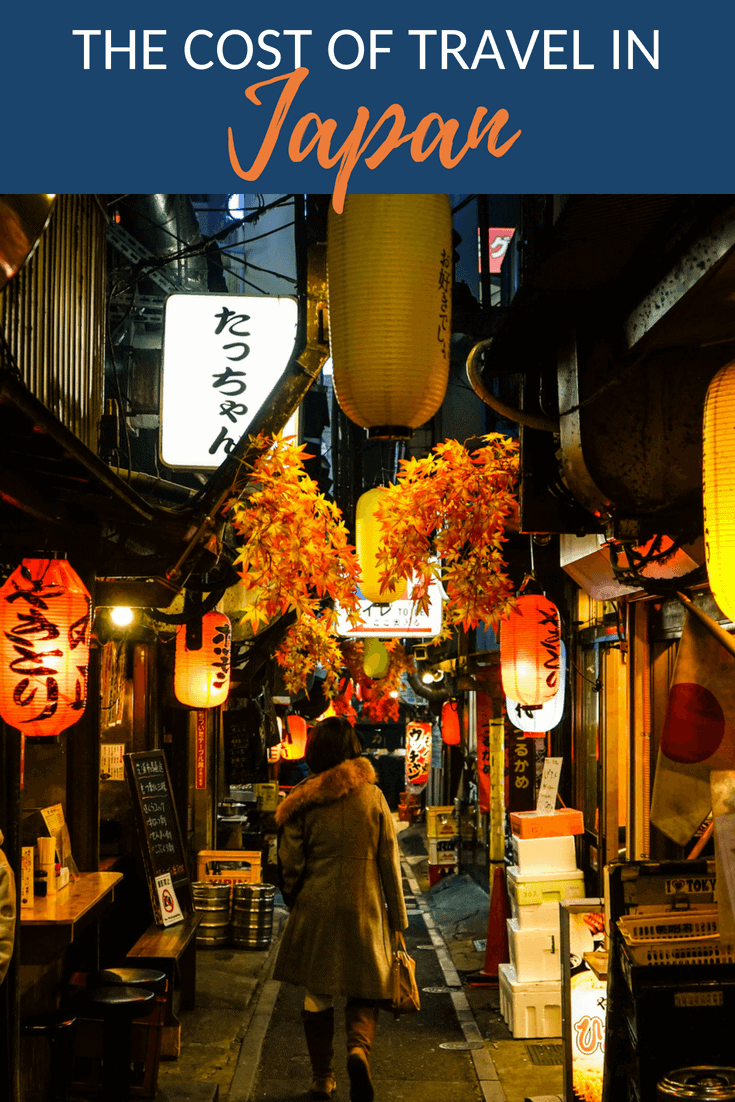
Lauren Juliff
Lauren Juliff is a published author and travel expert who founded Never Ending Footsteps in 2011. She has spent over 12 years travelling the world, sharing in-depth advice from more than 100 countries across six continents. Lauren's travel advice has been featured in publications like the BBC, Wall Street Journal, USA Today, and Cosmopolitan, and her work is read by 200,000 readers each month. Her travel memoir can be found in bookstores across the planet.
Related Posts

The Cost of Travel in Mauritius: My Detailed Budget Breakdown

The Cost of Travel in Thailand: My Detailed Budget Breakdown

2023: My Travels in Review

The Cost of Travel in South Korea: My 2024 Budget Breakdown

How to Spend Three Perfect Days in Delhi: An In-Depth Itinerary

Pushkar Travel Guide: 11 Things to Do in Pushkar
106 comments.
Wow! that’s amazing. I especially got fascinated seeing the capsule hotel…must have been a unique experience.
It was surprisingly cosy! I would totally stay in one again.
Thank you so much for your information. We will go to Japan in October 2023 for 1 month. Have paid fully for 16 days. Using your guides to budget the remaining 2 weeks. Thanks again.
This is great! Do you think it would be much more expensive in summer or any of the peak holiday seasons? I’m going over July this year and wondering if the prices change much with the seasons.
Wow! That’s quite an eye-opener! I’ve wanted to visit Japan for years, and this has certainly nudged me a little closer, as I assumed it was expensive too. The costs seem much better than I found in Amsterdam this spring! (my boyfriend still gets a thousand-yard stare when I mention how much we paid for drinks in one bar.)
Yay! Yeah, it really did feel about the same price as Western Europe, if not cheaper. The transportation is more expensive, but the food was cheaper in Japan.
This is super awesome! I, too, was under the impression that Japan was a super expensive place to visit! Good to know that you can save so much on accommodation and activities! Are you going to be posting about food in Japan? My knowledge of what to eat there is very minimal…
Yes! I published a guide to my favourite things to eat in the country last week: https://www.neverendingfootsteps.com/best-food-japan/
Ditto for here in New Zealand Lauren. All said it would be expensive. But we house sat – rent-free – and saw that food and travel are on par or cheaper than New Jersey. We also saw that virtually all things are cheaper than folks said. Methinks many labeling Japan and NZ as expensive as can be are used to paying $1 for lunch in Chiang Mai LOL. Budget folks see all Western lands as expensive. Granted I am from NJ; living by NYC makes for a high cost of living. But not bad at all, living in these lands.
Yeah, definitely true. I know that when I wrote off Japan as being too expensive, it was in the early days of my travels, when I could only afford to live in Southeast Asia!
Loving the posts about Japan so far. Do you have many more articles planned? I’ve a trip booked in November and this has been the most useful of the blogs so far for help in planning – thank you. Although I’ve had to cut the hedgehog cafe off my plans after reading your article as I hadn’t quite considered the ethics enough!
Yes! So many. I’ll probably post another half a dozen or more over the next few weeks :-)
I always assumed Japan to be very expensive. Thanks to your blog I don’t anymore. Cheers!
This is all very useful info! I’m impressed with your budgeting skills. Awesome, Thanks for sharing this!
Ha! Thank you :-) It comes naturally (finally) after seven years of doing this.
Great article. I’m planning a visit for early 2025 to go with my grandson … was the budget breakdown for one person or a couple … because you mentioned going with your partner?
The accommodation prices are the total cost of the room (rather than just my share), while the transportation, food, and activities are all my share of the costs.
Fantastic article. Love your budget posts because you never leave anything out.
I try not to! Thanks so much :-)
Beautiful photos, Japan look amazing and thank you for sharing your budget tips as well. :)
No problem! :-)
Thank you so much for this! I’m going to Japan in September and I’ve been worrying about my budget. This has definitely put my mind at rest!
Yay! Happy to hear that :-)
I’m so happy that you have posted so much lately, you’re my favourite travel blog and I check this page a lot more often now that the pace of the posts has increased :)
Thank you! :-) I’m aiming to stick to a three-times-a-week posting schedule now that I have a base and more time to dedicate to writing.
This is so much cheaper than I expected. Do you have any idea about prices for solo travellers though? Would I have to pay for a double room most of the time (apart from dorm beds of course)?
No, lots of hotels and guesthouses have single rooms, so you wouldn’t need to pay out for two people very often, if at all.
Thanks, that’s good to know!
Very useful breakdown that would be very helpful for first-timers to Japan.
Just to share, one of my own major expenditure in JP is … vending machine contribution! I simply can’t resist them and can end up buying seven times a day. “P
Yes! I couldn’t believe how many vending machines there were in the country, as well as the variety of things you could buy from them.
Hello! This is a very timely article for me to read as I’m actually going to visit Japan for a week on September. I really love Japan’s culture and their people. There are a lot of places that I want to visit and a lot of things I want to do but I am on a strict budget. Hopefully, your article would be able to help me fix my budgeting for my trip to Japan.
I hope so! I really didn’t find it horrendously expensive, so I think you’ll be surprised by how much you can do there for free.
I love your budget posts because they give me such a good idea of how much I can expect to spend in places around the world. Are you thinking of doing them for everywhere you visit?
That’s my plan! I’m slowly working my way through my records and adding more and more to the site.
Hey, thanks so much! :-)
I’ve planed to visit Japan next year, Thank you for sharing your budget, I’ll try to not exceed 100$/day, following your information on this post.
Have a fantastic trip, Ingrid! :-)
Which month you visited Japan? I am thinking for Cherry blossom (April 2019) and everything is coming up too expensive. Are those above for cherry blossom season you visited?
Ah yeah, unfortunately, the cherry blossom season is the most expensive time of year to visit Japan. I was there in December, so prices will be higher than the ones mentioned in this post. I’ll add that detail to my post now!
I was under the impression that Japan was a super expensive place to visit! Good to know that you can save so much on accommodation and activities! This article includes all the places you can visit in Japan and their expenses. It is very educative and it can be improved by providing expenses in INR. Thank you for posting this useful information.
Thank you! I usually just price these articles in the local currency and USD, which is where the vast majority of my readers are located. If I started including currencies for everyone, the post would quickly get ridiculous :-)
Seems a dumb question, but I’m assuming all the values are in USD, is it correct?
Yep! I write at the start of the post: “The amounts in this guide are listed in Japanese Yen and U.S. dollars, simply because the vast majority of my readers are from the U.S.”
That is a very good breakdown cost analysis there. i am planning to go to japan as well with my wife. and planning to stay for 10 days only. 4 in tokyo 3 in kyoto and 3 in osaka. i like to idea of 100 aud / day it’s a good target to keep but i guess the expense on buying cloths and souvenir would be uncontrollable though i heard things in japanese is not that dear if you know where to shop and avoid tourist trap. i didn’t see you mention buying internet data in advance ? or i missed it somewhere. i guess the expense for a couple will be double up. but i guess 3000 aud for 2 people is unavoidable.
amazing detailed guide
You’re welcome!
I’m so glad I found your website! I love the detail and photos. I just booked a trip to Japan with my boyfriend for this upcoming October, and your site will be very helpful. Question: do most hostels and accommodations that you experienced have you sleeping solo? I’m wondering if I should expect to sleep in a separate area than my partner for most of the trip…
Hi Lauren, Thanks for such a detailed description of your time in Japan! I’m going to Japan October this year with my wife and my major concern is how you managed to book sleeping pods for you and your boyfriend as almost all accommodations are either “male only” or “female only” from the options I’ve seen so far. Did you have to get separate beds for those nights?
Yeah, the capsule hotel-style accommodation is all single beds. You can see in my photo in this post that there’s not much room for anybody else!
My wife and I are heading to Japan in mid May and I plan to use your itinerary.
Would it be possible for you to write something about the travel logistics if you can remember them – ie to get from Tokyo to Mt Fuji we booked the following train, leaving at…from the following platform which took X hours and arrived at Mt Fuji at. We then bought our day pass from….and ……..
This would be really helpful to me and other independent travellers – from where did you buy your JR pass and how did you book your individual train rides?
Cheers Paul
Oh, man. That would take me hours and hours to put together and I’m sure times and platforms change so it would be impossible for me to keep the information up-to-date and accurate.
I recommend downloading the mobile app Hyperdia — you can plan your train travel out using that. Just enter in your destinations and it will tell you which train to take and from which platform. Super easy to use! :-)
The site I used to buy the JR Pass is this one . I booked the other train tickets in person at the stations when I arrived — there weren’t many that weren’t covered by the rail pass. Just the small regional ones to get to and from Yudanaka, I think.
Hello Lauren, I love the details in your blog. Your expenses were for 1 or 2 people?
I cover that at the start of the blog post: “And finally, these are the expenses I paid while travelling with my boyfriend. That means that accommodation prices (with the exception of the dorm bed in Hiroshima) have been halved to indicate my share.”
Great super helpful article. THANK YOU!
Hi Lauren, Thanks so much for this article, it is so helpful!!! on which dates did you fly to japan? what dates are you recommending on?
I spent the first two weeks of December in Japan. I’d recommend looking at May or September as the best months to travel there.
Hi Lauren I’d love your advice. I’m traveling with my 22yr old daughter to celebrate her graduation and my birthday. I booked the first two nights a hotel in Tokyo and then figured we would VRBO or Airbnb but after reading your post it looks like things have changed. I love the idea of the capsule hotels and the standard tatami mat rooms look enchanting. So how do I search for either? We’d like to experience both for the trip. oh by the way, I’m a traveler too, let me know where in the world are you now. Perhaps we can meet up and collaborate, I do video production, just got back from Colorado and am going to Cancun in June.looking forward to hearing back from you, Peace and Love always, “L” oh let’s connect on IG
Just book them through Booking.com — no need to go to any specific site. I’m in Bristol, in the UK. I actually don’t have an Instagram account — it wasn’t doing good things for my mental health, so I deleted it :-)
G’day Lauren,
Loved your detailed description of your travels through Japan. However; I’m not so brave as you travelling around on my own, especially with the language problem. I am a single traveler from Bangalore, India and would love to spend 7-8 days in Japan, with my journey starting and ending in Tokyo, reasonably priced hotels or local hostels, but preferably single accommodation, if possible. (willing to pay extra).
I love train travel and Japan is one of the best places to do that..your take on that would be appreciated. If you feel, I meet your requirements, would love to get an itinerary and costing for my 7-8 day stay in Japan.
Hello! I am really curious on how you got a 14 days pass JR for only 420$, from where I am from (Canada) it is 567!
If you click the link in the post, you can buy it through there. It’s currently listed for 414 USD.
$95/day seems cheaper than what I had expected – is that a tight budget? What can you do more with $150/day? I’d prefer to spend that extra on living in nice hotels + do more activities. Does that seem possible with $150/day?
No, not really. It was a mid-range budget and all of the hotels we stayed in were nice — I made zero effort to stick to a tight budget.
Hope you’re well. I’m wondering if you still advise from not booking Airbnb for Tokyo? Thanks.
Until moments ago, I had always assumed Japan to be too expensive to even consider. Never thought the cost of activities and entrance fees would be so cheap. This is an encouraging article, thanks, Lauren!
Really remarkable post, Lauren. Extremely thorough and helpful. I’m looking to plan a trip to Japan soon and stumbled across your blog. As you clearly hoped from city-to-city, (this may be a silly question) what did you do with your luggage on a day-to-day basis?
Thanks for any insight.
Oh, just left it in my hotels. If I spent less than a full day somewhere, it was visited as a day trip, so I didn’t take my luggage with me. And then whenever I arrived somewhere, I’d time my arrival with the check-in time of the hotel, drop my bags first, then head out exploring.
great article! As I have said in the past you always put out great stuff that’s very valuable information.
I just came across your website when searching for trips for Japan for my son. I have to say I am really so happy and want to thank you so much for the information. My eldest son has been taking Japan as a language course for the last 3 years and was looking forward to trying to get into the high school Japan trip in end of july beginning of August 2020. He also wanted to go to TUJ(Temple University Japan).
However, because of the olympics the high school Japan trip has been canceled for 2020. Unfortunately, he will be a senior next year so the 2021 high school program will not be available for him. Plus going to olympics are so expensive. If you can give me any advice, I would greatly appreciate. Thank you so much in advance for your time!!!
What advice do you need? About what?
Hi Lauren, I really liked you post and I think is really helpful. When exactly did you go in Japan? We have to change our plans for next February (previous planned for Philippines but to risky for my wife pregnancy) and we consider to go in Japan instead. So, do you think it is good idea travelling in Japan in February? Thank you and advance.
I went during the first half of December. As long as you keep in mind that it’ll be pretty cold (5-10 celsius), I think it’s a great time of year, as it won’t be as crowded as peak season.
is it favorable to use credit card or cash is much preferred? thanks
Hi. Thank you for the information! I am so inspired to go to Japan now. My mom who was from Japan, always told me it’s too expensive to go back and visit. I am now 56 and it has been my lifelong dream to go. My husband and I will go with backpacks like we did when we were younger and before having kids. Is October a good time to go? I read September can be humid. I want to follow your itinerary for the most part. My mom lived in Kanazawa. My heart is full right now and my eyes are misty. Thank you for making my dream a little bit closer.
Hey Lauren!
Thank you so much for the information. I actually got invited on a delegation to go to Japan this evening and am trying to get the average cost to travel in the country. Obviously, your trip was on a very impressive budget. I have two questions, 1. Based on the $95/day over the course of your 16-day trip, would it be right to say that (flight included) you only paid ~$1,600 for your entire trip? 2. Would you say for a trip including cultural experiences, transportation and stays in nice hotels for a week, a grand total of $3,700 is reasonable?
In advance, I appreciate your advice on this!
Hi Lauren, Are you able to name all the accomodations you stayed with? I would like to visit Japan next year on a very tight budget. Thanks.
Yes, they’re already linked in the post along with the reviews of them under the accommodation section.
Hi Lauren. I’m debating spending 5 nights in Osaka and doing day trips to kyoto, nara and himeji castle. (I have hotel points where i can stay at osaka). Based on your experience – is that ok? or is better to stay 2 nights in Osaka and 3 nights in kyoto. There is a lot of different opinions online, thought id ask you if you think i’d be missing out on anything if staying in osaka. The one plus is i can save some money if using points and also staying in 1 location for 5 nights vs packing and moving to another location. Thanks so much for your posts!
Hey i found this really helpful but I’ve been planning to visit japan for a while and have hopes of going after i graduate high school. With some research i found that the JR pass isn’t needed if you’re just staying in one city. How much do you think i would spend on transportation for 2 weeks in Tokyo? Will it come out to more than what you spent or less?
Definitely less! You can walk to a lot of places, but otherwise the metro won’t cost much at all — a dollar or two per trip.
Would you be able to give recommendations for food places in Kyoto that are affordable.
Hi Lauren. Came across your site on a Google search for budget travel. It convinced e that a trip to Japan is affordable. Never have done international travel and would like your advice on a couple of things. 1. What is the best way to pack? Do I have to just use a back pack? 2. Can I use a credit card or should cash be used? 3. Can I get cell phone coverage in Japan.
Thanks, you site is great!
1) I prefer to travel with a backpack, but you’ll do okay with a suitcase, too. I personally find backpacks easier for navigating train stations, as you don’t have to drag it up and down stairs, etc. It doesn’t really matter either way, though. Depending on how long you’ll be staying there, I usually pack for a week no matter how long my trip is, then do laundry once a week.
2) Japan is mostly cash-based, so plan for lots of trips to the ATM. I didn’t find many places that accepted cards, although I also wasn’t looking very hard either.
3) Yep, you can pick up a local SIM card at the airport when you arrive. I bought mine through the rail pass company I link to in this blog post, but you can also just buy one when you arrive. Super easy to do and they’ll get it set up for you in the shop, too.
Love your posts! have been browsing but when I stumbled upon your page found it really helpful! Planning for Japan and Singapore so finding both blogs is perfect timing :) We are still not sure if the JRpass will help us- when we did calculation for the main routes we are going it resulted not worth it, however then not sure if we will require any additional rails/trains in between these. Tokyo>Hakone>Kyoto> Osaka without returning back… your input will be appreciated :) P.S. Feel free to visit the island of Malta, my home country
Wooow !! This is amazing , My wife and I have been planning to visit japan and we always had a misconception that Japan is expensive to visit .. This is a great blog .. So the overall cost including your flight tickets and local travel in japan would cost around 2500 $ per person ?
This was so incredibly helpful! Normally I don’t find myself reading entire articles but yours was so informational and in depth. Thank you so much for helping me get an idea of how much I would roughly spend!
Ah, no problem! Thanks for reading, and I’m glad you found it useful :-)
I super love this article Lauren! I thoroughly enjoyed it. When all is well and my country allows us to travel again, this is going to be on my top 3 places to visit (the 1st 2 will be diving spots as I’m a freediver). I made sure to bookmark this page for reference. Again, thank you for writing this. One question though, when you say $ do you mean USD?
Yep, USD! “The amounts in this guide are listed in Japanese Yen and U.S. dollars, simply because the vast majority of my readers are from the U.S.”
How much did you spend on transportation in Tokyo? I mean if you hadn’t had the JR Pass? How much did you save in Tokyo by having the pass?
Oh, I didn’t activate the pass when I was in Tokyo — I activated it on the day I left — so that was my total expenses without using it.
Hi Lauren! I just read your post. My boyfriend and I are backpackers and we are planning our next trip to Japan. I wanted to ask you when did you go there? (what time of the year). Because we can only take time off during winter time (dec-jan) and I don’t know if that’s a good time of year to go. We are from Denver and snow doesn’t bother us but we also want to enjoy it.
Thanks in advance! Love your blog
I was there in December! There’s fewer crowds then, which makes it a great time to go! As an added bonus you get to enjoy all of the cosy onsens in the snow :-)
Even in these unprecedented times, I feel as if I have already traveled to Japan! I loved every minute of the information you gave me. This place is definitely next on my list, of course! It can be months or a year from now.
It appears you’re still getting traffic in the comments here (excellent) so I thought I would ask a broad question. Wife and I are thinking to take our 6 and 9 year old to Japan for about 11 days. Any destinations you might leave off your itinerary given a bit less time and traveling with kids?
Fantastic! I’ve never seen any article about travelling to japan so specific and detailed before!! It sure will help me prepare for my own first&solo trip! thank you so much
Great post, but the prices are wildly outdated now. Your $30/night hotels in 2018 are going for around $220/night in 2023. Insane!
Hi CS, what time of year are you looking to visit? I’ve had a quick check and every hotel I link to still displays roughly the correct prices (a couple were out by about $10-20 a night, but nothing like $190!). If you’re looking at going in May, for example, Hakone Tent prices their rooms at $176 a night, but then offers rooms at a price of $73 a night a month later in June, so the time of year can affect the pricing. I’ll make a note to mention this in a future update to the post.
I visited in the low season, in December, so the prices I paid were lower than they might be at a more popular time of year.
This is amazing on every level. Thank you! only issue is prices for accomodations double during sakura season so what can I do
Thank you Lauren, for this insightful and complete post.
Out of curiosity, do you know what was the average USD/YEN exchange rate when this trip took place?
Kind Regards,
I update the prices in this article every two months so the exchange rate used in the post is recent
How recent was your travel to Japan and what exact dates were you there? I’m planning to take my family of 4 there in 2025 and would like to schedule it during cherry blossom season. I heard prices usually go up during this time so I was wondering if your trip happened during peak or off-peak season.
I was there in December. Prices do increase a lot during cherry blossom season, unfortunately — that’s the most expensive time to visit.
very good post for budget travellers. thanks for sharing.
Leave a reply Cancel reply
Your email address will not be published. Required fields are marked *
Meet Lauren Juliff

Japan on a Budget: The Complete Guide to Cheap Travel in Japan

How to Travel Japan on a Budget: The Only Guide You’ll Ever Need
Is is possible to travel to Japan on a budget? Definitely! Japan is one of the most fun and amazing travel destinations in the world. However, many travelers are reluctant to plan a trip to the Land of the Rising Sun because of the cost.
Known for being an expensive place to visit, many Japan lovers give up when they hear how much it costs to travel to Japan. In doing so, they miss out on the trip of a lifetime. It’s true that Japan has tons of luxury hotels, world-class restaurants, and first class transportation options that cost more money than most people’s mortgages.
However, Japan also has lots of cheap lodging, amazing food, and transportation options that are very easy on the wallet. In fact, Japan can be one of the CHEAPEST destinations to travel on a budget. If you want to visit Japan on a budget, this article will provide you with all of the tips, tricks, and advice to save you as much money as possible.
How to Get Cheap Flights to Japan
While it is possible to visit Japan by boat (namely from Australia, China, Taiwan, and Korea) the vast majority of visitors choose to go by air.
If you live in one of these nearby countries and have LOTS of time, check out your local boat companies for deals. Sometimes they sell last minute tickets at a fraction of the cost.
However, it’s almost always more efficient to travel by air.
So here are 5 tips to getting the cheapest airline tickets to Japan.
5 Tips to Find Cheap Flights to Japan
1. book as early as possible.
When searching for a flight to Japan, booking as far in advance as you can is best. Waiting until the last minute to grab reduced price tickets can certainly pay off, but it’s a big gamble if the tickets sell out (which happens more often than not).
You’re better off by being prepared, planning in advance and choosing to visit Japan at a cheaper time of year.
I usually buy my tickets at least a month before my travel date. I found that this is the latest I can wait before tickets sell out or really get expensive.
2. Avoid Peak Periods of Travel: Peak Times

Not only does the cost of airfare increase during peak times of travel in Japan, but hotels, attractions, and even restaurants raise their prices as well (usually buffets or nice restaurants that offer things like “special” holiday menus). If possible, try to avoid these peak travel times in Japan if you are on a tight budget:
- Golden Week: End of April – start of May
- Cherry blossom viewing: Late March – early May
- Summer: Mid-August is the busiest due to the Obon Festival
- Autumn: Changing colors of leaves (busiest time is late September due to Silver Week, a period of national holidays grouped close together)
- Spring: The end of March – the beginning of April. School children are on spring break, and lots of families travel during this time
- New Years: A popular time to travel during this time (domestic and international)
3. Cheapest Time to Fly to Japan
Here are the dates that generally have the cheapest flights to Japan
- Early to late December (before New Years)
- Just after the New Year holiday ends (people are usually back to work by January 5th) up until the end of March. However, Hokkaido has lots of visitors during this time due to all of the incredible ski slopes and winter foods. The world-famous Snow Festival also takes place in early February, which makes finding a cheap ticket to Hokkaido difficult.
- Mid May – June is also a cheaper time to visit.
While the winter season might not be the best time to visit Japan in terms of weather, you’ll usually save money on plane tickets. Winter foods in Japan are absolutely delicious as well. Delicious hot pot dishes, fresh crab, and other seafood are especially delicious in winter.
If you want all of the details and insiders tips on when to visit Japan, check out our best time to visit Japan guide.
4. Check for Internet Deals
Or course you could get cheap airlines tickets by choosing non-direct flights with long, inconvenient waits in between. But who wants to do that? Sure, you can save some money, but you’ll be giving up a lot of time and comfort by doing this.
Before going this route, spend an hour or two searching the Internet for the best deals. You can decide if a reduction in price with a 12-hour wait in some random airport is worth the inconvenience.
How to do Internet Research for Cheap Flights to Japan
Here are the steps I use to find the best deals to Japan:
1. Determine Both Your Budget and Which Airlines Companies You Want to Use
Of course, if you are willing to fly with any airlines, you’ll have the best chances of finding a cheap flight. However, I highly recommend you only use reputable carriers. There are lots of airlines with cheap flights to Japan, but they usually have very long layovers or delays, poor service, and safety issues.
Sometimes, it’s just not worth the risk. So to minimize your chances of having a bad flight, go with a reputable airline company. Airlines that fly to Japan differ depending on where you live, but I like Hawaiian Airlines, Japan Airlines (JAL), All Nippon Airways (ANA), and Korean Airlines.
2. Always Check Your Favorite Airline Carrier’s Website First
I always check the Hawaiian, JAL, and ANA Airlines website first. Most of the time, I find the best deals directly on their website.
Booking directly with the airline carrier is usually safer and more secure than booking with a third-party company. Be sure to check the prices often, as they can change frequently.
If the prices are high, proceed to step 3.
3. Do a Quick Search for Ticket Prices on a Multi-Search Website like Kayak.com
Other websites such as Skyscanner, Expedia, Jetstar, Kayak, Lastminute, and Farecompare are also good places to analyze ticket costs. Remember that flight costs will depend on where you’re flying from. Heading out from a major “hub” airport rather than a local one will certainly cut costs.
These websites search hundreds of travel sites and find the cheapest tickets out of all of them. Filter the searches by the airline carrier and how many layovers you are willing to have on your trip. Be sure to check the prices for different dates. Sometimes traveling just 1 day later can drop the prices significantly.
NOTE: I just do this to see what the average prices are for that dates of travel. I DO NOT purchase my tickets through Kayak unless there is an amazingly good deal though a REPUTABLE company. While there are usually cheap tickets that show up in the results, most of these are either a) flights with LONG layovers or b) flights listed by bad, untrustworthy third party companies.
In my experience, many of the companies that are listed on their website aren’t very trustworthy. Many of them have very bad reviews, with some even having complaints filed against them. Stick with the bigger companies like Expedia. Just use it to check the prices of the airlines you want to fly on.
4. Consider Buying a Ticket from Another Country or with a Different Currency
Choose the best 3 or 4 itineraries you found on Kayak/Expedia/Priceline/etc. I usually have the best results with Expedia.
At the bottom of the Expedia website, there’s a section called “Global Sites” with pictures of flags of different cultures. Choose a different country and search for the same flight. The ticket prices might be lower if you book it through another country with Expedia.

5. Fly into a Different Airport in Japan

If all of the flights to your desired airport in Japan are crazy expensive, consider flying to a different airport and then using the JR Rail Pass to take the train the rest of the way. If you don’t mind having a longer trip, the JR Rail Pass is a good way to cut costs.
You can fly into another major airport in Japan and then cash in your rail pass at the nearest participating station. Then you can take the bullet train to your desired location. While this does take more time, it can save you money and is much more fun that riding an airplane.
The seats on the bullet train are much more spacious than a plane and are much easier to travel. The only downside is that the bullet train doesn’t have space for big pieces of luggage.
Transportation in Japan: Saving Money on Domestic Travel
Finding a cheap way into the country is only half the problem. Domestic travel within Japan is also expensive. Of course, you could explore only one or two cities, which can cut costs dramatically by only paying local fares, especially if there are city passes available.
What makes Japanese so awesome is traveling to different areas to eat local foods and to experience the culture throughout Japan. If you want to explore many places in Japan, purchasing a travel pass will be your best bet. These passes can save you both time and money if you plan to travel a lot in Japan.
The JR Rail Pass: The Best Deal in Japan

The Japan Rail Pass is essential if you want to experience all that Japan has to offer. This pass allows you unlimited rides on most JR trains, including the bullet trains, as well as some JR buses and the JR ferry to Miyajima.
This pass opens up the whole Japan to you. You’re free to travel wherever, and whenever you want. I highly, highly recommend getting this pass.

This pass also makes traveling much easier. You don’t need to research ticket prices or deal with buying or keeping track of your tickets for each trip. Just walk on through the gates on the side and show your pass to the attendant.
Also, if you don’t mind sitting in the unreserved area, you can walk straight onto the train too – although reserving specific seats ahead of time is certainly recommended for busy times/seasons/routes.
How the JR Rail Pass Works
IMPORTANT: You can’t buy a Japan Rail Pass while in Japan. You must purchase your pass before you arrive in Japan. The pass is only for those on a tourist visa.
Also, keep in mind that the JR pass cannot be used on every type of transport. For example, you cannot ride the NOZOMI or MIZUHO type bullet trains using a Japan Rail Pass. This isn’t usually a problem, though.
The NOZOMI trains travel the exact same route as other types of bullet trains but only stops at major stations. A full list of what you can and can’t use the pass for can be found on the rail pass website .
JR Rail Pass Prices
There are two types of pass you can buy. A “green pass” allows you to sit in the first-class section of the train. However, not every train has a green car (first class section). The “ordinary” JR Rail Pass is the more economical option. Both of these passes can be used to make seat reservations for the bullet train.
Passes are available for periods of 7 days, 14 days, or 21 days. The countdown will start on the day you activate your pass. You do not have to activate it as soon as you arrive in the country. You can redeem it anytime during your trip.
Just take your rail pass voucher to a JR Station that can redeem it. A list of places should be included on a sheet with your voucher. However, most big, urban JR stations can activate your rail pass.
JR Rail Pass Prices (2017)
Prices for adult “original” passes:
- 7-day pass: 29,110 yen
- 14-day pass: 46,390 yen
- 21 day pass: 59,350 yen
Prices for child passes (age 6 to 11):
- 7-day pass: 14,550 yen
- 14-day pass: 23,190 yen
- 21-day pass: 29,670 yen
The passes may seem expensive but can save you an incredible amount of money if you travel a lot during your trip. A round-trip ticket from Tokyo to Kyoto would already cost 28900 yen, nearly the full price of a one week pass.
A typical 7-day trip for tourists would look like this:
- Days 1&2: Tokyo
- Day 3: Osaka
- Days 4&5: Kyoto
- Day 6: Hiroshima
This itinerary would cost you 41,640 yen, not including all of the local trains you’ll ride within these cities. If you were to return to Tokyo from Hiroshima, the total cost would be 60,200 yen, which is more expensive than a 21-day pass.
If you plan to visit more than one city by bullet train on your trip to Japan, a rail pass is an absolute must.
Where to Buy the JR Rail Pass
There are a few different agents you can use to order your Japan Rail Pass. Be sure to check the details. Some airlines sell rail passes, but you must book your airlines ticket with them as well.
Here are some of the main agents through whom you can purchase the pass: Tobu Top Tours, JTB Corp., KINTETSU INTERNATIONAL, Japan Airlines, Nippon Travel Agency, ANA Sales Americas (Los Angeles), and JALPAK. Check the website for details on how to purchase a rail pass.
Special Passes to Save You Money on Travel in Japan
As well as the Japan Rail Pass, there are other special tickets and passes you can buy to cut costs on your trip to Japan. Some tickets are regional, but others can be used all over the country.
Seishun 18 Pass

This is another offer from the JR (Japan Rail) company. This ticket is similar to the Japan Rail Pass, but it is more limited. However, the reduced cost makes this pass a great option if you’re trying to travel on a budget (and have lots of time).
The Seishun 18 ticket is a seasonal offer only. You can use the ticket for a 5 day period during the spring (early March to early April), summer (mid-July to early September), or in the winter (early December to early January). The exact dates are released when the tickets become available.
You can use this pass for unlimited travel on all local and rapid JR trains. You cannot use it on Shinkansen rides (bullet train) or on limited express travel.
The Seishun 18 is a 5-day ticket, costing 2,370 yen per day – a total of 11,850 yen.
A fraction of the price of the Japan Rail Pass, this is a great option if you want to do lots of little trips or one or two big journeys during the 5 day period. Interestingly, the ticket can also be shared between up to 5 people. You could have use of it for one day each and your friends could use it the other days.
Where to Buy the Seishun 18 Pass
You can buy the Seishun 18 ticket in the JR East station travel centers, or at JR Ticket Offices. Advance booking is available. Dates for when the passes go on sale are listed on the website along with the details, which usually becomes available from 1 to 3 weeks before the pass becomes available.
Hakone Free Pass
Hakone is an amazing place to visit. It is filled with stunning natural beauty, especially when the autumn leaves change and the cherry blossoms bloom in the spring. Whatever the season, Hakone is a wonderful place to visit. Amazing hot springs, outdoor walks, mountain hikes, surrounded by peace and quiet. It’s pure bliss.
The Hakone Free Pass is a must for people heading out that way. It gives you free travel on eight different types of transport in the Hakone area for a 2 or 3 day period, as well as discounted entry to dozens of attractions, including hot springs, museums, galleries, historical sites, parks, restaurants, shops and more. A full list is available on their website .
The Hakone Free Pass has different prices depending on where you depart from.
While you can get passes that are valid from Machida and Odawara, most travelers start their journey at Shinjuku. However, if you are heading off from one of the other two locations, be sure to check out the details as those tickets are a little cheaper.
From Shinjuku:
2-day adult pass: 5,140 yen
3-day adult pass: 5,640 yen
For children:
2-day pass: 1,500 yen
3-day ticket: 1,750 yen
Where to Buy the Hakone Free Pass
Hakone Free Passes can be purchased at any Odakyu line station, including Odakyu line ticket machines.
JR Tokyo Wide Pass

If your trip to Japan will be focused in and around Tokyo (there is so much to do there that you could easily spend your whole holiday there) then you should consider buying the Tokyo Wide Pass.
This 3-day ticket offers unlimited travel in Tokyo and the surrounding Kanto area. Including both the Narita and Haneda airports, you can pick up your pass on arrival, and it will cover the cost down into central Tokyo, and everything else for the rest of the period of validity.
Like the Japan Rail Pass, this ticket is only available to people with a tourist visa. As it is only valid for 3 days, you could easily get yourself one of these passes to use for a few days in Tokyo, then after that head off around the rest of the country using a Japan Rail Pass.
The 3-day pass is 10,000 yen for adults and 5,000 yen for children aged 6 to 11.
Where to Buy the JR Tokyo Wide Pass
You can buy a Tokyo Wide Pass at the JR Ticket Offices and JR Travel Agents located in the Haneda International Airport and in the Narita Airport Terminals 1 and 2, and 3.
The passes are also available at JR travel centers and general travel service centers at various locations, including Shinjuku, Tokyo, Ueno, Shinagawa, Shibuya, Ikebukuro, Yokohama, and Mito. Check the website for details.
Domestic Air Travel
Train passes are good for people who want to travel a lot, but what if you only want to explore one or two areas? While the rail passes are, on the whole, cheaper than buying individual tickets, they are still quite costly if you aren’t going to be getting a lot of use out of them. So if this applies to you, take a look at budget local airlines for domestic travel.
Low-Cost Carrier (LLC) Flights

Several airlines in Japan offer flights to various locations, and often at a fraction of the price of the same journey by train. Of course, you need to factor in all costs to make sure you’re getting the best deal. Keep in mind that getting to the airport might involve time-consuming/costly trips on the subway or train.
However, this depends on the city. For example, in Fukuoka, the airport is only a 5-minute subway ride away from the central train station.
Two of the most well-known budget airlines in Japan are Peach and Jetstar.
Both of these airlines fly to a variety of locations, including Tokyo, Osaka, Sapporo, Kagoshima, Fukuoka, and Nagasaki.
Other popular domestic airlines include JAL (Japan Airlines) , ANA (All Nippon Airways) , Skymark Airlines , Vanilla Air , Spring Airlines and Solaseed Air .
Taking a plane instead of a train, even for a short journey, can make a huge difference in price.
For example, reserving a seat on the train from Kumamoto to Tokyo will cost a total of around 27,000 yen (and take about six hours!) whereas the same journey by plane (using Jetstar airlines) will cost less than 7,000 yen.
Taking the train from Kagoshima to Osaka will set you back around 22,000 yen, vs. a flight on Peach Airlines can cost you less than 6,000 yen. That’s a huge discount!
Special Airlines Discounts
If you prefer to take Japan Airlines or ANA Airlines, here are a couple of special discounts you can use.
JAL: Special Japan Explorer Pass – 10,800 yen flights to over 30 different cities in Japan.
Restrictions: Only for short-term visitors. Must have a ticket leaving Japan to be eligible for this special pass. You also need to purchase these flights directly through the JAL website.
ANA: Experience Japan Special Fares : 5,500 yen flights to cities within Hokkaido, or 7,700 – 11,000 yen flights for any other destinations.
Restrictions: You need to reside outside of Japan, have a passport from a country other than Japan, and have an international ticket leaving Japan.
Traveling by Bus

Probably the cheapest way to travel long distances in Japan is by bus. Taking a highway bus is not the most popular option, but can be a great way to save money on both short and long trips.
A popular bus provider is Willer Express. You’ll be surprised to know that you can make online reservations in English when booking through Willer Express. Most other bus companies don’t have online or English reservations.
Other companies to look into are Japan Bus Online, Hankyu Bus, and JR Bus branches (split into eight regional companies).
Insider’s Tip
Most bus companies offer different types of seating for overnight buses. These range from the cheapest 2-seater style seats (think of an American school bus) to super comfortable individual seats.
The price difference is significant, but if you’re taking a long bus (over 8+ hours) I highly recommend that you purchase a better seat. The buses with 3 seats per row are very comfortable. The seats are not connected, which makes it feel like you have your own personal space.
I took an overnight bus from Kobe to Tokyo on Willer Express with the cheapest seats (which was only 2,500 yen or so). While the bus looked new and the ride was smooth, it was the one of most cramped, cold (it was during winter), and uncomfortable experiences of my life. The better seats were 2 to 3 times more expensive, but I would definitely purchase those seats next time. These upgraded seats would still be much cheaper than taking a bullet train.
Taking the bus can also save you on money on hotels. You can sleep on overnight buses that run late into the night.
Japan Bus Pass
If you plan on traveling all around Japan, consider the Japan Bus Pass.
This pass can be used on all daytime and overnight buses provided by Willer Express. There are 3-day, 5-day, and *7-day passes, with 2 different prices depending on if you’ll be using it from Monday to Thursday or over a weekend period. A 3-day Monday to Thursday pass costs just 10,200 yen.
*NOTE: The 7-day pass is only valid during Monday – Thursday, but you don’t need to use the 7 days consecutively.
There are a few rules. The pass can be used for up to 3 rides per day, but you can’t use it on premium buses. However, on the plus side, this is one of the “only for foreign visitors” passes which can also be used by foreign residents. That means that JET teachers and other ex-pats who usually miss out on the great travel deals can use the Japan Bus Pass.
For more information: Willer Bus Pass Page
Cheap Places to Stay Overnight in Japan
Finding a place to stay is one of the major concerns for people wanting to travel Japan on a budget. There are tons of luxury hotels that cost a fortune, but there are also lots of budget hotels as well. A discerning eye can track down cheap accommodation all over Japan. The key is knowing what kind of lodging to look for, and where to find it.
Finding Cheap Deals Online

With price comparison websites and dedicated travel companies providing endless lists, this is the best place to start your search. However, bear in mind that these websites have more listings in big cities. Small towns in the countryside will probably yield very few search results. If you’re hoping to visit somewhere off the beaten track, you may need to find other ways to find lodging there.
One of the best websites to use is Booking.com . This website is easy to use and often has great deals. It is also a reputable company that most people trust. I recommend Booking.com because it offers a whole range of different sorts of accommodations. From fancy hotels to local ryokans, you can find something in your budget.
However, there are some popular hotels that are not listed on Booking.com. Agoda.com comes to the rescue in most cases.
Most of the lodging options that aren’t listed with Booking.com can be found on Agoda. I always check both of these websites anyway, to compare prices for the same hotels.
Other good websites are Rakuten, Hostelworld, Japanican and Jalan.
Accommodation Booking Websites
Booking.com : Best choice to reserve most types of accommodations (hotels, Japanese inns, hostels, capsule hotels, etc.)
Agoda.com : Not as easy to use as Booking.com, but has some hotels that are not listed on Booking.com
If you’re having trouble finding something, or the hotel you want is fully booked, check out the Japanese version of the site.
Particularly on Jalan and Rakuten, it might appear that something is fully booked, but when you check the local website, there is still availability! Also, the Japanese website sometimes lists a cheaper price.
The only downside to this is you need to be able to read Japanese.
However, if you are just booking a room (no meals or other services) you can probably book a reservation in Japanese by using “rikaichan” which is an add-on to the Mozilla Firefox browser (for Google Chrome, the extension is called “rikaikun.” When you turn it on and hover your mouse over Japanese characters, it will show you the reading and the definition of the word.
Google Chrome: Rikaikun Mozilla Firefox: Rikaichan
Business Hotels

One of the most affordable types of accommodation in Japan, business hotels are certainly “no frills, ” and you get what you pay for.
They are hugely popular, as the name suggests, with Japanese business people (mainly men) who travel a lot for work.
Business hotels are a good choice if you plan to explore Japan all day and just want a bed to sleep in at night. You find them all over Japan, with many big chains all over the country, with their rooms looking the same whether you’re staying in a big city or out in the countryside.
Major companies to look out for include Toyoko Inn, Daiwa Roynet Hotel, Dormy Inn, Chisun Hotels and Route Inn.
How Comfortable are Business Hotels?
Rooms are functional with minimal decorations. Some rooms can be very small (the bed and drawers take up most of the space). Beds are very standard but usually pretty comfortable. There’s usually a TV, small refrigerator, a hot water pot, and internet access (either by ethernet cable or wi-fi).
The bathrooms are usually very tiny but they do the job unless you are very tall or big. Most business hotel bathrooms are stocked with basic amenities (toothbrush, soap, shaving razor, etc.).
Average Prices
A single room in a business hotel will cost you between 4,000 Yen to 10,000 yen a night, whereas a twin or double room will be the cheaper option if split between 2 people. For a twin, prices are around 7,000 yen to 12,000 yen per night.
Capsule Hotels

One of the most famous types of Japanese lodging, staying in a capsule hotel is definitely an experience. The first ever capsule hotel opened in Osaka, Japan, and now you can stay in similar lodgings all around the world.
They may look like fun, but capsule hotels aren’t always all that they’re hyped up to be. It is small, but not as small as most people think. Most capsules are big enough for you to sit up inside without hitting your head.
However, it’s somewhere to sleep and nothing else. Also, many capsule hotels are for men only. They’re geared at businessmen and often don’t have capsules for women. Some capsule hotels have a “female only” floor, though. You’ll find them in big cities, but smaller towns throughout Japan are unlikely to have mixed gender capsule hotels if they have one at all.
Are Capsule Hotels Comfortable?
For the first day or so, capsule hotels are decently comfortable. However, it doesn’t take an expert traveler to know that these are not good for long term stays. There is only so many nights in a row that sleeping in what is basically a well-lit coffin can be counted as a fun novelty rather than an annoyance.
Depending on your fellow travelers, capsule hotels can easily be noisy, crowded places, and while many hotels offer lockers or other places to store your belongings, theft, while not rampant, is more common in these lodgings than in other types of accommodation.
Capsule hotels are far from the most luxurious hotel, but they do come cheap! Spending a night in a capsule hotel can cost as little as 2,000 yen. However, is it worth it? Some travelers thrive on this sort of “simple” accommodation, but if it doesn’t sound like your cup of tea, move on to another type of hotel.
At best, make your stays in capsule hotels a one-night-at-a-time affair when you are just stopping over or arriving somewhere too late to make use of a regular hotel room. In these instances, the low cost is worth the inconveniences.
Japanese Hotels
This is probably the type of lodging with the widest variation between properties. Some hotels in Japan are little better than business hotels. The rooms have basic furnishings, no decorations or excessive comfort, and is just somewhere to spend the night.

At the other end of the scale, you have fancy hotels which are amazingly luxurious. Fully furnished rooms, spacious bathrooms, communal areas with massage chairs, gym facilities and even swimming pools.
There is great variety between different hotels in Japan. The number of choices can be overwhelming. The good thing is that many hotels are conveniently located near to train stations or bus stops.
Are Hotels in Japan Comfortable?
This really depends on what kind of deal you’re looking for. A cheap hotel will, naturally, not be very comfortable, but it will cost a mere fraction of the cost when you compare it to mega hotel chains like MyStays, APA or Nikko. In general, bigger hotels in Japan are comfortable and are good for both sleeping and relaxing in.
Cheaper hotels are usually around 8,000 yen per night, with luxury hotels priced 30,000 yen to 60,000 yen or more per night. While many hotels might look out of your budget, it’s worth keeping an eye out for special deals. For example, the MyStays chain is a delightful place to stay, but with the rooms usually priced at 20,000 yen per night, it’s not exactly a budget choice.
However, on websites like Booking.com you can regularly see special deals when booking in advance, which see those rooms listed at half price, or less!
Why pay 8,000 yen to stay in a terrible business hotel when you can splash out a little and stay in a palace for 10,000 yen?
Even budget travelers need to relax once in a while, so if you need a night of luxury, this is a great option to check out.
Minshuku / Ryokan

These are types of traditional Japanese accommodation, which are just as popular with foreign visitors as they are with locals. Cheap hotels are all well and good, but if you want to experience local hospitality and step back in time, you can’t beat spending the night in a ryokan or minshuku.
They are pretty similar, it’s just that minshuku tend to be smaller, located in older buildings and usually run as a family business. Ryokans are often run like this too, but sometimes they are located in newer, bigger buildings and have more staff with more services.
Are Ryokan and Minshuku Comfortable?
Staying in traditional Japanese accommodation isn’t for everyone.

For starters, you’ll be sleeping on the floor on a traditional futon, and the flooring will probably have tatami mats rather than carpet.
Sometimes ryokans and minshukus have showers, but often they only have traditional communal bathing facilities – and these will likely be down-to-earth and not luxurious unless you’re staying in an “onsen ryokan” which is specifically designed for spa relaxation.
However, if you like experiencing different cultures in local style, these can be very comfortable places indeed. They vary a lot – some have fun, bubbly atmospheres like youth hostels, with a variety of characters lounging in the common areas, and are quieter than an emply library. Check reviews to see what other travelers think before you make a booking.
These can vary quite a lot, particularly between little minshuku out in the countryside, and fancy onsen ryokan in a swanky location. However, lodging like this is seen less and less in big cities – it’s more frequent to see ryokan and minshuku out in the countryside and on the outskirts of small towns.
The cheapest minshuku can be seen at around 4,000 yen per night, up to about 9,000 yen per night. Ryokan can be as cheap as 5,000 yen or less per night, up to 60,000 yen per person for luxury inns. Be sure to check whether prices are per person or per room.
Internet Cafe / Karaoke Rooms

If you told a Japanese person that you were planning on spending the night in an internet cafe or private karaoke room instead of booking into a hotel, they’d probably think you were a bit weird. That isn’t because you can’t stay overnight in these places – it’s certainly a popular option.
It’s just that few people plan to use this kind of accommodation. The usual overnight clients at these types of establishments are salarymen who stayed out too late drinking and don’t want to go home and face the wrath of their wives, or young party animals who missed the last bus home and need somewhere to stay.
You can choose a public or private space, and choose between a normal chair, reclining chair, floor space or whatever other options they provide.
Are Internet Cafes in Japan Comfortable to Sleep In?
Generally not comfortable in at all. These rooms are not designed for sleeping in, they’re designed for surfing the internet or playing online games. You probably will not get a good nights sleep in a place like this.
They can be noisy, uncomfortable and full of people who are doing anything but sleeping. However, they are super cheap, and often there are shower facilities which you can use for a small charge, and machines which provide free soft drinks, ice-cream, etc.
If you want to try and get a good night’s rest in an internet cafe, be sure to choose the “floor” type of room. This is the only type of room that has enough space to lie down. The other types, come with reclining chairs, or small couches, which makes sleeping difficult.
This depends on how long you stay. Some places charge by the hour, and others have deals where you can stay up to a certain number of hours for a fixed price. You may have to pay in advance. Generally, one night in an internet cafe or similar place will cost 2,000 yen or less.
You can’t book in advance – just turn up, and be wary of busy times. There is usually a crowd around the time just after the last trains/buses have left, so be sure to arrive before then.
Food on a Budget

Eating out in Japan can cost a lot of money if you don’t know where to go. When you arrive in Tokyo, everything looks so delicious it can be difficult to hold back, even when you know you’re on a budget. But there are several ways to make savings in Japan without sacrificing all the delicious culinary experiences that are waiting for you.
Knowing a few tricks can save you a bundle – which you can use to treat yourself to a really extravagant meal. Use these tips to eat well while saving you some cash.
Cheap Restaurants in Japan
Just because you’re cutting down on costs doesn’t mean you need to miss out on eating at restaurants during your trip. There are plenty of budget restaurants in Japan where you can get a tasty meal for a reasonable price. Following these few hints will ensure you get the best value for money without sacrificing your dining experience.
Lunch Deals
If you want to find deals for food in Japan, lunchtime is king. Many restaurants have special menus at lunchtime where you can get the same food available in the evening, but at a lower price. The portions are usually a little smaller, but still worth it.
There are some hearty lunch sets that will leave you stuffed until dinnertime though. Even fancy restaurants offer lunchtime sets for 1,000 yen to 2,000 yen.
Cheaper restaurants sometimes offer a “one coin” lunch which will set you back just 500 yen (1 coin). This is especially a good deal for expensive foods like Kobe beef. Eating Kobe beef for lunch can save you a lot of money.
Gyudon (beef bowl) is one of the more popular cheap eats in Japan, and it soon becomes a favorite of foreigners traveling Japan on the cheap. “Don” means a bowl (with rice), and “Gyu” refers to the beef topping. Plenty of different “don” are available throughout Japan.

Thin strips of beef and slices of onion are simmered in a sweet sauce consisting of soy sauce, mirin (sweet rice wine) and dashi (Japanese broth). Gyudon sets are often accompanied by a raw egg (for dipping the beef in), miso soup, salad, pickles, and tofu. You can get extra toppings like kimchi, cheese, green onion and grated yam.
Popular chain restaurants where you can purchase these dishes, and other cheap options, are Sukiya, Matsuya, and Yoshinoya. You can find these restaurants all over Japan, serving gyudon in portions of different sizes depending on how hungry you are.
A simple bowl of gyudon will cost you about 350 Yen (bargain!). For a set, you’re looking at between about 500 yen and 750 yen. An awesome deal for a quick and delicious meal for the hungry traveler.
Famiresu – Family Restaurants

As eating out is a popular weekend treat for families in Japan, there is a special type of restaurant which cater to this demographic – famiresu ファミレス , which stands for “family restaurant.”
With a mix of Japanese and Western style food at low prices, these places are also a great choice for budget travelers as it allows you have a filling meal in a comfortable environment for a relatively cheap cost. They also tend to have cheap alcohol so are good of you need a treat!
There are many different chains of famiresu in Japan, some of which have specialty dishes or styles, but they are all pretty much the same.
Here are some of the big names which you’ll see around: Gusto, Royal Host, Jolly Pasta, Denny’s, Joyful, and my personal favorite, Saizeriya. Meals cost as little as 500 yen, but taste great.
Teishoku Restaurants – Set Menus
Teishoku restaurants serve meals that follow this basic principle: one main dish, soup, and one side dish. You order whichever main meal you’d like, and it comes with a little plate of pickles, perhaps some tofu or a salad, and a bowl of miso soup.

These vary from place to place, but the combinations are the same. Main meals vary, serving seasonal products throughout the year but also traditional Japanese favorites: udon, katsu don, gyudon, karaage fried chicken, etc.
Some restaurants have a vending machine at the front where you purchase a ticket for your meal. You then hand the ticket to the server once you’ve taken your seat. Food is cheap, ranging from about 500 yen to 1,000 yen for a meal. Teishoku meals give you a taste of popular Japanese foods that can be found all over Japan.
Japanese Supermarkets

You may not think of visiting a supermarket for food during your trip to Japan, but it’s actually a great place with lots of choices. Supermarkets in Japan, whether they are small or large, have a great selection of ‘prepared food,” and they usually have a microwave where you can heat it up too.
Larger supermarkets will often have a seating area with tables where you can sit and eat. Bento boxes are a popular choice, with rice, meat, vegetables all packaged up neatly together. You can get all sorts of food in the supermarket – tempura, sushi, tendon, udon, salads, sandwiches, onigiri (rice balls), fried rice, Chinese steamed buns…the list goes on and on.
Price wise, a small bento at the supermarket could be 300 yen or less, while bigger bento with lots of different dishes cost around 400 yen to 600 yen.
Daily Discounts
The best thing about supermarket dining is the price discounts at the end of the day. From the early evening up until closing time, supermarkets reduce the price of their prepared food, making it even cheaper. At about 6:00 pm you can see savings of 10% or 20%, and then by 9:00 pm the reductions are as low as 50% off, or more.
However, by this time it’s slim pickings and the other customers around at that time as just as eager to grab a bargain, so you have to be decisive and time your visit wisely. If you go too early the savings are small, but go too late, and all of the food is gone.
This is a great option if you’re staying somewhere with a fridge. You can buy your meal late at night and then keep it for lunch the next day. If you really want to save money, you could easily get by on spending around 1,000 yen per day on food.
Cheap Attractions in Japan
If you aren’t fussy about how you spend your leisure time in Japan, it doesn’t need to drain your bank account to see and do amazing things. There are plenty of attractions which you can see cheaply, or even for free.

Parks and temples are often free to visit, and while some specialist museums can be costly, many others have very cheap admission fees.
Hiking and city walks don’t cost a thing, and attending local festivals are some of the best attractions you can see for free in Japan.
For attractions you need to pay for, you can often get combination tickets or discounts. Some small towns offer a combination ticket to encourage visitors to see more of their attractions. Big cities offer pricier combination tickets where you can get entry to dozens of attractions with just one ticket.
The best place to find out information about free and cheap attractions is at a local tourist center. Many centers have brochures with coupons for discount tickets, and the staff there can advise you on how to make the most of your trip for the cheapest cost.
Free local guides are a popular way to see Japan on the cheap. Often run by volunteers who want to practice their English, taking a free tour can be done in a group or even on a one-to-one basis. Research free guides for the area you’re visiting to see what’s available.
Shopping on a Budget in Japan

The cost of shopping in Japan varies greatly depending on where you are and what you want to buy, but the best tip I can offer you is to visit a 100 yen store.
These shops sell everything under the sun, including stuff that tourists want to buy (like Japanese fans, hand towels, chopsticks, fake lacquer bowls).
Almost everything in the store costs 100 yen (+ 8% tax) and if things cost more then they are clearly marked.
Popular 100 yen store shops are Daiso, CanDo and Seria.
TheTrueJapan
Leave a comment cancel reply.
This site uses Akismet to reduce spam. Learn how your comment data is processed .
This site contains affiliate links to products and services we recommend or review. If you click through the links we provide and make a purchase, we may earn a commission.
As an Amazon Associate, I earn from qualifying purchases.
Copyright © 2023 The True Japan

Budget Travel in Japan – Ultimate Backpacking Guide [2024]
- Last Updated: February 5, 2024
From seeing up close the famous Mt Fuji, exploring the architecture of Japanese castles to slurping down the best bowl of ramen you ever had, all these epic memories to-be-made are possible even with our guide to budget travel in Japan .
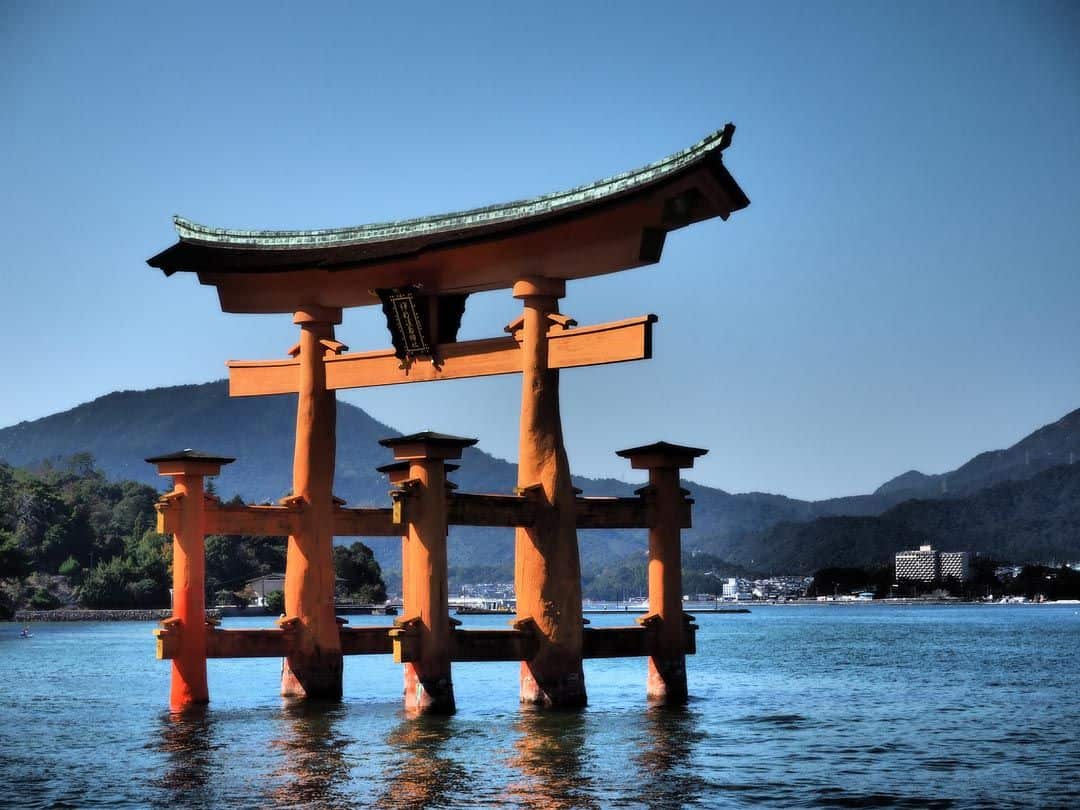
Today’s Japan is a fascinating example of blending the ancient traditions and modern day culture.
Throughout the country you’ll witness dynamic mountainscapes in stark contrast to futuristic cities that are inspiring new trends in architecture worldwide.
It’s also thought of to be notoriously expensive but we managed to travel to Japan on a budget, and so can you.
Table of Contents
Get A JR Rail Pass
Take some flights, deals in hiroshima, deals in osaka, deals in kyoto, deals in tokyo, cheap eating and drinking in japan, save this pin for later, budget travel in japan.
Japan has had a reputation as being expensive for a very long time, people paying hundreds of dollars for a piece of Kobe beef or a sliver of the finest blue fin tuna.
Prices of hotels can be among some of the most expensive in the world. Public travel, whilst incredibly reliable, can sometimes be quite expensive.
Well, some of this is true and some of it is a little more than a rumour that we have all perpetuated. Many people are put off traveling around for a long period of time because of the belief that the costs will be astronomical.
This isn’t always the case.
We have just finished 1 month of travel in Japan and it is comfortably cheaper than Australia, New Zealand, Western Europe and in some cases is even cheaper than China!
It sounds crazy, but here are a few really simple tips for budget travel in Japan that will save you some dollars on your next trip.
Note – At time of travel $1 USD was equal to about 110 Japanese Yen.
READ MORE: Don’t miss our brand new complete guide to help you travel to Japan!
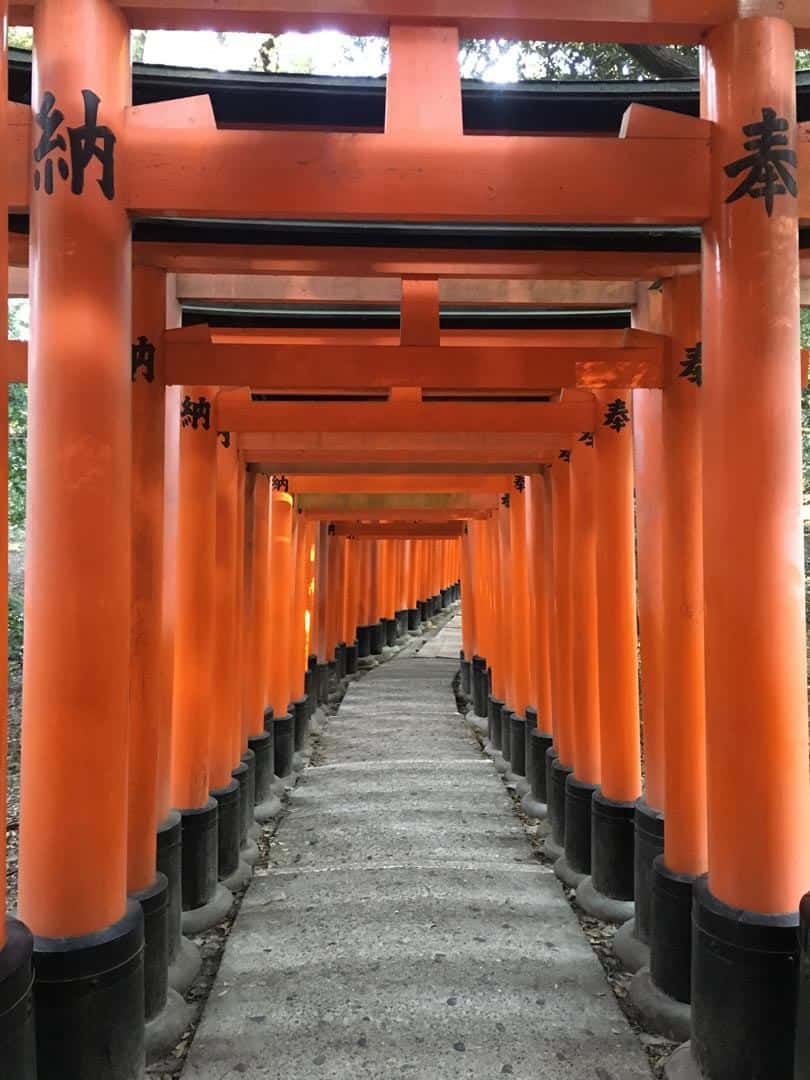
This is a no-brainer. Anyone travelling between cities in Japan should consider investing in one of these.
However be very careful about which JR pass you choose as you could end up spending more than you need to.
I’ll use our situation as an example.
We spent our first 12 days figuring out an excellent Hokkaido itinerary , which is absolutely incredible and definitely our favourite part of Japan. From Sapporo we flew down to Hiroshima .
From here we planned to go on to Miyajima, Osaka, Himeji, Nara, Kyoto and Tokyo.
A few of these were day trips and a few were for a bit longer, but as you can see we had a lot of travel ahead of us.
A regular JR pass that allows travel across the whole country costs 29,100 yen. This is incredibly reasonable. If you take a train from Tokyo to Kyoto, throw in a day trip to Nara and you’ve started saving money.
Our plan was as follows:
- 3 days – Hiroshima and Miyajima
- 2 days – Osaka
- 1 day – Himeji
- 1 day – Nara
- 4 days – Kyoto
- 5 days – Tokyo
We decided to purchase a Kansai-Hiroshima pass through JR West for 13,500 yen per person.
We activated this when we travelled from Hiroshima to Osaka. We used it for our day trips to Himeji, Nara and our trip to Kyoto. We then travelled from Kyoto to Tokyo by night bus for 6500 yen per person.
A total of 20,000 yen, 9000 yen less than a 7 day rail pass.
We would not have had time to do everything we wanted to do around Kansai and get to Tokyo in 7 days. Hence why we elected to go this route.
The JR pass website states that a JR pass cannot be used on the Nozomi or Mizuho trains. However if you purchase ANY JR west railway pass, which ours was, you can use these trains. This is great for longer routes, notably Hiroshima to Osaka/Kyoto.
Plan where you want to go and what you want to see and then search on the Klook website to find the pass that best fits your plan.
You could end up saving yourself a lot of money.
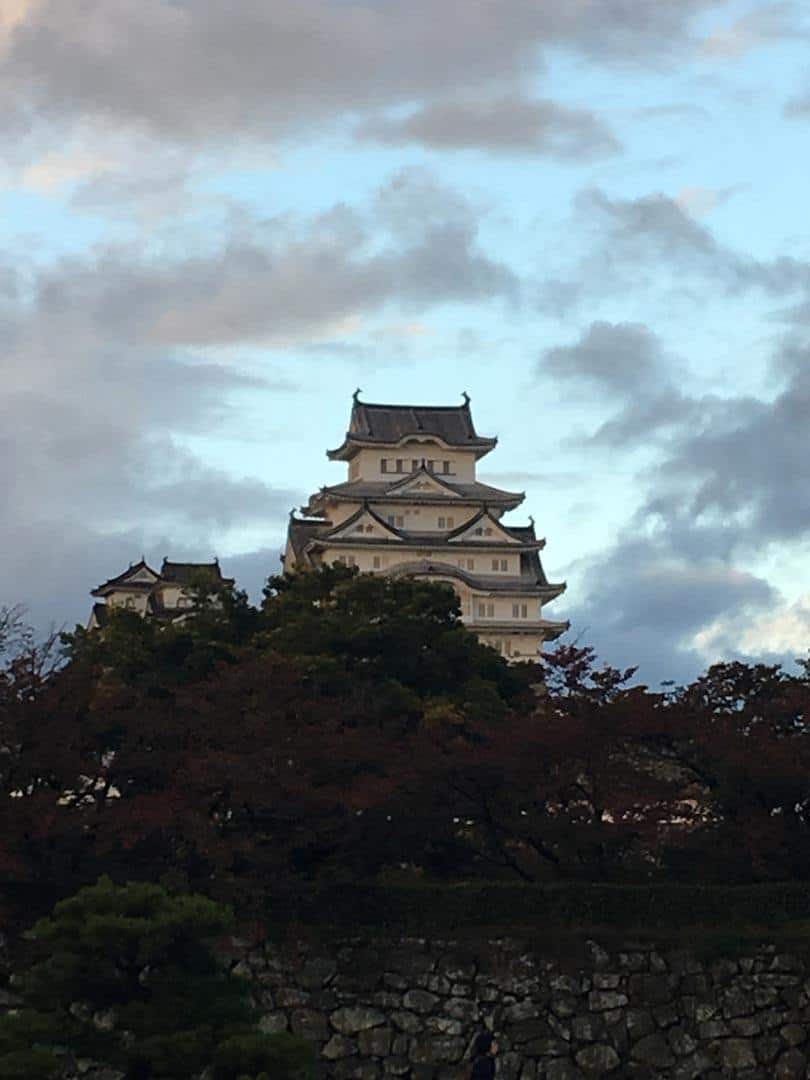
I read about this little deal on the amazing website Japanguide , a must for anyone planning a trip to the land of the rising sun.
In essence, this deal covers cheap flights all over Japan for any visitors to the country. It’s advertised as a 10,000 yen deal however there are some flights that are cheaper and some that are slightly more expensive.
We paid 10,000 yen each to fly from Sapporo to Hiroshima. If we were to booked these flights without this deal it would cost us closer to 50,000 yen per ticket.
There are two airlines that participate in this amazing deal: JAL and ANA. We ended up flying with ANA and it was great.
One thing to remember is that for this to work you usually have to book from outside Japan. As always in Japan there are a variety of deals.
The deals that we researched are linked below, but the link above has information on all of the deals available.
- JAL – Japan Explorer Pass
- ANA – Experience Japan
Both of these links take you straight to the booking page where you can research and compare prices. This deal is a must for anyone looking to get away from the Tokyo-Kyoto-Osaka route. This saved us a huge amount of money.
Day Passes for Attractions
Many of Japan’s cities have a variety of day passes allowing giving unlimited rides and even discounts to various attractions. This is a lifesaver for budget travel in Japan.
In Hiroshima you can purchase a 1 day street car and ferry pass for 840 yen. This is a great option if you are doing Miyajima as a day trip.
- Street Car to Miyajimaguch i = 280 1 way – total of 560
- Ferry to Miyajima = 180 yen 1 way – total of 360
- 560+360 = 920
This also means that you can use the streetcars to get around in the evening as your legs will be knackered after a day in Miyajima.
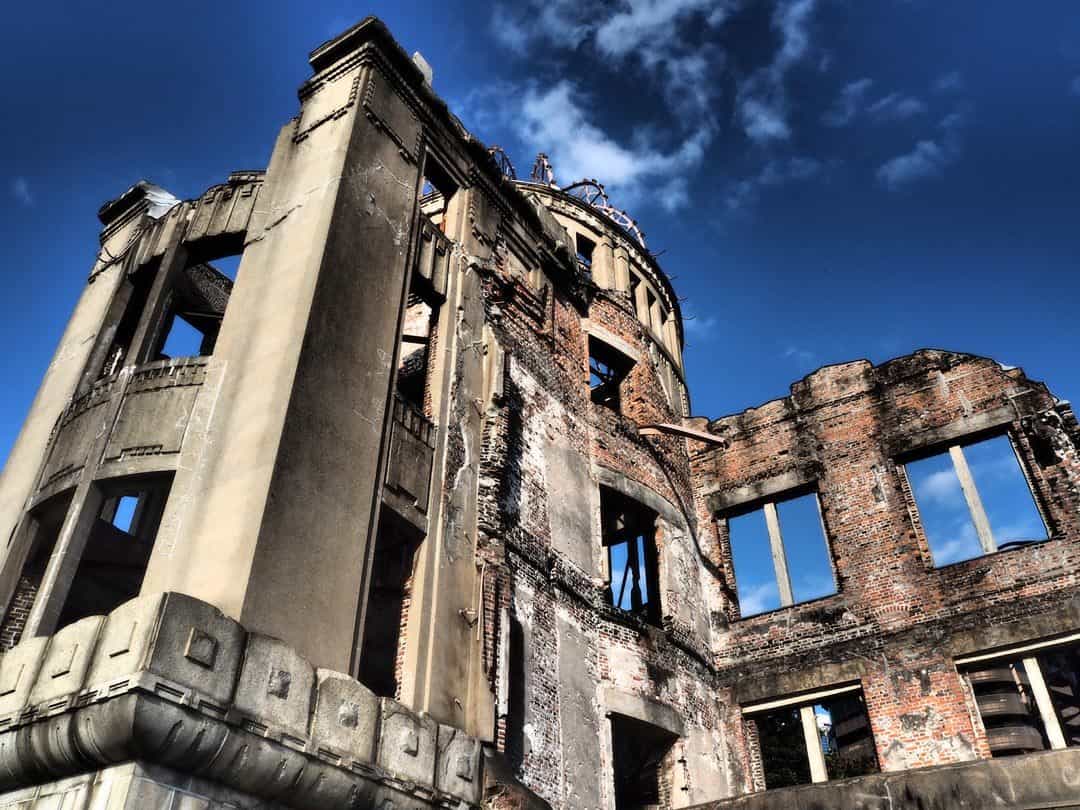
In Osaka you can pick up the “Osaka Amazing Pass” that covers subway and entry in a huge number of attractions for one day.
When we used it we headed to Osaka Castle, did the HEP5 ferris wheel, went to the top of the Umeda tower and took in an evening cruise (which was not that great to be honest).
It costs 2500 and it ended up saving us 2500 yen in transport and entrance fee’s definitely worth it.
Possibly the most popular tourist destination in Japan (it certainly felt that way when we were there).
Kyoto’s subway system is quite useful for accessing Northern Higashiyama and the city centre, but other than that it’s the bus and JR that are king.
However the JR routes to Arashiyama and Inari are very cheap so it’s not worth activating a rail pass just for this. Save it for intercity travel.
Kyoto’s bus network is both extensive and convenient. For 500 yen you can pick up an all day bus. You end up saving money if you take 3 or more buses. With Kyoto’s sites spread all over the city, this will not be a problem.
Here’s our list of the best things to do in Kyoto .
Japans greatest urban metropolis has one of the most impressive and confusing transportations systems on planet earth. The truth is there are huge number of tickets. Outlines of all of them are listed here .
Suica: This is just a simple subway card, like the oyster card in London or the octopus card in Hong Kong. You need to pay a 500 yen deposit for the card, but this is returned to you when you return the card at the end of your trip. Also the fares a few yen cheaper than if you buy tickets at the machine. They can be used on every line in Tokyo.
All Day Pass: There are 2 all-day pass options. The all-day metro card for 600yen which can only be used on the Tokyo metro, or you can include the Toei lines for 1500yen.
We found the all-day metro card fantastic value. If you take 4 trips you will be saving money. Just remember, neither of these passes include the JR lines, so sometimes the journeys are a little longer.
While you’re at it, check out these great things to do in Tokyo.
Eating out in Japan can be extremely cheap, in some case it was far cheaper than eating similar food in Beijing. Obviously eating out can be as cheap or as expensive as you wish, but here is a very rough price guide based on 2 people eating.
- 500-1000 Yen – Bento boxes – can be brought from any convenience store
- 1000-1500 Yen – Ramen and Udon
- 1500-2000 Yen – Katsu Curry
- 2000-3000 Yen – Tempura Sets
- 3000-5000 Yen – Yakiniku (Japanese BBQ), Izakaya/Yakitori (Japanese style pub serving sticks of meat, sashimi and other wonderful delights), Sushi and Sukiyaki (type of Japanese hot pot)
This is not a definitive list, but it’s generally a good guide as to what type of food is generally cheaper or more expensive.
The big thing that raises the cost of meal is alcohol. A couple of draft beers would generally add at least 1000 yen to the bill. So an easy way to save is to limit your alcohol intake.
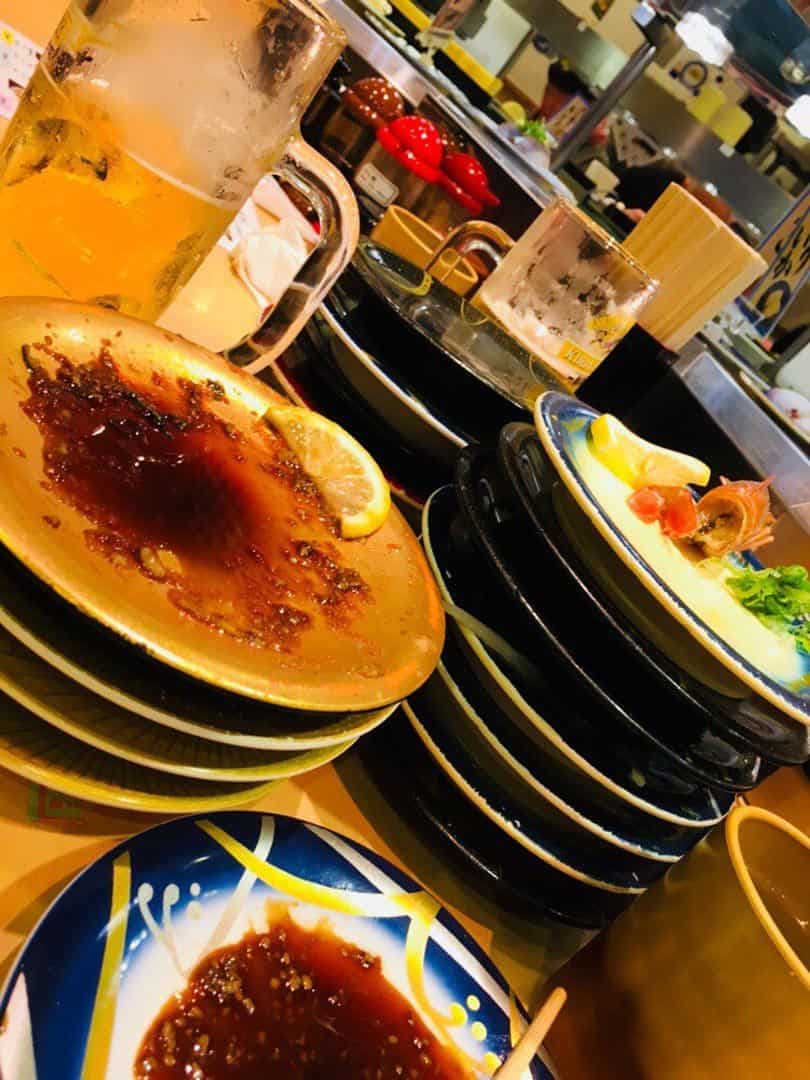
Budget Accommodation in Japan
Accommodation is usually the most expensive part of any trip.
Hokkaido – Booking.com and agoda.com offered us the best rates for anything outside Sapporo. In this region of Japan AirBnB is can be pretty pricey. In the national parks it can be around 9000yen per night, with breakfast included. However this is offset by the cost of food being much cheaper than other parts of Japan.
Hiroshima to Tokyo – Here AirBnB was generally cheaper and that was what we used the majority of the time. We managed to rent entire apartments for half the price of a hotel room in Hokkaido.
Another thing to be aware of is that paying for 2 beds in a dorm is usually more expensive that getting a room in a hotel or guesthouse, so plan accordingly.
Sign up using our AirBnB link to get $50 credit to go towards your first booking and make help make your trip even cheaper.
In truth Japan is much more affordable than people would believe. Hope you found this useful. Head over to www.abearandapig.com to see more of what we do.
That’s it for our guide to budget travel in Japan. Please leave a comment below if you found this article useful, or if you have anything else to add.
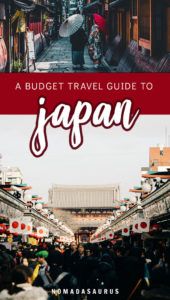
Richard Barnes
Hi, We’re Alesha and Jarryd!

We’ve been traveling the world together since 2008, searching for the planet’s best destinations and adventures.
Love Travel?
Sign up for our free weekly newsletter for the best travel tips, ideas and deals!
We respect your privacy. Unsubscribe at any time.
READ MORE...
19 BEST Things to Do in Osaka, Japan [2024 Edition]
The Perfect 3 Days in Tokyo Itinerary
The Best Day Trips from Every City in Japan [2024]
Related Posts
18 amazing things to do in nara, japan (2024 edition), 7 best day trips from osaka, japan (2024 travel guide), 17 awesome things to do in hiroshima, japan, 19 incredible things to do in takayama, japan [2024 guide], 6 thoughts on “budget travel in japan – ultimate backpacking guide [2024]”.
People may think that Japan is very expensive, but there are many ways to travel in there very cheaply if you know some “secrets” like right organizations where you can get some very unbelievable travel deals 😉
What kind of organizations would those be?
Thanks for sharing this kind of information Thanks for the tips I’ve always enjoyed traveling, the idea of seeing the world fascinated me, but I was never able to take a very long trip
Thank you for your comment Luana. Travelling is definitely amazing in so many ways. Hope you can travel where you want to soon and stay for a long trip and immerse yourself in the country and the people. Happy travel planning 🙂
I love to visit this places in japan this year..Thanks for sharing such kind of information..I think Travelling is the most important way to enjoy life and know something different from your routines..
We agree. Travel is amazing. Have a great trip.
Leave a comment Cancel reply
Save my name, email, and website in this browser for the next time I comment.

7 Tips to Travel Japan on the Cheap
O utside the usual travel cost-cutters such as taking transit over taxis and hostels over hotels, there several simple ways to see Japan affordably. If you think exploring this intriguing place means bleeding your budget, think again. Here's 6 easy tips to travel Japan on the cheap!
Psst, want to save more money on a visit here? Check our tips on eating cheap in Japan, plus Japan Rail pass tips .
1. Take buses over trains

As with Europe, rail passes have become a popular staple for travellers in Japan. While it can be cost-effective for short trips (check our cost-analysis guide ), there are much cheaper ways to get around.
Many bus companies exist in Japan, and almost all of them can be booked online at kosokubus.com . After payment, you'll get immediate confirmation and a confirmation e-mail. Simply show your confirmation e-mail on your mobile phone to the driver.
Another bus company, Willer Express , offers 3, 5, and 7-day bus passes priced from ¥10,000-¥15,000 ($94-$141 USD). Cheaper passes are available for use on Mondays-Thursdays only, while slightly pricier options exist for any day use. These travel trips (referred to as “days” on the site) can be used anytime, non-consecutively within a 2-month window.
There are many overnight bus routes, which saves on a night's accommodation. The buses are quiet, clean, and cozy, complete with reclining seats and a pull-over head blind to block out light (see below).

Popular bus destinations include Tokyo, Hiroshima, Kyoto, Osaka, and Nagoya. At a fraction of the ¥29,000+ ($273+ USD) price-tag of a 7-day rail pass (which must be used within the 7 days), you've got added flexibility for half the cost. If you don't purchase a bus pass , individual bus tickets are still typically cheaper than trains for long distances. Trains can often be crowded with commuters and may require several transfers, so a bus can often be a more convenient method of travel.
Where to buy : Individual bus tickets can be purchased online at kosokubus.com , while the Willer Express pass can be bought on their website and used at the respective terminals of your departure.
Note : for flying cheap around Japan, there are several discount air passes which are only available to tourists. Peach Air is Japan's budget airline, and with flights for as little as ~$40USD across the country, flying can be hugely cheaper than the rail pass. For more tips on flying cheap, check our flight-booking hacks .
2. Dine at Japanese fast food chains
Think all fast food is deep-fried, processed junk? Think again. In Japan, “fast food” means steaming bowls of rice, savoury meats, crispy dumplings, miso soup, with a side of green tea. Basic meals such as a rice bowl with green tea can be bought for as little as ¥130 (~$1.30 USD). More elaborate dishes (below) range from ¥300-¥600 , or ~$3-$6 USD. Check our thrifty dining tips for Japan here .

Cheap restaurant chains to find eats like these include:
- Matsuya (rice bowls, Japanese breakfast, Japanese curries)
- Sukiya (same as above)
- Yoshinoya (again more delish Japanese dishes, from curries to udon)
- Mister Donut (you must try the star-shaped donuts)
- MOS burger (Japanese-style burgers, many of which have rice as “buns”)
- CocoCurry House Ichibanya (curries)
“Button” style restaurants are often cheap (easily <¥500 or ~$5 USD). You simply select and pay for your meal based on the photos and prices listed on the machine (pictured below), bring the receipt to the cook, get your meal and enjoy!
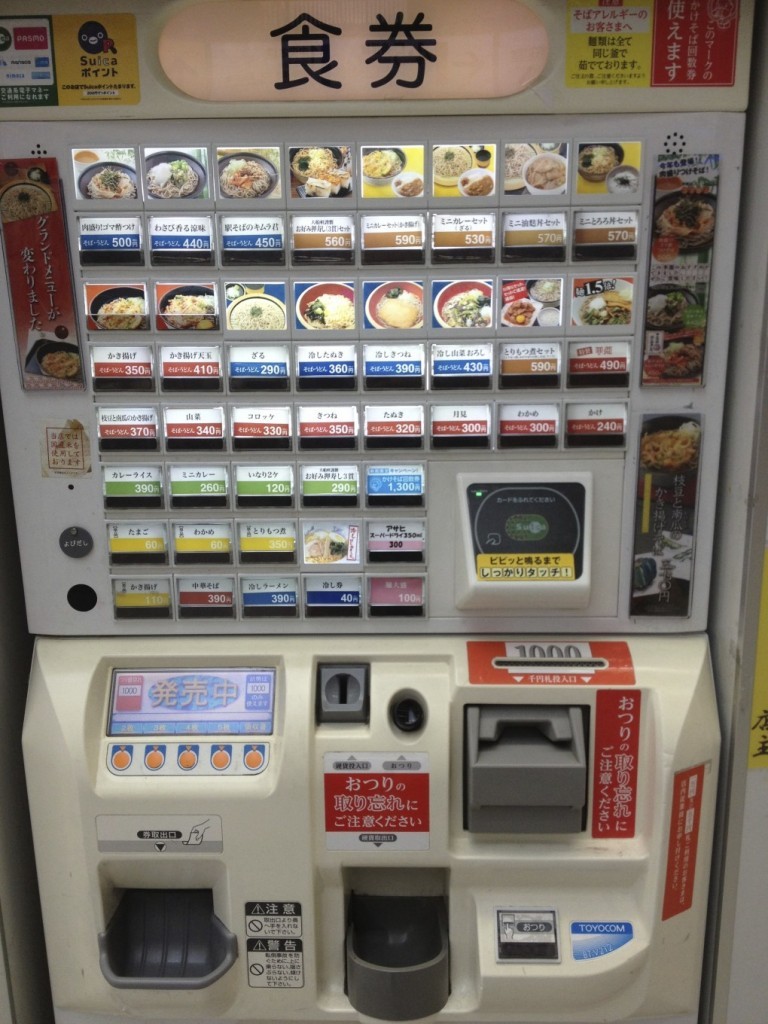
3. Get a metro pass
Taxis and Ubers are a senseless spend in any major city, and Tokyo is no such exception. A transit pass is a great investment, since once you've taken a certain number of transit trips it will pay itself off. Transit passes can be purchased online in advance (easier than navigating the non-English machines at the stations).
4. Get a Grutt pass for sightseeing
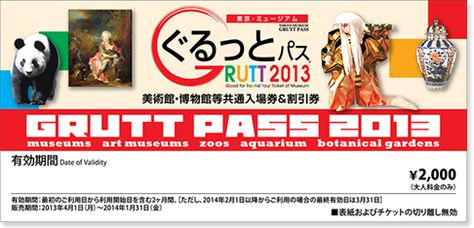
If you plan on seeing even a handful of museums and art galleries in the Tokyo region, the Grutt Pass is a well worthy purchase for savings. At ¥2,000 (~$20 USD), the pass pays for itself quickly, as it provides admission and discounts to 80 facilities . That includes museums, art galleries, and attractions across the Tokyo area.
On our first 6-week visit to Japan we made excellent use of our pass – the abundance and quality of attractions it covers is impressive. To see Japan's famous robots and other technologies to tickle the mind, check out the National Museum of Emerging Science and Innovation . For a colourful array of Japanese history, biology, and modern science, the National Museum of Nature and Science is a must-see. The MOMAT has contemporary art displays from retro to modern art in a variety of mediums. For a fascinating walk through the Japanese Edo period, be sure to check out the Edo-Tokyo Museum .
Where to buy : The pass can be purchased at select convenience stores or any of the following places:
- The Tokyo Tourist Information Centre (1st floor of the Tokyo Metropolitan Government Building)
- Asakusa Culture Tourist Information Center
- Tokyo Chuo City Tourist Information Center(KYOBASHI EDOGRAND)
- LIBRO (Ikebukuro, Kichijoji, Shiodome SIO-SITE, Chofu)
- PARCO Book Center in Shibuya
- Ueno Park Information, Asakusa Culture Tourist Information Center
- TIC TOKYO (Nihonbashi Exit of Tokyo Station)
5. Search broadly for accommodation
AirBNB and HotelsCombined consistently have the cheapest accommodation options in Japan in our experience. On our last visit, AirBNB provided a more local feeling experience and there are many affordable apartments right in downtown Tokyo for less than $80 USD/night (often much less!)
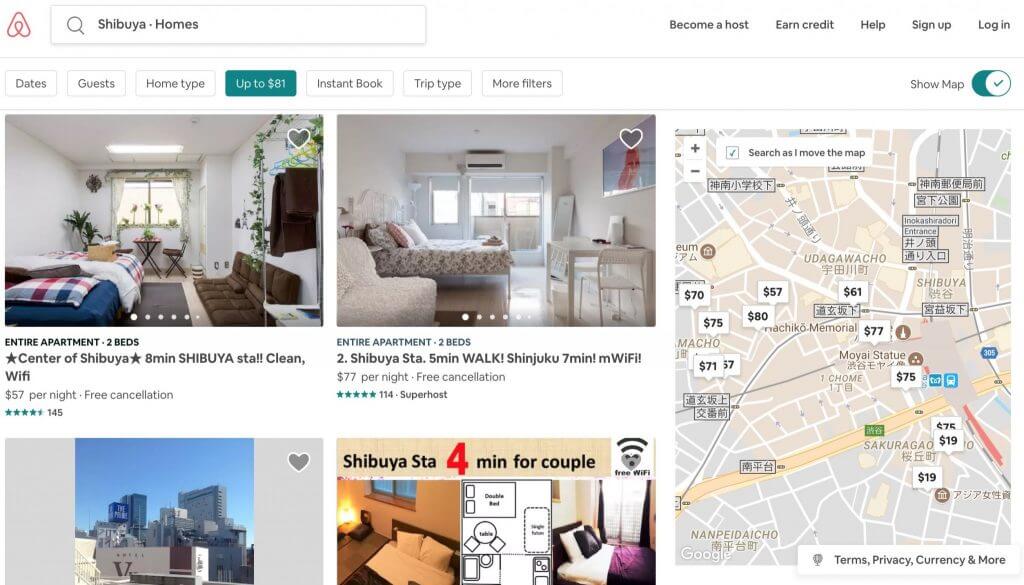
In Tokyo, we recommend staying in Shibuya or Shinjuku . We've stayed at both this Airbnb in Shibuya and the Shinjuku Granbell Hotel in Shinjuku (the buffet breakfast was tops!) Both neighbourhoods are right in the heart of shopping, restaurants, nightlife, and a short train ride from all major attractions.
When in less travelled areas, the Lonely Planet Japan guide was the best resource for hotels, hostels, and ryokan (Japanese-style guesthouses). Tourist Information Centres are also a reliable source of English-speaking assistance if in less-touristed areas.
6. Get take-away meals from grocery stores

Cheap and fresh bento, take-away sushi, noodles, and udon are just some of the grab-and-go options available at Japanese grocery stores. They're great for picnics, hikes, and people-watching in a city park. Prices range from ~¥130-¥300, though we regularly (and effortlessly) spent ~¥200 per box (~2 $USD) per bento in our 6 weeks there.
Thrifty hint : hit up grocery stores in the evenings when these boxes are further discounted – presto, tomorrow's cheap lunch!
7. Hit up $1/plate conveyor belt sushi

Sushi-go-round, conveyor belt sushi, or “sushi kaiten” is a great way to dine affordably in Japan. Plates are colour-coded by price, but ¥100 (~$1USD) per plate conveyor belt sushi can be found throughout the country. This is a great way to sample a variety of affordable sushi and linger with locals. Locations include:
- Nationwide: Sushi Ro
- Tokyo: Genki Sushi (Shibuya)
- Osaka: Isono Ryotaro (5 min walk from Namba Station)
More frugal advice : street food and markets are great opportunities for tasty, affordable eats (pictured below). Check our other thrifty food tips in our guide, how to be a frugal foodie in Japan .
And there you have it, 7 simple tips to make travelling Japan more affordable. What tips do you use to see Japan on the cheap?
- Media & Industry
- Meetings & Events
- Select Language 简体中文 繁體中文(香港) 繁體中文(臺灣) India (English) Bahasa Indonesia 한국어 ภาษาไทย Tiếng Việt Singapore (English) Philippines (English) Malaysia (English) Australia/New Zealand (English) Français Deutsch Italiano Español United Kingdom (English) Nordic countries(English) Canada (English) Canada (Français) United States (English) Mexico (español) Português العربية Japan(日本語) Global (English)
- India (English)
- Bahasa Indonesia
- Singapore (English)
- Philippines (English)
- Malaysia (English)
- Australia/New Zealand (English)
- United Kingdom (English)
- Nordic countries(English)
- Canada (English)
- Canada (Français)
- United States (English)
- Mexico (español)
- Global (English)
- Fujiyoshida
- Shimonoseki
- Ishigaki Island
- Miyako Island
- Kerama Island
- Tokyo Island
- Koka & Shigaraki
- Hida Takayama
- Ginza, Nihonbashi
- Beppu & Yufuin (Onsen)
- Ginzan Onsen
- Nagasaki Islands

- Kumano Kodo
- Shikoku Karst
- Amami Oshima
- Hachimantai
- Omihachiman
- Aizuwakamatsu

- Diving in Japan
- Skiing in Japan
- Seasonal Flowers in Japan
- Sustainable Outdoors
- Off the Beaten Track in Japan
- Scenic Spots
- World Heritage
- Home Stays & Farm Stays

- Japanese Gardens
- Japanese Crafts
- Temple Stays
- Heritage Stays
- Festivals and Events
- Theater in Japan
- Japanese Tea Ceremony
- Cultural Experiences in Japan
- Culture in Japan

- Local Cuisine Eastern Japan
- Local Cuisine Western Japan
- Local Street Food
- Japan's Local Ekiben
- Japanese Whisky
- Vegetarian and Vegan Guide
- Sushi in Japan Guide
- Japanese Sake Breweries

- Art Museums
- Architecture
- Performing Arts
- Art Festivals
- Japanese Anime and Comics
- Japanese Ceramics
- Local Crafts

- Scenic Night Views
- Natural Wonders
- Theme Parks
- Samurai & Ninja
- Iconic Architecture

- Wellness Travel in Japan
- Japanese Ryokan Guide
- A Guide to Stargazing in Japan
- Relaxation in Japan
- Forest Bathing (Shinrin-yoku)

- Experiences in Japan
- Enjoy my Japan
- National Parks
- Japan's Local Treasures
- Japan Heritage
- Snow Like No Other
- Wonder Around Japan

- Visa Information
- Getting to Japan
- Airport Access
- COVID-19: Practical Information for Traveling to Japan
- Anime Tourism
- Countryside Stays
- Accessible Tourism
- Hokkaido Great Outdoors
- Scenic World Heritage in Tohoku
- Shikoku’s Nature and Traditions
- Southern Kyushu by Rail

- Traveling by Rail
- How to Travel by Train and Bus
- JR Rail Passes
- Scenic Railways
- Renting a Car
- Sustainable Travel in Japan
- Travel Brochures
- Useful Apps
- Online Reservation Sites
- Eco-friendly Accommodation
- Luxury Accommodations
- Traveling With a Disability
- Hands-free Travel
- How to Book a Certified Tour Guide
- Volunteer Guides
- Tourist Information Center

- Japanese Manners
- Spring in Japan
- Summer in Japan
- Autumn in Japan
- Winter in Japan
- Cherry Blossom Forecast
- Autumn Leaves Forecast

- Japan Visitor Hotline
- Travel Insurance in Japan
- Japan Safe Travel Information
- Accessibility in Japan
- Vegetarian Guide
- Muslim Travelers
- Safety Tips

- JAPAN Monthly Web Magazine
- Arts & Cultures
- Nature & Outdoor
- Festivals & Events
- Insider Blog
- Things to do
- Local Guides
- Food & drink
- Traditional
- Hokuriku Shinetsu

My Favorites
${v.desc | trunc(25)}
Planning a Trip to Japan?
Share your travel photos with us by hashtagging your images with #visitjapanjp
GUIDE Guide to Traveling Japan on a Budget A guide to budgeting your trip to Japan
- Stories & Guides
- Guide to Traveling Japan on a Budget
Plan in advance to make your trip to Japan affordable
You may have heard that Japan is an expensive place to visit, but don't be discouraged. With some advance planning, Japan is an affordable destination for even the most budget-conscious traveler. Take some time to decide which options best suit your budget.
There are a wide variety of budget accommodation options, transportation passes and sightseeing discounts available. Browse our list for more details.
Transportation
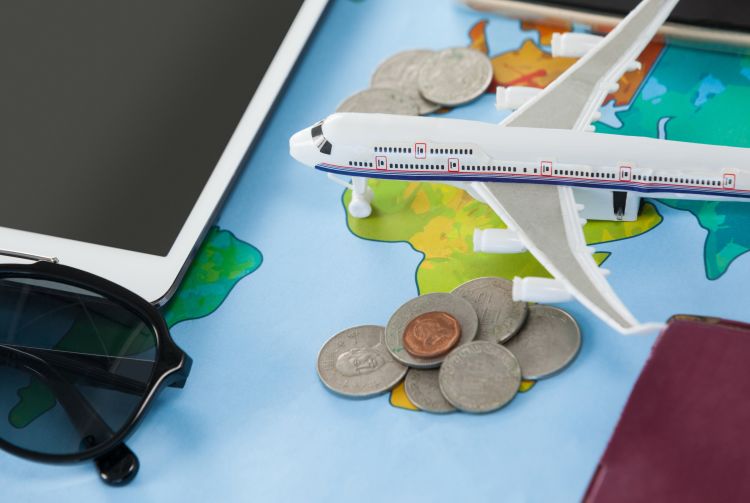
Long distance buses
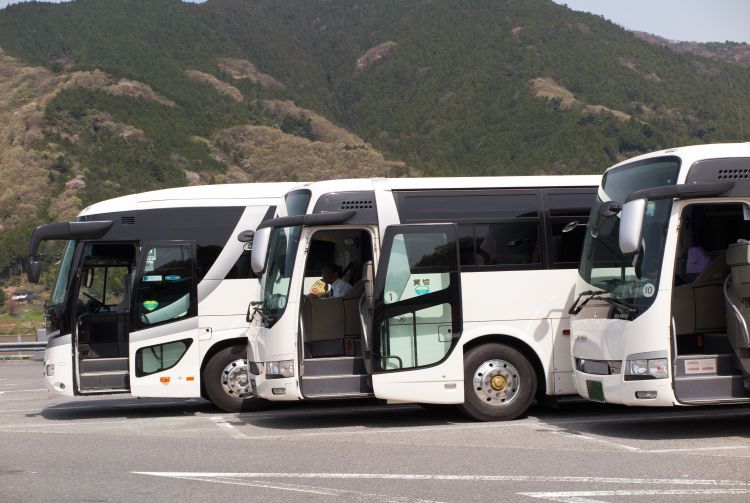
Ferries and passenger boats
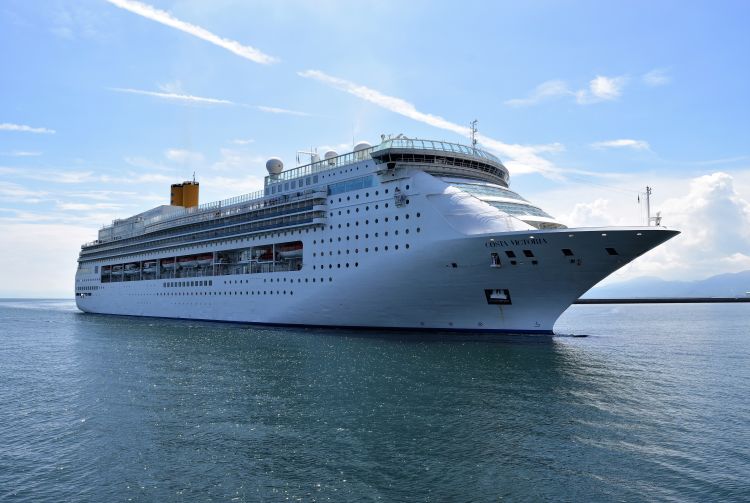
Accommodations
Dining out in Japan doesn't have to be expensive, and is often better value for money than most other world capitals. Wherever you travel, restaurants in popular tourist areas will always cost more. Follow the locals and you will generally find both lower prices and more authentic Japanese cuisine. Avoid restaurants that don't list their prices outside the door. Budget dining can usually be enjoyed at more casual establishments such as izakaya (Japanese pubs), shokudo (small casual restaurants, often with set meals), kaitenzushi (conveyor belt sushi) and okonomiyaki restaurants.
Comparing Prices
Improvements in the foreign exchange rate mean more favorable prices for overseas visitors to Japan. The price chart on this page is designed to give an idea of what you can expect to pay for a variety of everyday and travel-related items in Japan.
The latest information may differ, so please check the official website.
* The information on this page may be subject to change due to COVID-19.
- Story & Guide
- Travel Tips
Did this information help you?
out of found this information helpful.
Thank you for your feedback.
Recommended for you.

Please Choose Your Language
Browse the JNTO site in one of multiple languages
- Tokyo Cheapo (繁體中文)

Best Places To Stay in Nara
Sign-up for monthly updates from japan cheapo.

15 Things To Do in Osaka: Explore “Japan’s Kitchen”
Get ready for colorful nights, culinary delights — and much more.

May 2024: Top Events Around Japan
Giant battling kites, a thousand-samurai march, flower festivals and more!

Complete Guide to the Hokkaidō Shinkansen
Where to go and what to do along Japan's northernmost bullet-train route.

10 Adrenaline-Pumping Okinawa Adventures
The options are plentiful, the prices low. Choose from jungle treks, wild camping, zip-lining and more.

A Matcha Lover’s Guide to Kyoto
Love tea? Then you'll love Kyoto.

Updated: 2024 Japan Cherry Blossom Forecast
The blooms are fashionably late. Here's when to see sakura in all the major cities.

April 2024: Top Events Around Japan
Look forward to flowers and festivals galore!

8 Perfect Places To See Cherry Blossoms in Osaka
Castle grounds, sprawling parks — and somewhere extra special.

Cherry Blossoms in Kyoto: 14 Best Sakura Spots
From temples to riversides, geisha districts — and more.

9 Things To Do in Fukui
Explore the shiny new stop on the Hokuriku Shinkansen — an easy trip from Tokyo.

6 Must-See Fertility and “Penis Festivals” in Japan
Stop giggling and start reading.

11 Best Places to See Cherry Blossoms in Japan
Riverside paths, real castle moats, pagodas and more.

Ghibli Park Guide: Tickets, Getting There and More (Updated)
Now with the Valley of Witches, and real-life cat buses.

Osaka to Tokyo: The Fastest and Cheapest Ways to Get There
Handy information on your travel options between the two cities.

March 2024: Top Events Around Japan
Plum and cherry blossoms, spring festivals, the Grand Sumo Tournament in Osaka — and more!

The Survival Guide to Kyoto Station
Bookmark this for easier travels.

5 Reasons To Visit Ishikawa
The prefecture extends a warm welcome, as part of its efforts to rebuild in the wake of the Noto earthquake.

Mifune Festival
Gander at traditional boats floating down the river carrying musicians and performers.

Sendai Aoba Festival
First held in 1655, the Sendai Aoba Festival takes place at the beginning of the warm season in early May. What happens? The Yoi Matsuri on Saturday night features the Suzume Odori, the Sparrow …

Sakata Festival
See giant lion head floats and unique wheeled floats.

Kamogawa Odori
This is the last of Kyoto's spring geisha dances.

Hamamatsu Flying Dragon Festival
Ever wanted to see the mystical dragons of the Nintendo Zelda games come to the life?

Fuji Shibazakura Festival
See the colorful and vibrant flower fields at the base of Mt. Fuji


HOTEL MYSTAYS Sapporo Susukino
HOTEL MYSTAYS Sapporo Susukino is located in Sapporo's downtown area. It is ten minutes' walk from Susukino Subway Station, and just over an hour from New Chitose Airport by express train. The hotel is within walking distance of the urban oasis …

Hotel Épinard Nasu
The Hotel Épinard Nasu is in the countryside, half an hour from Nasu Shiobara Station in Tochigi. A shuttle bus will transfer guests to the hotel from the station, and a direct shuttle is also available from Tokyo Station and Ikebukuro Station. …

VISION GLAMPING Resort & Spa Yamanakako
Camp in style — with an air-conditioned tent, hot spring & views of Mt Fuji.

August 11th

September 3rd

August 19th

October 24th

Get a Discount on Kimono Rental in Kyoto
Enjoy sightseeing in historical Kyoto while wearing a traditional kimono. Rent your outfit …

Brunch at Nishiki Market in Kyoto
Start your day the right way -- with a delicious brunch in "Kyoto's kitchen", also known as …

Experience Tea Ceremony in Kyoto
Dive into Japanese history with a traditional tea ceremony, together with a visit to Byōdōin …
Close without accepting

- Meet the Team
- Work With Us
- Itineraries
- Italy Travel Guide
- Hawaii Travel Guide
- Travel Tips
How to Travel in Japan on the Cheap
If you’ve looked into a trip to Japan , you’ve probably already realized that Japan is not a cheap destination, even with a favorable exchange rate. You shouldn’t let that detour you from taking a vacation in Japan, however. You might need to get creative with your planning, but there are many ways that you can travel in Japan on the cheap.
Most travelers to Japan want to stay for at least a week , maybe even 2 weeks , so they can visit many parts of the country in one trip, but that can be difficult to manage on a budget.

If you’re worried about mounting costs for your Japan itinerary, don’t! There are many ways to cut costs while traveling in Japan , you just need to put in a little extra effort to find them. Check out these budget hacks that will help you travel to Japan without breaking your budget.
Japan Itineraries
If you’re looking for a great itinerary you can follow in Japan, see our suggested routes below.
- We have a 7-day itinerary and a 2-week Japan itinerary so you can choose which length of trip suits you best.
- If you will only be visiting Tokyo, here’s a shortened 3-day itinerary for Tokyo .
- Want to add more days outside of Tokyo ? Here’s a 3-day Kyoto itinerary and a 2-day Osaka itinerary .
Planning Your Japan Trip?
Buy flights. We recommend using Skyscanner or Expedia to find the best flight deals. Check out our guide to finding the best airfare for additional tips.
Get your Japan Rail Pass. You can buy it online here
Hotels See all hotel options
- In Tokyo: The Strings by InterContinental Tokyo
- In Kyoto: ACE Hotel Kyoto
- In Osaka: Intercontinental Osaka
Best Tours to Book
- Fully escorted 8-day Intro to Japan tour
- Private Custom Tour: Tokyo in a Day
- Tsukiji Fish Market Food and Culture Walking Tour
Table of Contents
Transportation in Japan

Most people who travel to Japan visit Tokyo , even if it’s only for a few days, because Tokyo has the most accessible airport in Japan. However, it’s likely that you’ll want to visit other parts of Japan as well, but transportation costs can really add up.
Japan has the high-speed Shinkansen train system that whisks people around at an extremely rapid pace. It’s really convenient for traveling long distances in a shorter amount of time, but it’s also quite expensive.
Just one trip on the Shinkansen from Tokyo to Kyoto or Osaka will cost you roughly $120 one way. Add two or three other trips, and you’ve blown your budget.
That’s where the Japan Rail Pass comes in. The Japan rail pass is a virtually all-you-can-use travel pass that only tourists can buy for a specific duration (7, 14 or 21 days).
You can use it on pretty much any train (though not all), at any time, without the hassle of purchasing tickets in advance. You can buy a rail pass that gets you standard seats or splurge for the Green Pass, a first-class rail pass that gets you reserved seats, plus other perks, in the best carriages.
The pass can provide significant savings over buying single tickets. The current price for an adult standard 7-day pass is $294 USD. For all the information you need, plus where to purchase the rail pass, read our guide on the Japan Rail Pass .

Take for instance the trip from Tokyo to Kyoto, a popular destination that’s a journey from Tokyo. The fast train from Tokyo will cost around $120. This is where the Japan Rail Pass really comes in handy.
If you plan to do even a small amount of traveling between cities, it will pay off quickly. You’ll get unlimited rail travel with the seven-day pass for $294.
While in Kyoto, be sure to check out this post on How to Experience Fushimi Inari Shrine .
Eating on the Cheap in Japan
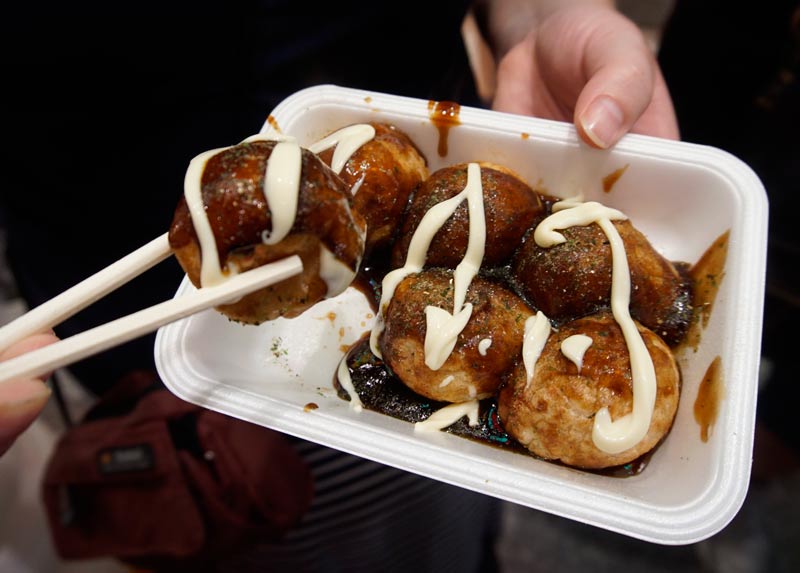
Known for its incredible food, Japan is a country where you will want to be sampling as many Japanese specialties, like ramen, yakitori, and sushi as you can.
However, you can quickly break your budget with food in Japan if you’re only eating at restaurants and not taking advantage of all the great izakayas and street food vendors.
I hear people say that they don’t want to eat street food when traveling because they’re afraid of food poisoning or stomach bugs that might ruin their trip. While you do have to be careful about the food stalls you choose, you don’t have to avoid them altogether.
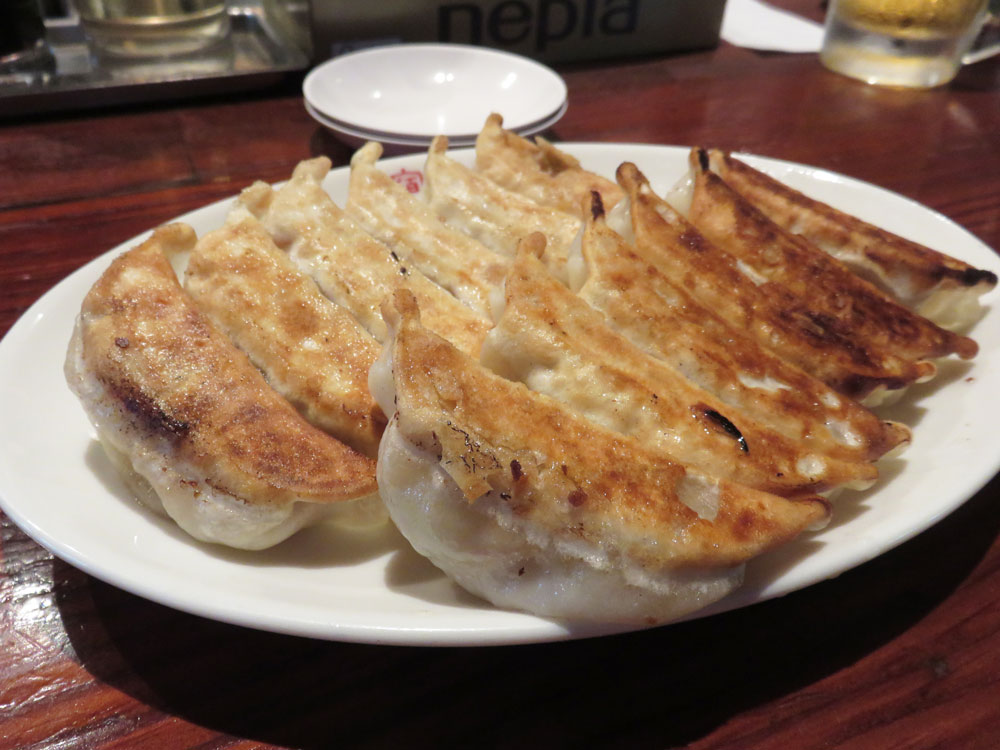
In fact, some of the best and cheapest places to eat in Japan are at food stalls. You will find them near and around markets like Tsukiji outer market in Tokyo and Dotonbori street in Osaka, and in Nishiki Market in Kyoto.
At these street food vendors, you can purchase a large plate of a specialty like gyoza or takoyaki for just a few dollars. There are also Ramen streets in just about every city in Japan. You can purchase a huge bowl of delicious ramen that will keep you full for hours for just a few dollars too.
Usually these ramen stalls can be found around the train stations. For sushi, we found that grocery store sushi was the most economical way to eat great freshly made sushi for a lot less than you’d pay at a restaurant.
We even ate grocery store sushi for breakfast! At most major train stations, there are huge basement grocery stores that have large sushi sections. You can get an enormous tray of sushi for a very low price.
How to Drink on the Cheap in Japan

When we travel, we like to visit wineries and breweries when we can, not only to get a taste of the local spirits, but to learn more about the ingredients and processes used there. In Sapporo, save on your bar bill by visiting the three major breweries in town: Sapporo, Kirin and Asahi, where you’ll get a tour and free tastings (at least at the latter two).
If you like sake, you can visit the sake breweries outside of Tokyo and Osaka, where there are often free tastings offered. Then you’ll want to visit a sake bar where you can sample as many sakes as you like for one small entrance fee. Kurand Sake Market in Tokyo carries over 100 different varieties of sake directly from the breweries.
Budget Accommodations in Japan
As you can imagine, hotels are one of the biggest expenses you’ll have while traveling in Japan. There are a plethora of high-end and luxury hotels throughout the country, and travelers also really love staying in traditional ryokans. But these options can be quite pricey.
The Citadines hotel chain has nice, clean rooms that are perfect for a budget stay, without sacrificing location, safety, or good value. Try the Citadines Shinjuku .
There are some really nice hostels you can book in major cities in Japan that will save you a tremendous amount of money. You can often find apartments for short-term stays on Booking.com.
Japan is also known for its capsule hotels. These are sort of mini-hotels that are considerably smaller than a traditional hotel. They provide a bed and basic amenities and the price is often around $25 USD per night.
Activities on the Cheap in Japan

In Japan, there are many activities you can do that are free or very inexpensive. These are the activities you should aim to participate in to save money. Free activities include walking around the city (there are so many unique things to see while walking around), visiting gardens (some have entrance fees), visiting temples from the outside.
There’s no better way to see the city than to walk! Instead of booking an expensive group tour, consider joining a free walking tour, or put together your own self-guided tour of the top sites in the city. However, there are also a ton of museums, temples, and activities that are not free. And you don’t want to miss out on those.
For the cities where the focus is on these things, you can get a visitors pass that allows entrance to multiple attractions for one low price. Especially in Kyoto and Fukuoka is its ancient temples, art museums, and architecture. You can buy 1 or 2 day passes that allow you to see multiple things in the city, as well as ride public transportation.
Use these budget hacks during your next trip to Japan and you’ll find that it’s not nearly as expensive as you once thought. If you plan well, you can travel in Japan for cheap.
Be Prepared For Travel Planning is the most important part of any successful trip. Do it the easy way:
🧳 Travel Packing List | ✔️ Why You Need Travel Insurance | ✈️ What to Do Before You Leave Home
- Find and book the best hotel (our favorite booking site is Expedia)
- Research flight options (our favorite tool is Skyscanner )
- Book a tour (we always use Viator to find the best tours)
- Rent a car through Discover Cars (they search the best deals for you!)
YOU MIGHT ALSO LIKE

9 Great Cherry Blossom Viewing Spots in Japan

7 Amazing Day Trips from Osaka Japan
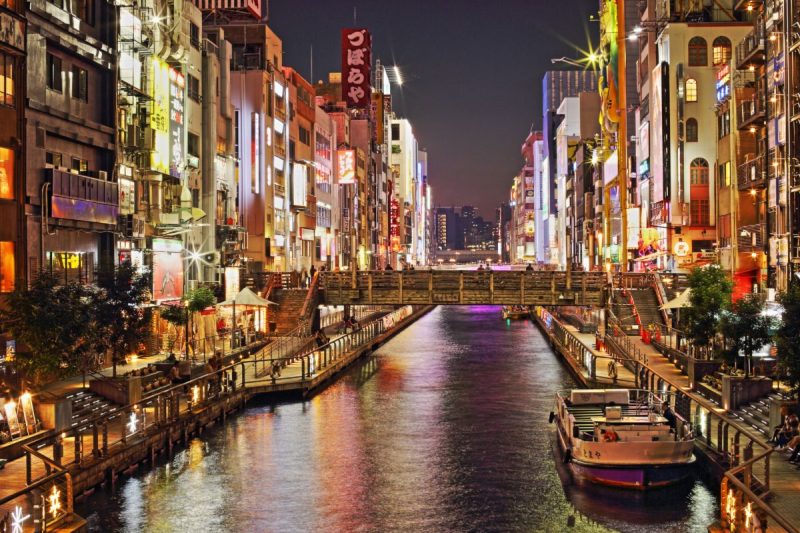
How to Spend 2 Days in Osaka Japan

Where to Buy Japan Rail Pass and Is It Worth It?
Like this post? Pin it for later

Laura Lynch, creator and writer of Savored Journeys, is an avid world traveler, certified wine expert, and international food specialist. She has written about travel and food for over 20 years and has visited over 75 countries. Her work has been published in numerous guidebooks, websites, and magazines.
27 thoughts on “ How to Travel in Japan on the Cheap ”
Great article – Japan is so expensive, it’s always good to go prepared with some tips for ways of saving some cash!
What a great plan. We haven’t done Asia as a family. Self guided walking tours are where we have our greatest successes though, so glad to hear that’s an easy option.
I also didn’t think you can fin bargains in Japan but happy to hear it is possible. South Korea sounds interesting as well.
You certainly can, if you look hard enough! 🙂
Beautiful places! My favourite is Kyoto, where I was in winter and everything was covered by snow and looked even more magical 🙂 And of course, matcha ice cream 😀
Lovely alternance of pics of old style structures and modern areas, you give an idea of the double (and incredibly interesting) face of this country that I really wish to visit as soon as possible!
Thanks for the tips – I’ve heard really good things about the Japan Rail Pass; we’re looking for our next destination for 2016 from Australia so Japan is definitely on the cards. Just have o toss up between that or South Korea!
You can do both, Meg! If you’re planning to go to Fukuoka, ti’s really easy to get to South Korea – then you’ll get a two-for-one!
I love Japan! Even though it can be pretty expensive, I tried my very best during my visit there for a week! Japan Rail is definitely worth it! Expensive but worth every penny, especially since I only stayed for a week – which is not enough time to explore a lot of things I want to see in Japan, haha. I missed out Sapporo and Fukuoka! Osaka as well, I went there but didn’t really explore since I focused primarily in Tokyo, Kyoto (my favorite!) and Hiroshima. I didn’t know about the ferry from Fukuoka to Busan! That’s really awesome, I just didn’t realized that it’s only about 3 hours away. I’ll keep that in mind for next time 🙂
Yes, Japan Rail is definitely the way to go for getting around. I bet most people don’t realize that the two countries are so close and can be reached like this. It cuts down a lot on transportation costs between the two.
I confess: budget reasons have always kept me away from Japan (and the impression that it’s very crowded and busy in all cities). Good to know that there are some travel hacks.
Yeah, it’s definitely not great for tight budgets, but there are some ways to cut costs.
That house on the lake in the picture at the top is what and where I want my future house to be. Breathtaking. Great post.
I could handle that too, I think!
Nice tips. I enjoyed traveling in Japan two times. Truly an expensive destination to explore. I hope these tips help others experience it nonetheless.
Yes, me too!
I love japan and the food, thanks for the tips. We budget $30 a day for food and it was enough. We still got to sample most of it. Loved the market places too.
That’s great info, Karla! You can definitely find cheap eats in Japan and still eat really well.
Great tips, especially the bit about South Korea! Will have to try and add that in on our next visit 🙂 We redeemed hotel points for most of our time in Japan so that saved a ton–I think trains were our most expensive thing! The JR Pass really helped though! Would love to check out Sapporo next time as well–we love visiting breweries when we travel!
Using points in Japan is a really great idea. We always try to save up our points to use in places that are especially expensive. Better value!
I’m sharing this immediately because I have quite a few audience members that this would be perfect for. Thank you for sharing your deep knowledge on the subject with us. It’s so helpful and I’m also bookmarking it for future reference!
That’s great, Nicole. I’m always happy to help.
Ooo thanks for the great tips!!
Japan is in a world of its own, and I LOVE it. Could use the tips on South Korea though, can’t wait to get there next! Korean BBQ all day every day. 😀
Oh I agree – Korean BBQ every day!
I really want to see the culture in Japan. It is so interesting. It is nice to know that Japan can be done on a tighter budget. It always seems so expensive.
The culture and the food are two of the top attractions in Japan for me. But yes, it can be expensive!
Leave a Reply Cancel reply
Your email address will not be published. Required fields are marked *
Save my name, email, and website in this browser for the next time I comment.
- Travel Resources
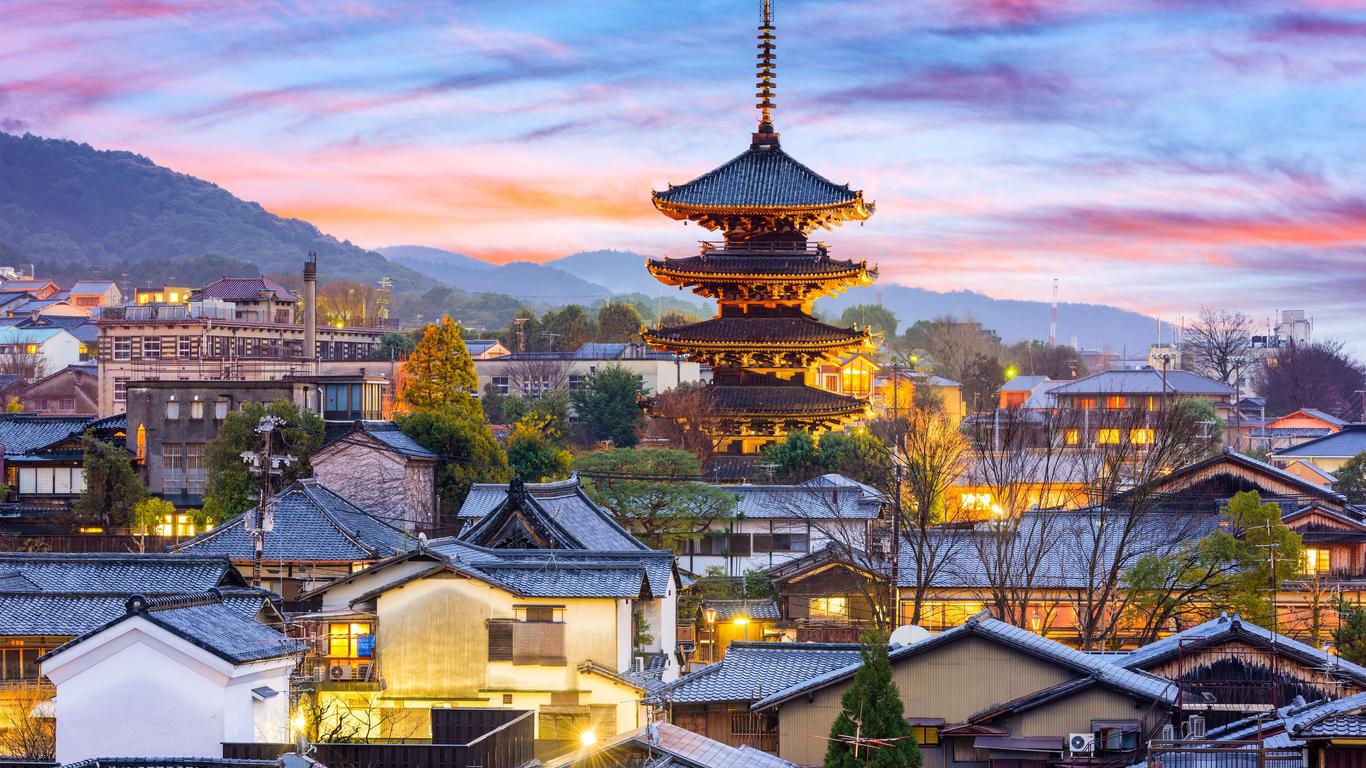
Vacations in Japan
Search hundreds of travel sites at once for vacation package deals in japan.
Let KAYAK do the searching
Save on your next vacation
Search and compare hundred of travel sites at once for vacation packages in Japan
We’re completely free to use - No hidden charges or fees
Filter by free cancellation, free breakfast and more
Cheap Japan package deals
Most popular japan flight and hotel deals, search by stars, search by review score, search by board, search by price, search by freebies, when to book a vacation in japan, tips for finding japan package deals.
- There are loads of types of vacations in Japan and the cost will depend on what type of trip you’re taking and for how long you’d like to stay. Here are the latest prices for a 3 night trip for 2 travelers: Top vacation $619; Family vacation $539; Romantic vacation $854; Luxury vacation $813; Budget vacation $412.
Why should you book a vacation package to Japan?
It's better to choose a travel package that fits your choice, preferences, and budget in advance. The cost is charged at standard preferential rates which are pre-paid and inclusive of accommodation and travel.
When should you book a vacation package to Japan?
Japan experiences an annual average temperature of 75 degrees Fahrenheit. The hottest month is August, which has a high of 79 degrees Fahrenheit. The shoulder seasons of March to May and September to November are the most ideal, when tourism is between peak and off-peak. Temperatures are comfortably moderate at this time and the landscape transforms with the vegetation blossoming in early March while the vivid hues of the leaves in September are stunning. Since this is the off-peak tourist season, the travel deals are much better and you can find fair and inexpensive vacation package pricing.
Where should you stay in Japan during your vacation?
For any vacation type in japan:.
Hotel Kanra Kyoto has wooden floors and is fitted with deep soaking tubs made of cypress. The rooms boast such amenities as flat-screen TVs, minibars, and free Wi-Fi. The upgraded suites feature gardens and terraces.
The Screen is a boutique hotel which is about a quarter mile from the Yebisu Garden Place and little more than a mile from the Nezu Museum. The room amenities include air conditioning, flat screen TVs, and free Wi-Fi.
For family vacations in Japan:
Hotel Rose Garden Shinjuku is only a minute away from the metro station and is situated only a 1 1/4 miles from the Shinjuku Gyoen and less than 2 miles from the Meiji Shrine. The rooms have low-key decor, wood furnishings, and flat-screen TVs. The upgraded rooms have separate sitting areas, making them ideal for families with children.
Hilton Tokyo Bay is only 7-minutes away from the Bayside monorail station and features pastel and fairy tale themes. It also has DVD players to keep the children busy and the separate kid's bedrooms are cartoon themed. Additionally, it also has an Asian restaurant for fine dining.
For romantic vacations in Japan:
Four Seasons Hotel Tokyo At Marunouchi has floor to ceiling windows which offer a panoramic view of the city. It is a particularly enticing feature at sunset and sunrise, offering breathtaking views during dinner and breakfast.
The Ritz-Carlton, Kyoto has elegant rooms that overlook a garden with mountain and river views. By way of activities, the hotel offers art tours, cycling, and hiking.
For luxury vacations in Japan:
Gōra Kadan has unique and exquisite features such as wood framed beds and tatami mats. The rooms have dining tables, soaking tubs, free Wi-Fi, saunas, and whirlpool tubs. You can also request in-room massages.
Asaba Ryokan features traditional short-legged tables, tatami floors, and the refined rooms are equipped with flat-screen TVs, free Wi-Fi and indoor baths. You can order an in-room dinner and breakfast as well.
For budget vacations in Japan:
The Claska has custom furnishings and decor which have a minimalist theme. The rooms are equipped with desks, flat-screen TVs, sitting areas, and free Wi-Fi. Parking and breakfast are free while the restaurant offers both Japanese and French cuisine.
Kimamaya Boutique Hotel is an upscale but reasonably priced establishment that offers exposed timber beams, hardwood floors, and rainfall showers. There are flat-screen TVs, iPod docks as well as free Wi-Fi. A French restaurant with vaulted ceilings serves a free breakfast buffet. You can also book a shiatsu massage in the oak-walled stone thermal baths.
Where to stay in Japan
Japan vacation information, other popular package vacation destinations.
- Thera package vacations
- Berlin package vacations
- Philippines package vacations
- Palm Springs package vacations
- Salt Lake City package vacations
- Liberia package vacations
- Charlotte package vacations
- Cartagena package vacations
- Santo Domingo package vacations
- West Palm Beach package vacations
- Caribbean package vacations
- Tokyo package vacations
- Thailand package vacations
- Maldives package vacations
Nomadic Matt's Travel Site
Travel Better, Cheaper, Longer
How to Get Around Japan on a Budget
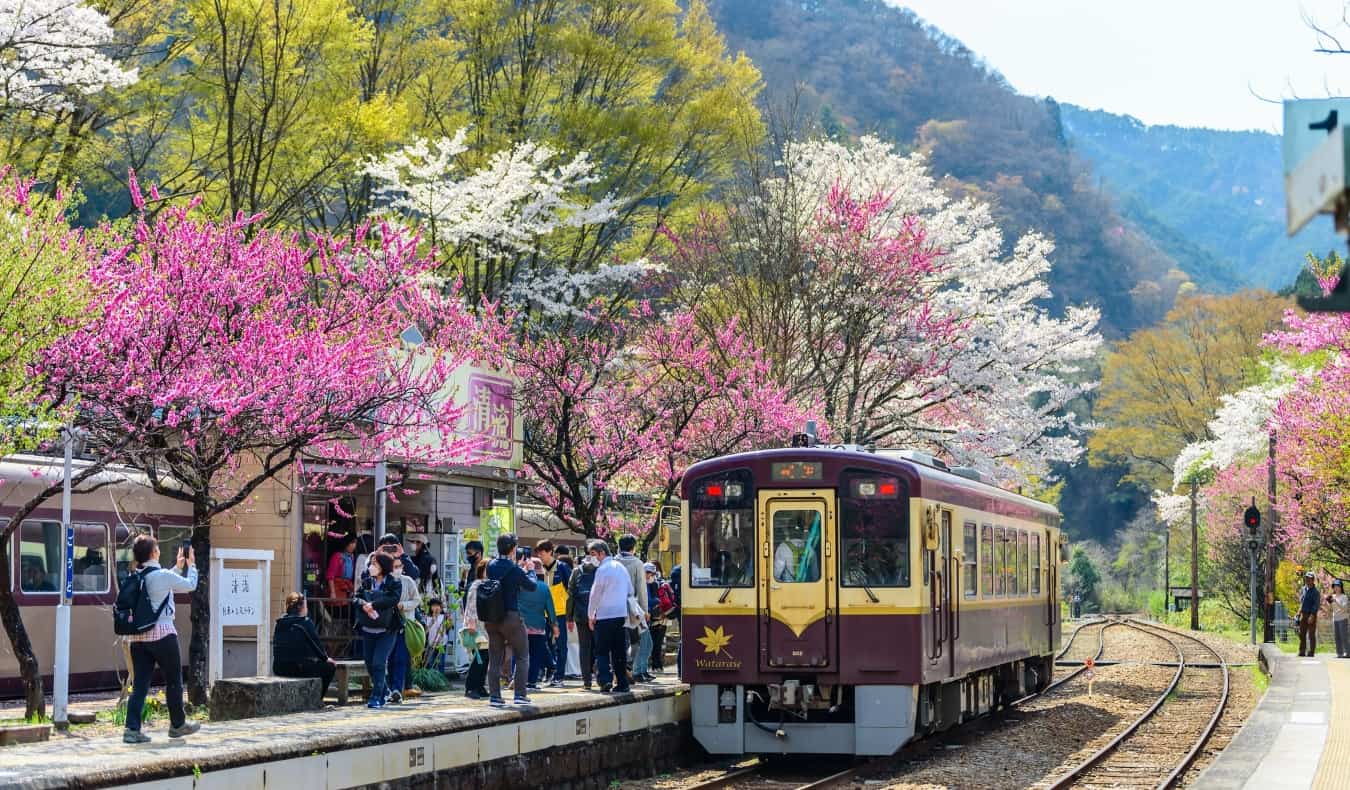
I have a confession to make: I put off traveling to Japan for a long time because I always thought it was too expensive.
Everyone told me Japan was one of the most expensive countries in the world. That was the collective wisdom.
But, when I got there, I realized two things: First, I love Japan ! It’s one of the most amazing, beautiful, and friendliest countries in the world. It lives up to all the hype.
Second, while Japan is expensive, it’s not out of reach for budget travelers .
There are many cheap ways to enjoy Japan on a budget.
From finding delicious food to affordable hotels to fun activities, you don’t have to pinch every penny have fun.
However, the one thing that is truly expensive in Japan? Quick transportation.
While it’s not a huge country, the island nation’s transportation infrastructure is geared toward expensive, high-speed travel or inexpensive, low-speed travel. There’s not much in between. It’s a three-hour train ride or a 12-hour bus ride!
So, what are the best ways to travel around Japan without spending all your money on transportation?
In this post, I’ll break that down — because it does require some work.
Table of Contents
Getting Around Japan By Train
- Getting Around Japan By Bus
Getting Around Japan By Plane
Getting around japan by ferry, getting around japan by car, getting around japan by hitchhiking, how long does it take to get around japan, the best way to get around japan.
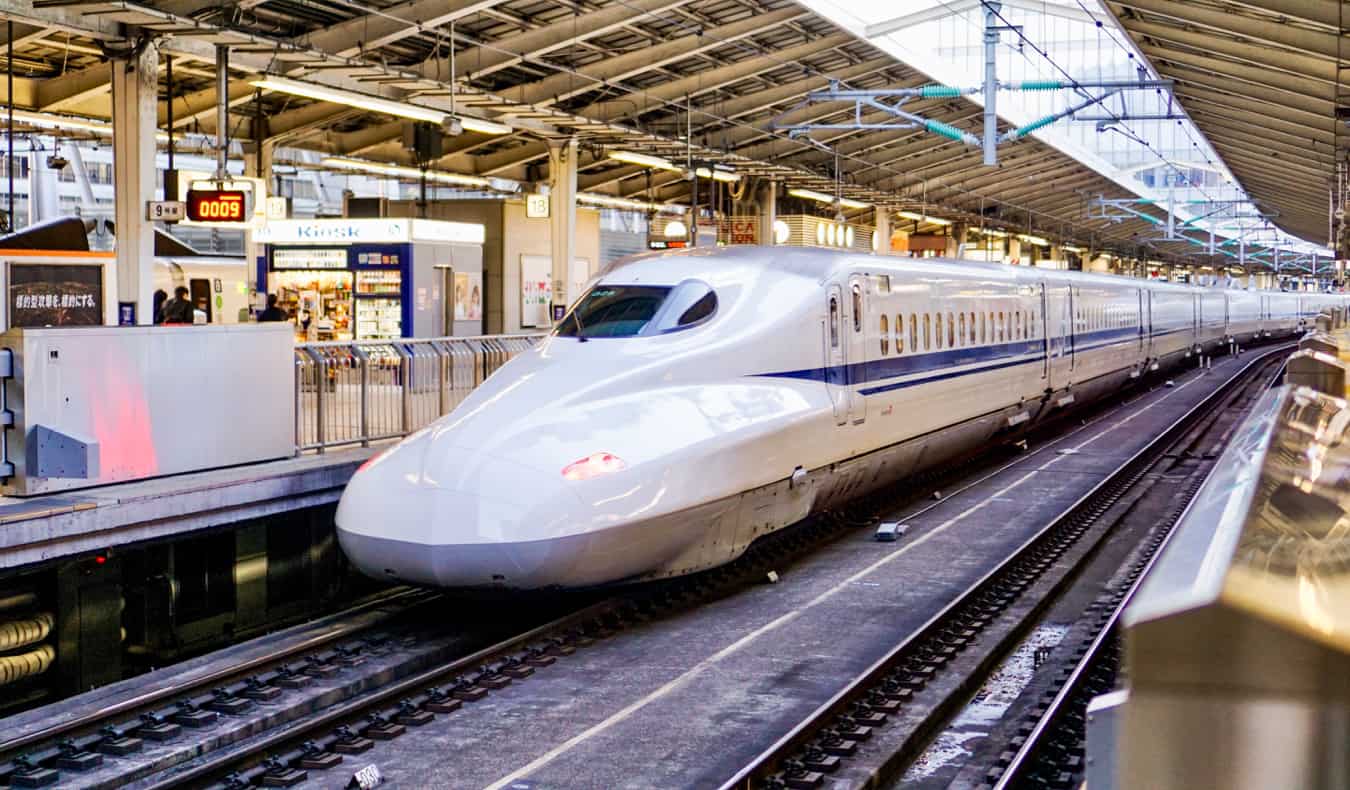
Japan’s infamous bullet trains (called shinkansen ) are beautiful, comfortable, convenient, and fast. They are a wonder of transportation, racing around at speeds up to 320 kilometers (200 miles) per hour. These trains run on special tracks, separate from the other trains.
They are a feat of engineering and a smooth ride. It’s the best in train travel. However, they are also very, very expensive.
Individual tickets can cost hundreds of dollars — even more than airfare. To travel on a bullet train, you pay a basic train fare, then there’s an additional “super (limited) express fee” of 800 to 11,000 JPY.
Here are some examples of one-way train tickets on the shinkansen trains with non-reserved seats in the “ordinary” (non-green car) class:
- Tokyo-Hiroshima: 18,380 JPY
- Tokyo-Kyoto: 13,320 JPY
- Tokyo Fukuoka: 23,390 JPY
- Kyoto-Hiroshima: 10,570 JPY
- Kyoto-Osaka: 4,230 JPY
- Hiroshima-Fukuoka: 9,000 JPY
- Nagano-Kanazawa: 8,440 JPY
- Tokyo-Yokohama: 3,210 JPY
- Hakodate-Tokyo: 23,500 JPY
To make matters worse, there are very rarely promotions or discounts. And, unless you know Japanese, they are nearly impossible to find.
Fortunately, there are other options. Japan also has regular limited express and regional trains. Naturally, they are much slower than the shinkansen , but they are also cheaper.
A trip on a local train from Kyoto to Tokyo costs around 8,360 JPY instead of 13,320 JPY for the bullet train. However, the local train journey takes 9 hours instead of 3 hours and requires several transfers, making it a less than an ideal choice for most travelers.
Whether you opt for the bullet train or regional trains, I think train travel is the best way to see the country. It’s just not a good idea to buy individual tickets. In order to reduce your train costs, you need to get a Japan Rail Pass , which offers unlimited train travel.
The passes are good for JR trains — both regular trains as well as the bullet trains — which go to nearly every destination and region in the country. What I really like is that these JR trains also serve metropolitan areas, so they can be used within cities. On my last visit, I used my JR Pass to get around Kyoto and Tokyo instead of buying metro tickets.
The pass has several options (each valid for consecutive days, not just travel days):
- 7 days: 29,650 JPY (39,600 JPY for a Green Pass)
- 14 days: 47,250 JPY (64,120 JPY for a Green Pass)
- 21 days: 60,450 JPY (83,390 JPY for a Green Pass)
The Green Pass is the first-class option. Since the trains in Japan are already amazing, you likely don’t need to buy the Green Pass unless you really want some luxury.
Even if you get just the seven-day JR pass, it still costs less than a round-trip train ticket from Osaka to Tokyo (without a rail pass, a round-trip ticket costs around 27,000 JPY, yet you can get a seven-day rail pass that includes unlimited travel on JR trains for just 29,650 JPY). And you can still do a lot in seven days (it’s a small country, after all!)
The JR Pass is good on several types of JR trains. After the shinkansen , the next fastest is the tokkyu (limited express). The kyuko express train comes next, followed by the kaisoku and futsu-densha (local trains that make every stop).
There are regional pass options as well in case you’re not traveling the entire country. These options will save you even more money since they are cheaper than the regular JR passes. If you’re just going to be focusing on one region of the country, consider buying a JR regional pass. If you want to explore everywhere, get the regular JR Pass . (If you’re a first-time visitor to Japan, you’ll likely want the regular JR Pass, as it covers all the major destinations.)
One thing to keep in mind is that you have to buy your JR Pass before you come to Japan. This is because the pass is available only to non-Japanese travelers who are visiting for a limited time. For more details on the process, read my complete guide to the Japan Rail Pass.
You can currently buy a pass on arrival in Japan (until March 2024), but only in some locations (check the official JR website for the complete list), and it’s significantly more expensive (around 5,000-6,000 JPY more). It’s best simply to do it before your trip.
If you don’t buy a JR Pass and just want to buy single tickets between destinations, here are the approximate prices you’ll pay for one-way train tickets with non-reserved seats in the “ordinary” (non-green car) class:
- Hiroshima-Tokyo : 18,380 JPY
- Tokyo-Kyoto : 13,320 JPY
- Kyoto-Hiroshima : 10,570 JPY
- Tokyo-Nagoya : 17,200 JPY
- Nagoya-Kyoto : 4,500 JPY
- Kyoto-Osaka : 4,230 JPY
- Hiroshima-Fukuoka : 9,000 JPY
- Nagano-Kanazawa : 8,440 JPY
- Tokyo-Yokohama : 3,210 JPY
- Hakodate-Tokyo : 23,500 JPY
- Nara-Kyoto : 1,100 JPY
- Tokyo-Odawara : 3,200 JPY
Getting Around Japan By Public Bus
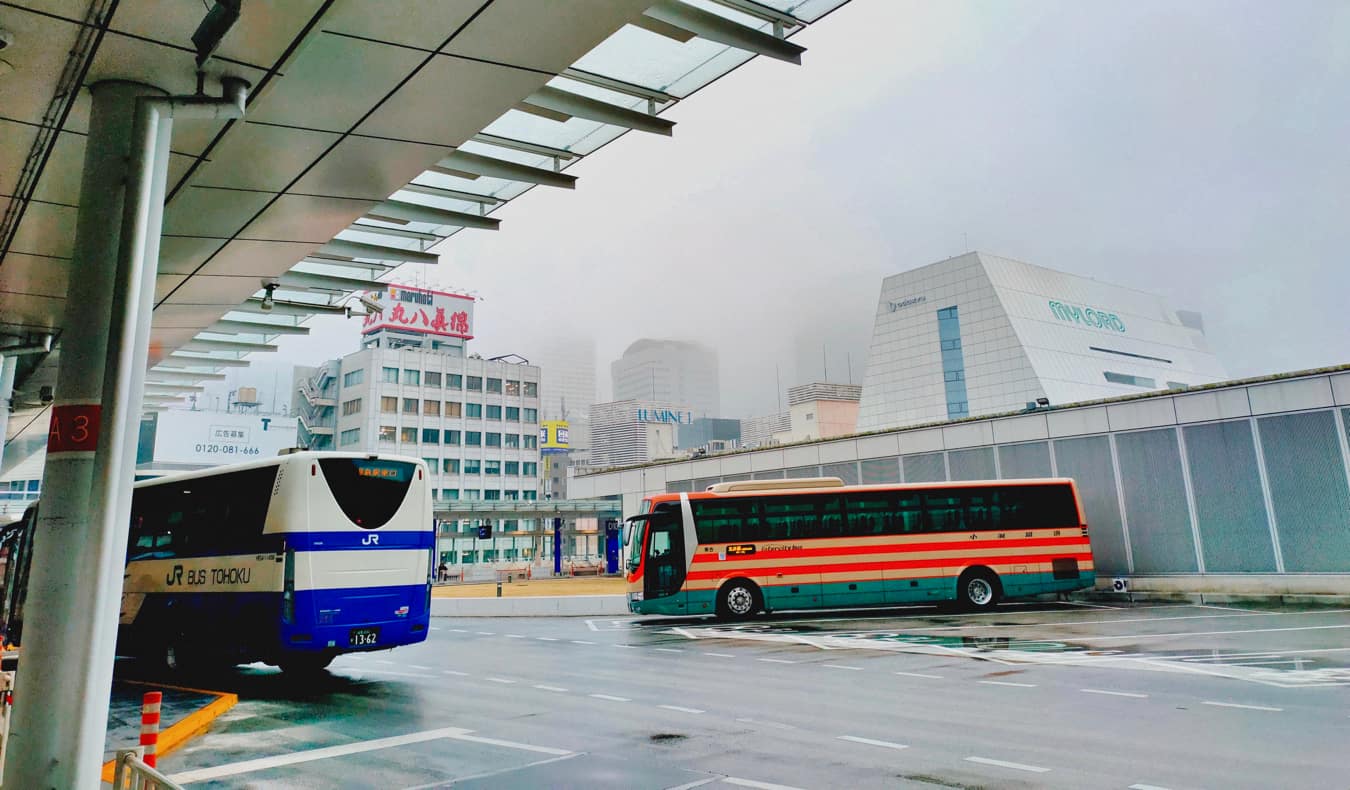
Buses are a less expensive alternative to trains but they take more time. For example, the three-hour bullet train ride from Tokyo to Osaka is over nine hours on the bus.
The price for that seat is around 5,500 JPY, but at some point, you need to think about how much your time is worth. On my last trip, the savings weren’t worth the extra six hours of travel, since I had limited time.
If I’d had more time, the bus might have been worth it, especially because there are so many cool stops along the way to break up the journey.
Willer Express and Japan Bus Lines have bus passes that offer unlimited travel, beginning at 10,200 JPY for three non-consecutive days of travel during weekdays.
Here are some sample bus fares between popular destinations:
- Tokyo-Kyoto : 5,400 JPY – 8.5 hours
- Tokyo-Nagoya : 4,500 JPY – 6 hours
- Nagoya-Kyoto : 2,000 JPY – 2.5 hours
- Kyoto-Hiroshima : 6,400 JPY – 8 hours
As you can see, it’s a lot cheaper to go by bus — but it takes a lot longer!
Bottom line: If you have the time, take the bus (at least for some trips). The coaches are comfortable, and there are overnight buses, which is a decent alternative if you’re taking a long trip. Don’t be afraid to chat people up when traveling, either: the people I met in Japan were really friendly. If they’re Japanese, they’ll be more than happy to tell you all about their country (and ask about yours).
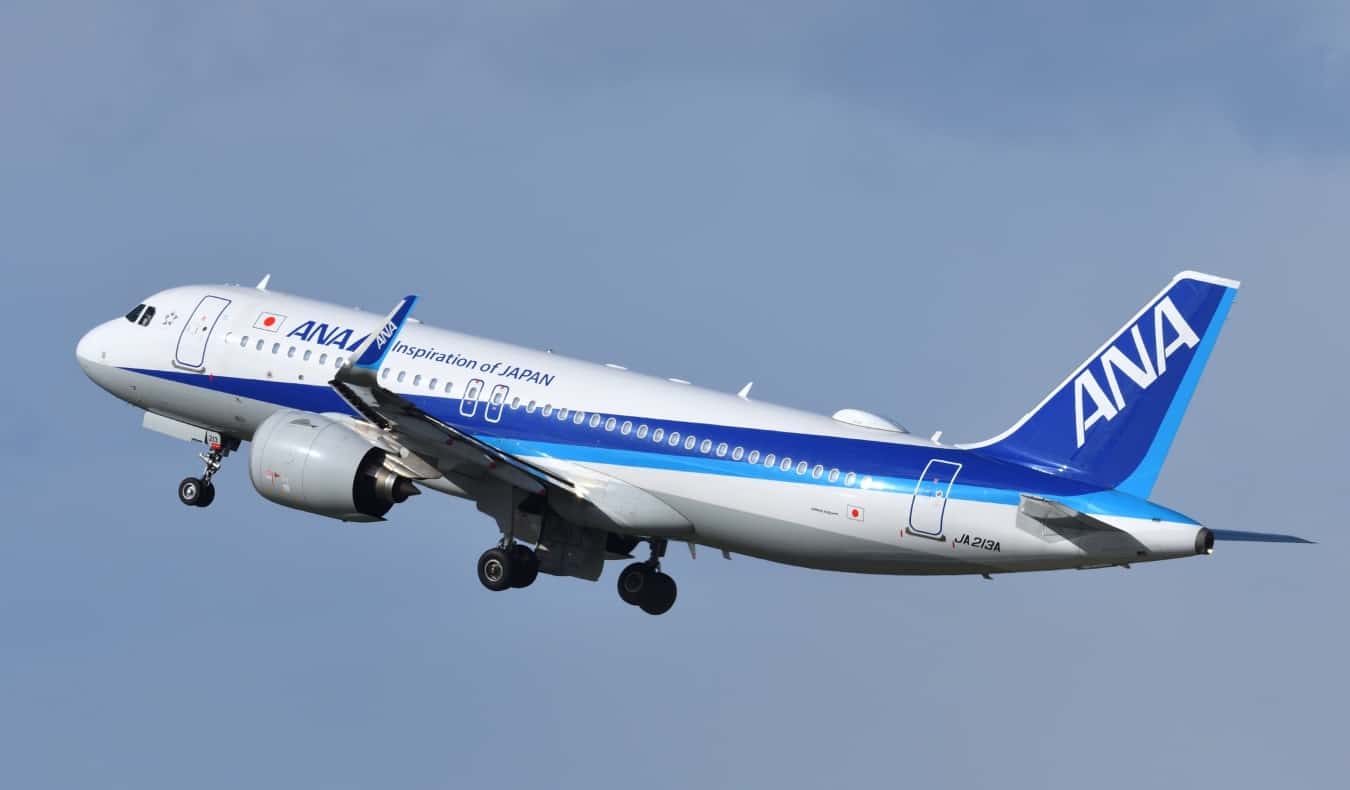
Flying has become a better option in Japan in recent years as more budget carriers now serve Japan. In general, airfares are on par with bullet train tickets. JAL and ANA are the big players. The main “budget” carriers are Peach and Jetstar Japan.
Japan is not a huge country, and I much prefer the train or bus, but if you are short on time and don’t feel like hopping from island to island on a ferry or taking the bullet train, you can fly (though it’s a lot more of a hassle).
Here are some typical prices for one-way tickets between a few popular destinations in Japan (ranges are for off-peak versus peak pricing, with tickets being at their highest June-August):
- Tokyo-Kyoto: 4,800-8,300 JPY
- Tokyo-Nagoya: 4,800-7,500 JPY
- Hiroshima-Tokyo: 4,800-7,500 JPY
- Tokyo-Naha (Okinawa): 7,100-11,600 JPY
- Sapporo-Osaka: 7,500-14,000 JPY
- Fukuoka-Tokyo: 6,080-9,000 JPY
Check out this page on ANA for special fares that are available only to foreigners. These can sometimes be cheaper than the flights you find on other sites, especially for longer routes. It’s worth checking these special fares in addition to using a flight search engine like Skyscanner (my personal favorite).
When deciding whether to fly or travel via train, keep in mind that you’ll need to get to the airport somehow. Not all airports are close: for instance, Kyoto’s nearest airport is in Osaka. If you find flights to be really expensive (as in those to and from Hiroshima), check nearby airports and, most of all, be flexible with your itinerary.
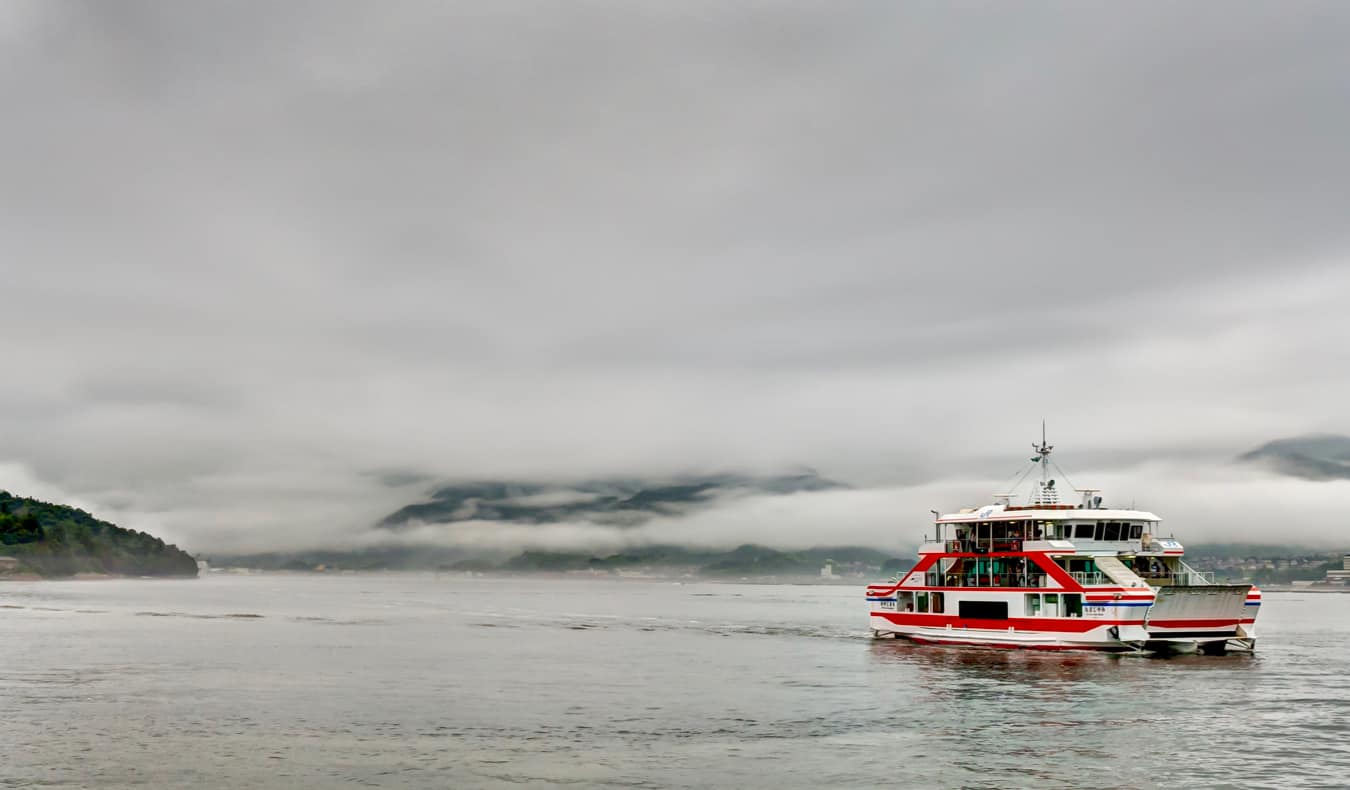
Ferries typically carry passengers, vehicles, and cargo. Passengers have a choice of three classes: second (with or without a bed), first, and special. You will not have your own private room on a ferry, though the first-class option has just two beds in each room. Ferries must always be reserved in advance, though for some routes with frequent departures, it’s not always necessary. You can find ferries and book most tickets on DirectFerries.com (which searches thousands of local operators so you don’t have to).
If you decide to go this route, keep in mind that the trips can be very long! Here are some example routes, durations, and costs:
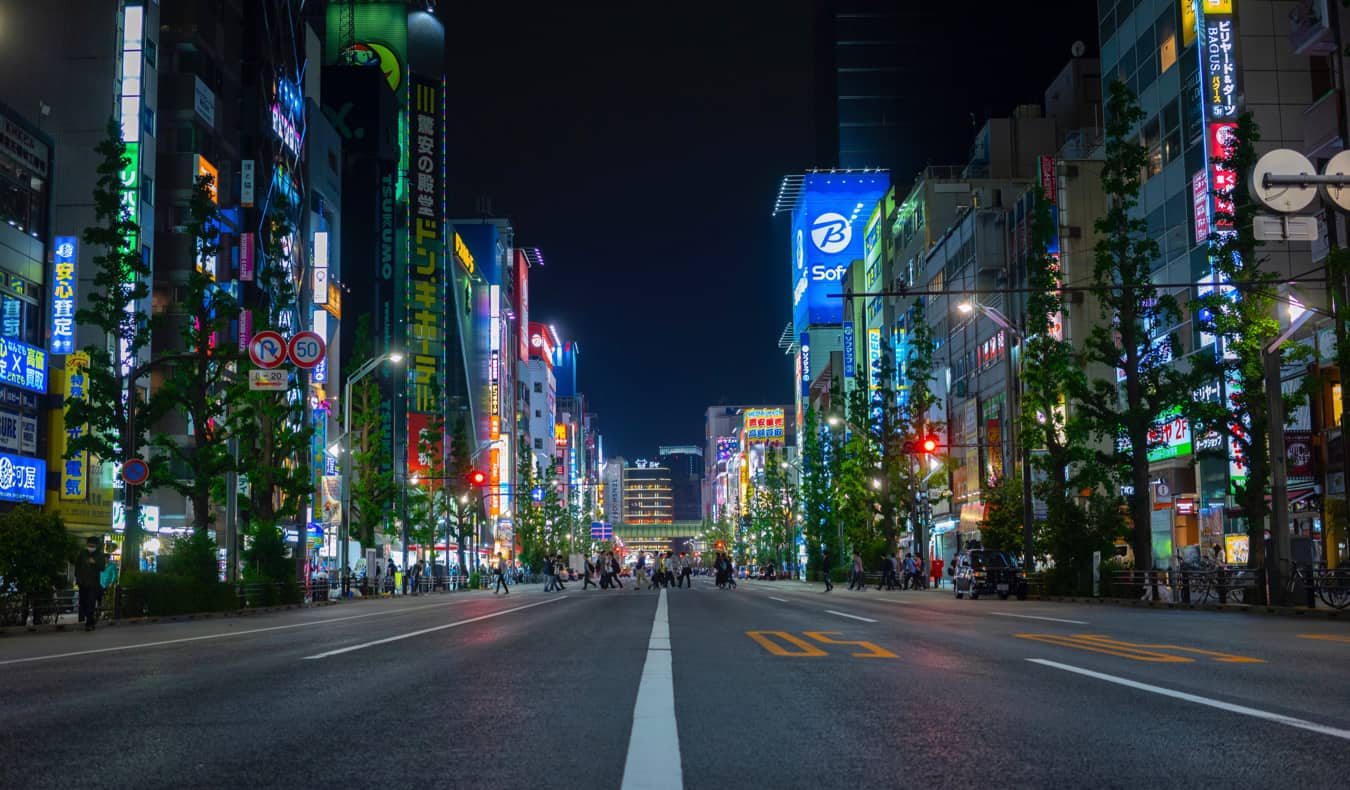
If you do want to rent a car, use Discover Cars to find the best rental car prices.
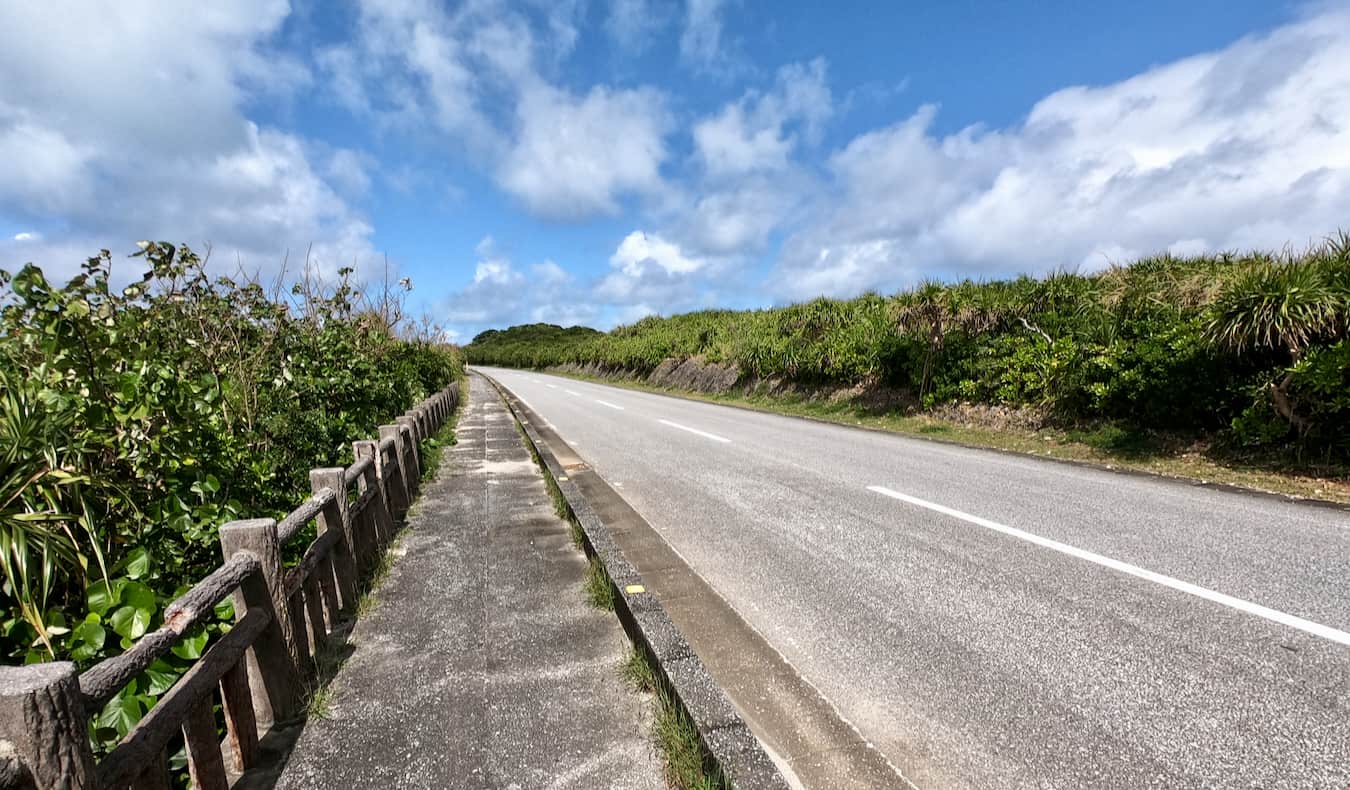
Even out in the countryside, you won’t have a hard time finding a ride. Even people who don’t speak English will pick you up, as the people really are incredibly kind and giving. Don’t be surprised if you get asked to meet their family or friends or share a meal with them!
Chris, our Director of Content, spent a month backpacking and hitchhiking in Japan. He never waited too long for a ride, and people were incredibly friendly. They bought him snacks and meals, drove way out of their way to help him, and even took them to their homes to meet their family. If you’re comfortable doing this, it can be a very culturally rewarding experience!
If you decide to go this route, make a sign letting people know which direction you’re headed. Add a smiley face and other cute drawings to up your chances of finding a ride. A good resource for finding the best places to find a ride is Hitchwiki .
Here are some distances and travel times. I think this will convince you that the train really is the way to go.
At the end of the day, the best transportation option really depends on the length of your trip. If you only have a week or so in Japan and want to get around really quick, get a rail pass and take the train everywhere you need to go. It’s not going to be super cheap, but it will be the most efficient.
If you have more time and have a lot of places to visit in a similar geographic region, consider the bus.
Whichever method you choose, you’ll be in good hands. Japan has some of the safest, cleanest, most efficient travel options in the world, so enjoy!
Book Your Trip to Japan: Logistical Tips and Tricks
Book Your Flight Use Skyscanner to find a cheap flight. They are my favorite search engine because they search websites and airlines around the globe so you always know no stone is left unturned!
Book Your Accommodation You can book your hostel with Hostelworld as they have the biggest inventory and best deals. If you want to stay somewhere other than a hostel, use Booking.com as they consistently return the cheapest rates for guesthouses and cheap hotels.
Don’t Forget Travel Insurance Travel insurance will protect you against illness, injury, theft, and cancellations. It’s comprehensive protection in case anything goes wrong. I never go on a trip without it as I’ve had to use it many times in the past. My favorite companies that offer the best service and value are:
- Safety Wing (for everyone below 70)
- Insure My Trip (for those over 70)
- Medjet (for additional repatriation coverage)
Looking for the Best Companies to Save Money With? Check out my resource page for the best companies to use when you travel. I list all the ones I use to save money when I’m on the road. They will save you money when you travel too.
Be sure to check out the Japan Rail Pass if you’ll be traveling around the country. It comes in 7-, 14-, and 21-day passes and can save you a ton of money!
Want More Information on Japan Be sure to visit our robust destination guide on Japan for even more planning tips!
Got a comment on this article? Join the conversation on Facebook , Instagram , or Twitter and share your thoughts!
Disclosure: Please note that some of the links above may be affiliate links, and at no additional cost to you, I earn a commission if you make a purchase. I recommend only products and companies I use and the income goes to keeping the site community supported and ad free.
Related Posts
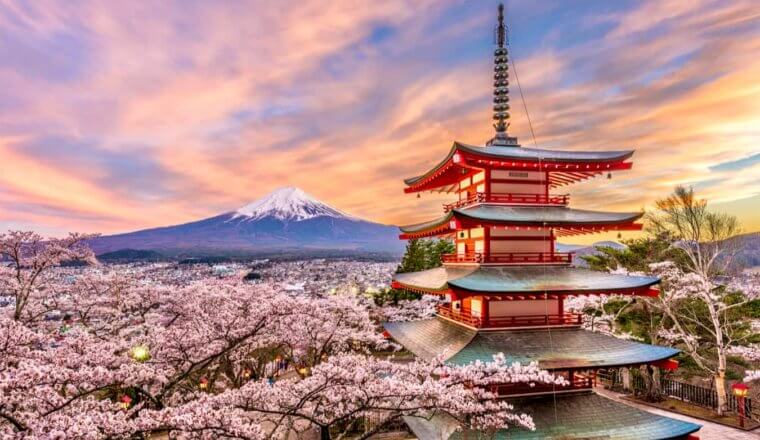
Get my best stuff sent straight to you!
Pin it on pinterest.
- The Best Places In Japan...
The Best Places in Japan for Budget Travellers

Despite its long-held reputation for being one of the more expensive countries to visit in Asia, Japan can actually be surprisingly cheap. Of course, in the 1980s, the country went through an economic boom, and living costs skyrocketed; however, in the 30 years that have followed, the cost of daily life and travel have evened out. Whether you are hoping to spot geishas in Kyoto, walk along Tokyo ‘s Shibuya Crossing or ride the bullet train to Osaka, here’s Culture Trip’s budget guide.
Architectural Landmark

Starting the list with Tokyo seems like a ridiculous notion, but if you’re willing to do your research and forgo personal space, staying in one of the most hectic cities in the world can be a rather thrifty option . Firstly, one of the greatest things about staying in Tokyo on the cheap is that many of the best sightseeing hotspots are free. You can explore countless stunning gardens like Yoyogi Park and the Imperial Palace East Gardens for free. If you want to see something a little more exotic, a visit to Shinjuku Gyoen is going to set you back a very low ¥500 (£3.30). So many of the city’s other sights like Tsukiji Market, the Shibuya scramble and the Tokyo Metropolitan Government Building Observatory will only cost you your transport fee.
Sitting on the northern shore of the Japanese island of Kyushu is Fukuoka, one of the country’s main cheaper city options. Given that it’s not as densely populated as say Tokyo or Osaka, Fukuoka balances between being small enough to stay on the cheap, while still being an incredibly vibrant city. You can easily get a dorm bed in a hostel for ¥2,500 (£17) per night. Because the city is known for ancient temples and beaches, you can embrace Japan’s local culture while spending nothing.
3. Kamakura
Buddhist Temple, Historical Landmark

Want the history of Kyoto without the tourist trap costs? Then Kamakura is the place to go. Firstly, there’s the fact that it’s close to Tokyo (less than an hour), meaning that if you’re in the main city, you’ll save the crazy shinkansen (bullet train) prices. In a previous life (around 1192), Kamakura was actually the political centre of Japan, which it ruled for over a century. These days, a lot of the buildings and history of this era of Tokyo still remain. Known in some circles as the Kyoto of Eastern Japan, it is a popular tourist destination, but a lot more budget traveller-friendly. Don’t miss Kamakura Daibutsu, the second tallest bronze Buddha statue in Japan.
Osaka is like Tokyo’s grittier little sibling, with arguably better food. Like Fukuoka and Tokyo, accommodation options are varied and suitable for all budgets. However, what makes Osaka a budget traveller’s utopia is the ability to eat well for next to nothing. Street vendors sell local-style okonomiyaki (filling omelette/pancake-style hybrid dish) and takoyaki (fried batter balls), which cost the friendly price of ¥300 – ¥700 yen (£2 – £4.65) depending on how hungry you are. Osaka locals love to drink, too – check out izakayas with nomihodai (all-you-can-drink deals) to get boozed up for less.

If you want to experience world-class beaches and rich Japanese culture in one cheap vacation, Okinawa is the place to be. Surfers flock here for the waves, whilst others enjoy the turquoise waters for snorkelling and clear night skies for stargazing. There are plenty of beach camping options for free and cheap, just be sure to keep a look out for “no camping” signs. If you’d rather have a solid roof over your head, then a guesthouse is the best option – some places can be as low as ¥2,000 (£13) per night because real estate in the area is way cheaper than the more populated cities.

If Osaka is the cheaper Tokyo, then Kobe is the even cheaper Osaka alternative. The capital of Hyogo Prefecture and one of Japan’s 10 largest cities, Kobe has a lot more going for it than just beef, though the beef is, of course, pretty great. This busy hub is overflowing with history and rich diverse culture, thanks to its origins as a port city. Located only 20 minutes from Osaka, you have the best of both worlds – the affordability of being in a smaller city, but the accessibility of Osaka in less than a 30-minute journey.
If you want to explore Japan’s stunning mountains and sample the most incredible ramen you’ll ever experience, a visit to Sapporo is definitely one to add to your itinerary. If you’re concerned about breaking the bank, head during the warmer months to avoid the hordes of snow-chasing tourists and ski holiday makers. If you’re coming to Japan in summer and want to escape the heat, Sapporo’s mild temperatures provide some serious respite. Also, many of the city’s attractions are free, including Odori , Moerenuma and Nakajima Parks. During the non-snow season, finding a place to stay is a lot less competitive, which means you can nab a bed in a hotel or hostel for around ¥2,000 – ¥3,000 (£13 – £20) per night.
Culture Trips launched in 2011 with a simple yet passionate mission: to inspire people to go beyond their boundaries and experience what makes a place, its people and its culture special and meaningful. We are proud that, for more than a decade, millions like you have trusted our award-winning recommendations by people who deeply understand what makes places and communities so special.
Our immersive trips , led by Local Insiders, are once-in-a-lifetime experiences and an invitation to travel the world with like-minded explorers. Our Travel Experts are on hand to help you make perfect memories. All our Trips are suitable for both solo travelers, couples and friends who want to explore the world together.?>
All our travel guides are curated by the Culture Trip team working in tandem with local experts. From unique experiences to essential tips on how to make the most of your future travels, we’ve got you covered.

Guides & Tips
The ultimate guide to getting around japan.

How Much Does a Trip to Japan Cost?

Film & TV
The best japanese movies to watch on the bullet train.

See & Do
The best places to visit with culture trip this autumn.

How modern art revitalised the city of Towada, Japan

How to Experience Off-the-Beaten-Track Japan by Bullet Train

Introducing Culture Trip's Rail Trips

The Best Rail Trips to Book this Year

Top Tips for Travelling in Japan

Rediscover Japan with its Borders Fully Open

Tomamu: a secret skiing spot in the heart of Hokkaido

The Best Solo Trips to Take in Your 30s
Culture trip spring sale, save up to $1,100 on our unique small-group trips limited spots..

- Post ID: 1603129
- Sponsored? No
- View Payload
The Cheapest Time To Visit Japan (Budget Traveler’s Guide)
As the world’s third-largest economy, Japan is a major player on the global stage. While its long history and rich culture are well-known, Japan is also a country that is constantly evolving. In recent years, it has become a leading center for technological innovation, with companies like Sony, Panasonic, and Sharp spearheading the way. At the same time, traditional industries like fishing and agriculture remain an important part of the economy. However, all of this comes at a cost. Japan is one of the most expensive countries in the world to visit.
Planning a trip to Japan can be a daunting task, especially when it comes to budgeting. There are so many factors to consider, from airfare and accommodation to meals and activities.
One of the most important factors, however, is the time of year that you choose to travel. Japan is a country with four distinct seasons, and each one has its own unique charm.
However, traveler beware: the high seasons (spring and autumn) are also the most crowded and expensive times to visit. On the other hand, the low seasons (winter and summer) offer cheaper prices and smaller crowds.
So if you’re looking to save some money on your trip to Japan, consider traveling during the winter or summer months. You may not get ideal weather conditions, but you’ll definitely save some Yen.
What are some of the cheapest times to visit Japan?
For budget-minded travelers, the cost of a trip to Japan can be a major deterrent. However, there are some ways to save money on travel expenses.
One of the cheapest times to visit Japan is during the off-season, which runs from late October to early April. During this time, airfare and hotel rates are typically lower than they are during peak travel periods.
Additionally, many attractions offer discounted admission during the off-season. Another way to save money is to visit Japan during Golden Week, a weeklong national holiday in late April/early May.
While travel prices do go up during this period, it is still possible to find deals on accommodation and transportation. For those willing to brave the crowds, Golden Week can be an excellent time to experience the best of Japan without spending a fortune.
What is the cheapest way to travel in Japan?
Traveling can be an expensive endeavor, but there are ways to save money even in pricey countries like Japan.
- One of the best ways to save money on travel is to use the JR pass, which allows unlimited travel on JR trains for a set period of time. This can be especially useful for long-distance travel, as train tickets can be quite expensive otherwise.
- Another way to save money is to take advantage of free or discounted attractions. Many museums and temples offer free admission for students, seniors, or children, and many attractions offer discounted rates if you purchase tickets in advance.
- Finally, another way to save money is to take advantage of Japan’s unique lodging options, such as capsule hotels or manga cafes. These options can provide a comfortable place to stay at a fraction of the cost of a traditional hotel room.
By following these tips, you can travel cheaply and still enjoy all that Japan has to offer.
Which months would be best for visiting Japan?
When it comes to visiting Japan, the best time of year depends on what you want to see and do.
For cherry blossoms, the months of March and April are ideal. The weather is mild and pleasant, and the flowers are in full bloom. If you’re interested in festivals, then late summer or early autumn is the perfect time to go.
September and October offer a wide variety of festival experiences, from the famous Fuji Rock Festival to smaller regional events. Winter is a magical time in Japan, with snow-capped mountains and traditional New Year’s celebrations.
However, it can also be quite cold, so you’ll need to pack accordingly. Ultimately, there is no bad time to visit Japan. Every season has its own unique charms, so you’ll be sure to find an enjoyable time no matter when you go.
What is low season in Japan?
Low season in Japan is a great time to visit if you’re looking to avoid the crowds and get better value for your money.
The weather is still fairly mild, so you’ll be able to enjoy all the country has to offer without battling the heat or cold.
Many attractions offer discounts during low season, so you can save on activities like temple visits and hot spring excursions.
If you don’t mind braving a little rain, low season in Japan can be a truly magical time to visit.
How much does it cost to travel Japan?
The cost of travel varies widely depending on the destination and the type of traveler.
For those on a budget, Japan can be an expensive country to visit. However, there are ways to save money and still enjoy all that the country has to offer.
- One way to save money is to purchase a Japan Rail Pass, which allows unlimited travel on trains operated by the Japan Railways group.
- Another option is to stay in hostels or capsule hotels, which can be found throughout the country. In addition, many museums and temples offer discounts for students and seniors.
By taking advantage of these deals, it is possible to experience all that Japan has to offer without breaking the bank.
Is it cheap to travel to Japan?
Yes, traveling to Japan can be very affordable.
You can find many cheap flights and hotels throughout the country. You can also save money by eating at local restaurants and street food vendors.
Shopping is also very affordable in Japan. You can find great deals on clothing, electronics, and souvenirs. However, you should be prepared to spend more money on activities such as sightseeing and museums.
Overall, Japan is a very affordable place to travel to.
How long can you stay in Japan without a visa?
Japanese visa policy is generally very friendly towards visitors; most nationals can stay in the country for up to 90 days without a visa, and many do not even need a passport.
There are, however, a few exceptions to this rule. For example, nationals of countries that are not part of the Visa Waiver Program will need to obtain a visa before entering Japan.
In addition, those who plan to stay in the country for longer than 90 days will need to apply for a residence permit. The good news is that the application process for both visas and residence permits is relatively straightforward.
As long as you have all the necessary documents, you should have no trouble getting approval from the Japanese authorities.
What is the most expensive month to travel to Japan?
The most expensive month to travel to Japan is August.
This is because August is the peak tourist season, and hotels and flights are often booked solid well in advance.
August also coincides with the Obon festival, when many businesses close for a week or more. As a result, prices for accommodation and transportation tend to be higher during this time. If you’re planning a trip to Japan, it’s best to avoid the month of August if you want to save money.
Instead, consider traveling during the shoulder season (May-June or September-October), when there are fewer tourists and better deals to be found.
What are some of the best deals on flights and hotels?
Looking for a great deal on flights and hotels? Here are some of the best deals around:
-For flights, check out websites like Expedia, CheapOair, and Orbitz. They often have sales on specific routes or airlines. Sign up for their newsletter to get alerted about these deals.
-You can also find good deals by using search engines like google flights and hipmunk. They allow you to compare prices across different airlines and travel dates.
-Another way to get cheap flights is to fly during off-peak times like midweek or late night. You may also get a better price if you’re flexible with your travel dates.
-As for hotels, try booking in advance or during shoulder season (the time between high and low season). You can also find deals by signing up for newsletters from major hotel chains. Another tip is to use websites like Priceline or Hotwire which offer deeply discounted rates on hotel rooms.
What are some of the cheapest things to do in Japan?
Although Japan is often thought of as an expensive country to visit, there are actually many things that can be done on a budget.
For instance, one of the best ways to experience Japanese culture is to visit one of the many temples and shrines scattered across the country. Many of these sites offer free admission, and some even provide guided tours in English.
Similarly, Japan’s famously polite residents can be experienced for free simply by striking up a conversation with locals.
In addition, Japan’s natural beauty can be enjoyed without spending a yen at parks and gardens such as the Higashiyama Skyline in Kyoto or the Kamakura Bamboo Forest.
With a little planning, it’s easy to find plenty of cheap things to do in Japan.
Are there any discount passes that you recommend for tourists?
When planning a trip to a new city, it can be difficult to know where to start.
With so many sights to see and attractions to visit, it can be hard to map out an itinerary that fits both your interests and your budget. That’s where discount passes come in. By bundling together some of the most popular tourist destinations, discount passes can help you save both time and money.
Whether you’re interested in culture or history, there’s sure to be a pass that’s right for you. And with so many options to choose from, you can tailor your trip to your own individual interests.
So before you start planning your next vacation, be sure to research the different discount passes available. You might just find the perfect way to save on your dream vacation.
How can visitors save money on food while in Japan?
Thanks to its vibrant food culture, Japan is a paradise for anyone who loves to eat.
From steaming bowls of ramen to succulent nigiri sushi, there is something for everyone to enjoy. However, with prices often exceeding $10 per dish, eating out can quickly become expensive.
Fortunately, there are a few ways that visitors can save money on food while in Japan.
- One way is to take advantage of the many inexpensive casual restaurants known as izakaya. These eateries typically serve small dishes that are perfect for sharing, and they often have a wide selection of beers and other alcoholic beverages.
- Another way to save money is to buy food from convenience stores or supermarkets. These stores usually sell bento boxes and other ready-made meals at a fraction of the price of a sit-down restaurant.
The cheapest time to visit Japan is during the off-season, which runs from early April through mid-June, and late September through mid-December. Traveling during these periods can save you up to 50% on airfare and hotel rates. However, keep in mind that the weather can be quite unpredictable during the off-season. If you’re planning a trip to Japan during this time, be sure to pack versatile clothing that can be layered. And don’t forget your rain gear!
You Might Also Like
What’s the cheapest time to visit puerto rico 🇵🇷, what’s the cheapest time to visit napa valley, what’s the cheapest time to visit new orleans, the cheapest time to visit colorado in 2024 [tips for saving money], cheapest time to visit switzerland: free and cheap things to do, leave a reply cancel reply.
Your email address will not be published. Required fields are marked *
Save my name, email, and website in this browser for the next time I comment.
LATEST NEWS

🗓️ The Worst Time to Visit Dominican Republic 🇩🇴: A Traveler’s Guide in 2024
The Worst Time to Visit Nevada 🇺🇸: Traveler’s Guide in 2024
17 best restaurants in pigeon forge, tennessee, the best time to visit missouri for 2024 (expert guide by local), 19 best tacos in anaheim, california (embark on a taco adventure).
Sign in to your account
Username or Email Address
Remember Me

Deals of the Week All of Europe's finest Up to 50% OFF
Budget Tours & Trips to Japan
Explore a varied offer of budget Japan adventures that will take you through some of the most renowned destinations such as Tokyo and Kyoto. Each affordable tour will provide you with great experiences for some of the lowest prices on the market. Discover the best budget tours around the world with TourRadar!
43 Budget Japan tour packages with 772 reviews
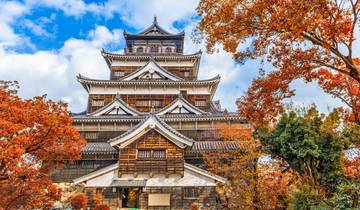
- Train & Rail
- Christmas & New Year
Epic Japan: Speed Trains & Street Food
⭐⭐⭐⭐⭐ / ⭐⭐⭐⭐⭐ It was awesome. Be had the right amount of free time and guidance. Our CEO was the best one I've ever could expect, she went to the top and 500 extra miles. I will definitely recommend it.

- In-depth Cultural
Japan: Tokyo Nights & Kyoto Temples
My expectations for the tour was exceeded. I had a really good time and I am really thankful to our CEO Ms. Ayako Ueda.

Japan Adventure
I loved loved loved this tour! It was truly unforgettable! Meg was amazing, supportive and so much fun! Thank you for the best memories xoxox

Japan Express
It was a really great experience! Having both guided tours and lots of free time made for a nicely balanced tour where our guide, Toshimi, a very knowledgeable local, would show us parts of Japan and tell us of their significance historically and socially, and also tell us how and where to appreciate Japan during our free time. Our guide loves Japan's history and it was very interesting talking to him about Japan. He also made lots of great recommendations on places to see and eat at, and overall made the whole tour experience very convenient, fun, and informative.
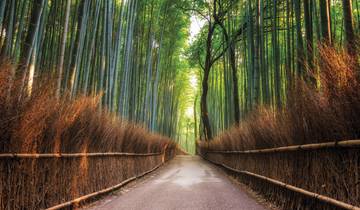
- Coach / Bus
Contrasts of Japan
Wonderful coordination. Europamundo packs many sights in a short time for those of us eager to see as much of the world as posible. Guides were well acquainted with the culture and history being able to manage a balance between when to talk to the group and when to give some time to rest between destinations. Selected hoteles were high quality, as well as included meals. This is our third tour with Europamundo and we feel very comfortable travelling with them.
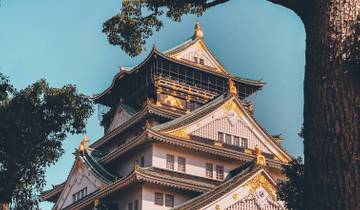
Epic 13-Day Japan Budget Tour: Odyssey Across the Land of the Rising Sun
Excellent trip. The guide was excellent and very helpful to all members of the group. Will definitely be going to Japan again, I hope with Dragon Trip.
- 5% deposit on some dates Some departure dates offer you the chance to book this tour with a lower deposit.
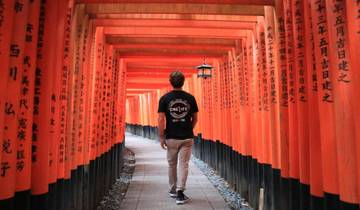
Japan Essentials - One Life Adventures 9 Day
Great tour with an adventurous exciting tour leader, Dale. Since it is an essentials budget tour, I highly recommend researching things to do in Japan before the tour starts. Most of the tour days consist of free time.

Hidden Tokyo Experience
Lloyd was helpful in helping me get around Tokyo, finding places to eat, and things to do. He would start the day by making breakfast, informing us of the days itinerary, and giving us ideas for things to do after our planned activities were over (clubs, bars, etc.). A good guide and a great experience.
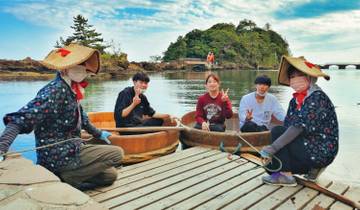
- Volunteering
Environmental Conservation Volunteering, Cultural Immersion and Temple Stay on Sado Island
I have enjoyed and learned a lot in the workshops. On the other hand, the work and dedication of the staff is admirable. Finally, the participants have constituted a homogeneous group despite their different nationalities and ages. I have a great experience. Best regards.
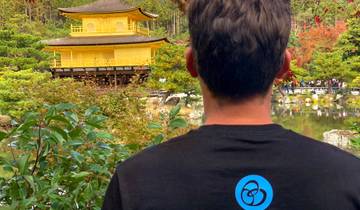
Japan Highlights 8D/7N
This trip to Japan was completely incredible! From the sights of Mt. Fuji to Peace Memorial Museum and passing by the the temples of Kyoto. It was a complete experience for all the senses (viewpoints, food, feelings, smells). Thank you Bamba for the whole organization of the trip!
- 10% deposit on some dates Some departure dates offer you the chance to book this tour with a lower deposit.
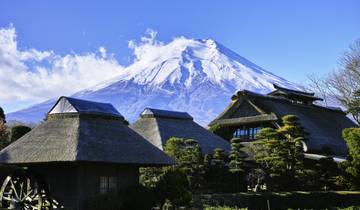
Quick Japan Explorer 5D/4N
We participated in the 5-day Japan Quick Explorer Tour, and it met our expectations. The staff was very helpful via email before the tour to answer my questions, and each of the events on the tour worked out like we expected; we had all the information we needed to do our self-guided tours in each town. We were pleasantly surprised that the day trip from Kyoto to Nara on Day 4 was actually a fully-guided tour, for no extra cost; we were very glad we had signed up for that! Getting the Japan Rail 7-day pass was also a nice feature; we made good use of the pass to continue on from Kyoto to Hiroshima and back to Tokyo at the end of our package, which was a bonus. Thanks for a great trip!
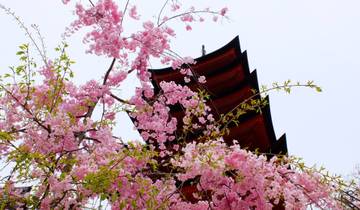
12-Day Japan Family Adventure through Tokyo, Kyoto, Osaka and Beyond
Great trip Our guide, Juno was amazing. The weather was super hot but he managed to keep us comfortable as we moved very quickly on public transport from site to site. Juno always had good well-priced meal suggestions and was super organized and cheerful. The hotels were very good or better. The hotel in Tokyo was noisy because it was near a hospital. A lightweight suitcase, with excellent wheels would be my suggestion for luggage versus a duffle bag Hiroshima was the most moving part of the trip Hakone was the most fun and I wish we could have stayed a bit longer. We stayed a few extra days to go to Disneyland, and I would recommend staying near Disney property versus downtown Tokyo. We could’ve used a midday break and then return to the park for the evening fireworks but it was super hot and we pooped out before closing.

Ultimate Japan

Highlights of Japan on a Budget - 8 Days

Shogun Trail
What people love about budget tours in japan.
Japan was so fun! A looooooot of free time so do you researches about what to do and visit in every city. Would have love more ''organised'' activities (like a dinner every night with the group,...). Compared to other G Adventures tour I did in the past, I felt that this group was less stick together since there was only a few group activities.
I've never had a bad trip with INTRO and this was no exception. Another great tour with an awesome leader Zoe! Won't hesitate to travel with them again. Such a great way to see japan without having to figure out all the bits that go into making a good itinerary, zoe took all the hassel out of everything and made everyone feel comfortable and at ease every step of the way.
More Budget Tours in Japan
- Southern Japan tours (40)
- Central Japan tours (38)
- Kanto tours (11)
- Honshu tours (34)
- Budget In-depth Cultural tours (25)
- Budget Explorer tours (20)
- Budget Family tours (18)
- Budget Self-Guided tours (8)
- Budget Historical tours (7)
- Budget Active tours (5)
- Japan Travel Guide | All You Need to Know
- 2 Week (14 Days) Japan Travel Itineraries & Cost 2024/2025
- 1 Week (7 Day) Japan Travel Itineraries 2024/2025
- Best 3 Week (21 Days) Japan Travel Itineraries 2024/2025
- Discover the Best Japan Vacation Packages 2024/2025
- What is the best time to visit Japan in 2024/2025?
- Weather in Japan in 2024/2025
Travel Styles
- Singles and Solo (314)
- For Couples (128)
- Young Adults (19)
- Seniors (123)
Discover TourRadar
- See All Tour Operators in Asia
- See All Tour Operators in Japan
- Greece Tours
- Maasai Mara Safari
- Balkans Mountain Hikes tours
- Pampas Argentina Seniors tours
- Mexico Winter tours
- Puglia October 2024 tours
- Spain and Portugal Highlights (Summer, 11 Days)
- Skip to main content
- Skip to primary sidebar

Destinations
- Plan Your Trip
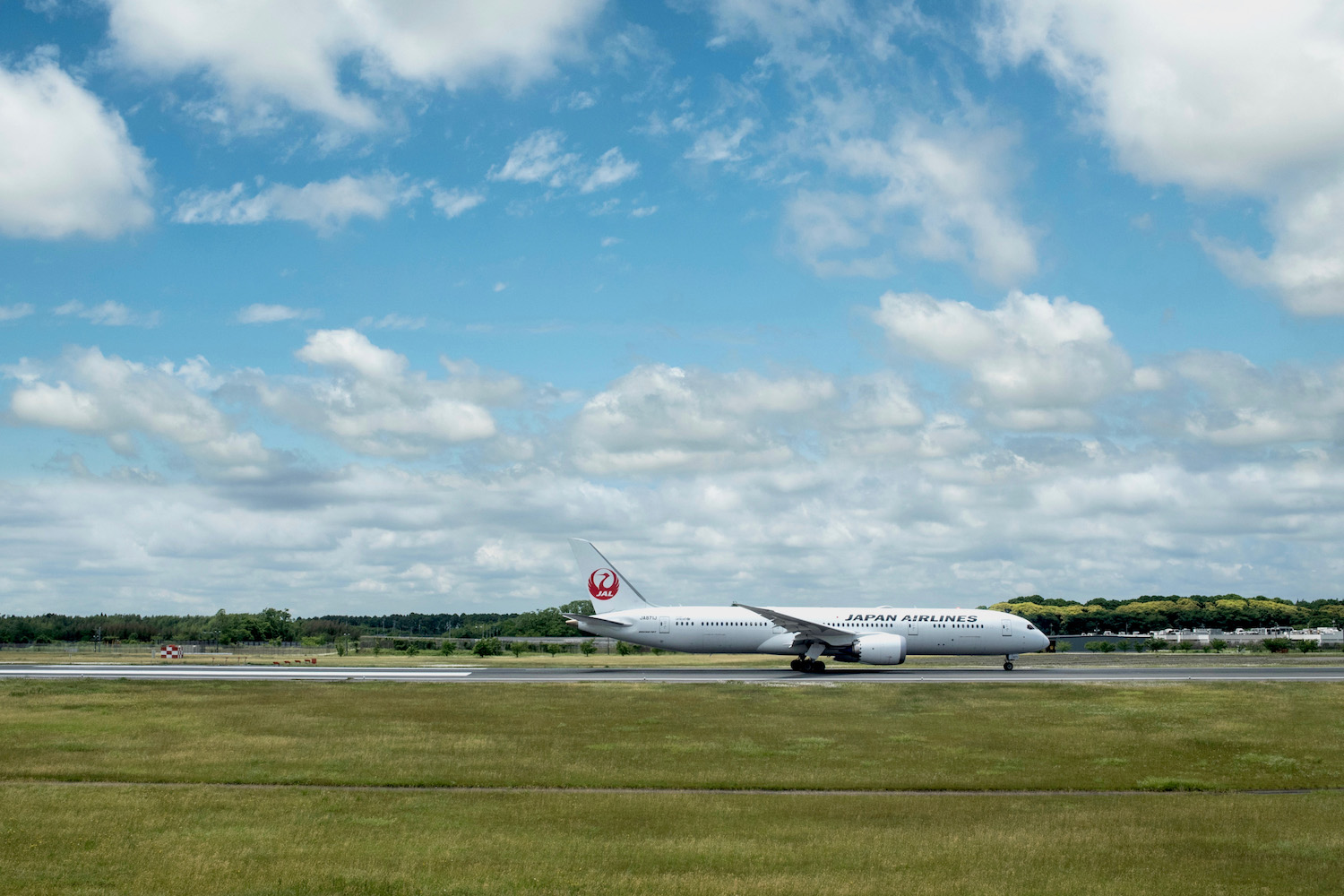
Using Miles and Points for Flights to Japan
September 28, 2022 by Robert Schrader Leave a Comment
If you’re like most travelers, you’re looking for ways to keep your trip to Japan cost down, without sacrificing convenience, comfort of the quality of the experience. At the same time, Japan is simply an expensive country —and flight prices do little to remedy this fact.
Using miles and points to travel to Japan offers a lot of benefits, though it’s not necessarily the cheapest way to get to Japan. Continue reading to see our best tips and tricks for booking flights to Japan the travel hacker way.
What’s the Cost of a Flight to Japan?
As a general rule, flights to Japan are expensive, whether you’re flying in economy, premium economy, business or first class. This is especially true for nonstop flights to Japan, and particularly so on routes that have no competition, such as San Diego to Tokyo on JAL, or United Airlines’ San Francisco to Osaka flight. Particularly, but not exclusively: Several airlines operate flights from Bangkok to Japan’s major airports, but prices in all classes of service remain high almost all year.

When it comes to a specific plane ticket to Japan cost, it’s difficult to name an exact figure, but you should expect to pay no less than $1,000 round-trip (in economy) from most cities in the US and Europe, and at least $500 return from points within Asia, sometimes even including neighboring countries like China and South Korea . Business class flights are several times more expensive—it’s rare to see round-trip premium class tickets between Japan and Europe or North America for under $3,000.
How to Find the Cheapest Way to Get to Japan
Japan flight deals.
Japan airfare deals are rare, but they are possible. Lower prices are particularly common on carriers that offer only connecting service to Japan, such as flying Air China via Beijing from Europe or the US (before covid-19, I saw prices under $700 return) or flying an airline such as Philippine Airlines from Kuala Lumpur to Nagoya via Manila or Cebu for somewhere in the $300 range. For what it’s worth, Taiwan (which is probably the cheapest country to fly to Japan from) is almost always on the low end of the Japan flight price spectrum.
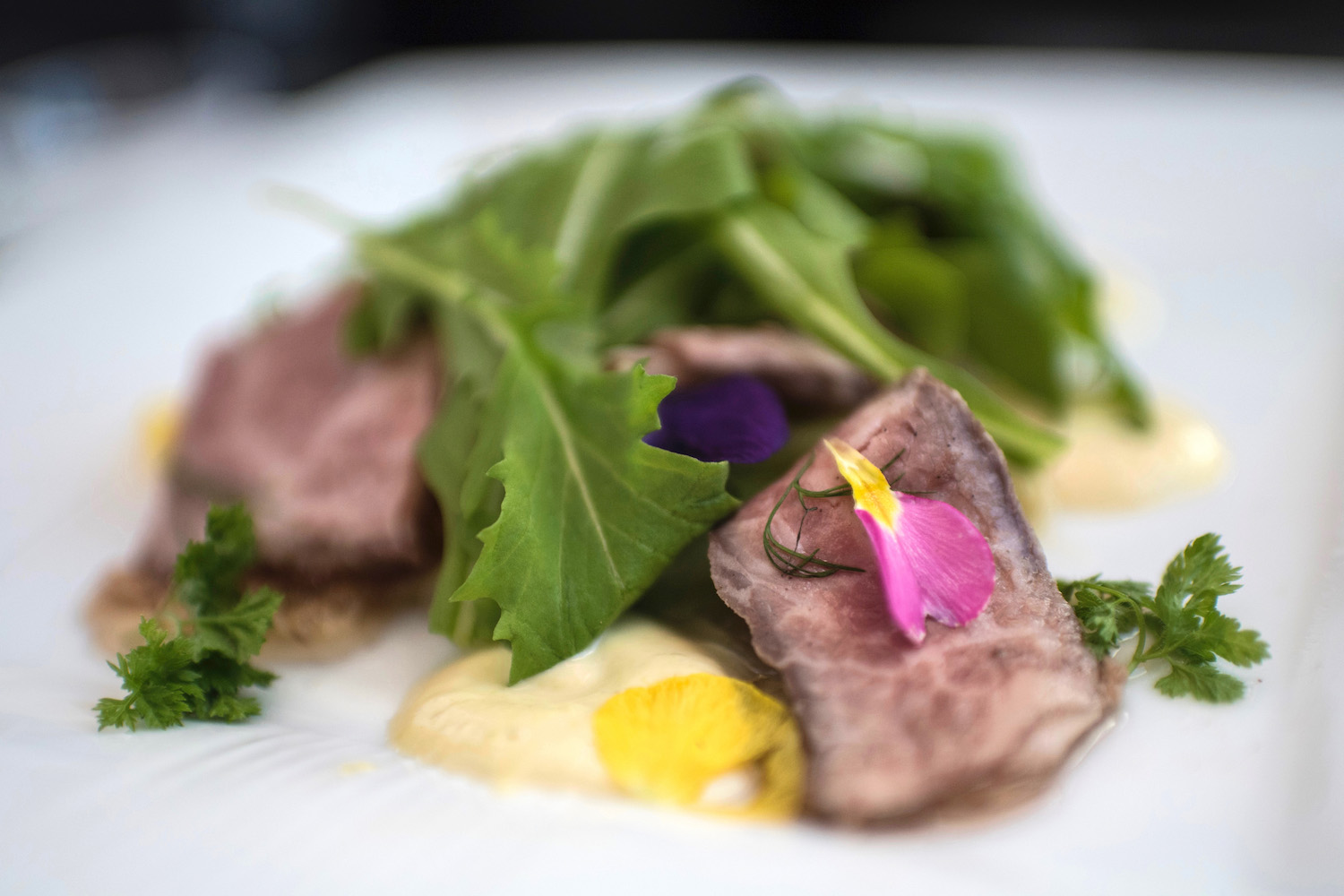
Barring a great Japan flight sale (and keeping in mind that these occur rarely, since demand for travel to Japan tends to be strong year round), another way to save on flights to Japan is to fly a low cost carrier. Previously this was only an option from points within Asia—namely, flying Peach from Okinawa to Bangkok, or AirAsia X to Japan from Bangkok, Kuala Lumpur and Jakarta. But now that AirAsia X offers flights to Honolulu (via Osaka) and Singapore’s Scoot flies to Europe, the game has changed.
Frequent Flyer Miles
Of course, this article isn’t about paying cash for flights to Japan—it’s about using miles and points to find the cheapest way to fly to Japan. And what about the Japan Airlines frequent flyer program, Mileage Bank? The good news is that rates for redemptions are fair (which might come as a surprise, if you’ve ever wondered “why is Japan Airlines so expensive?”) even though they devalued slightly in 2018 . The bad news is that unless you frequently fly JAL or credit partner flights to your JMB account, points can be difficult to amass. The only credit card transfer partner for JMB is Marriott Bonvoy, whose credit card often has no sign-up bonus.
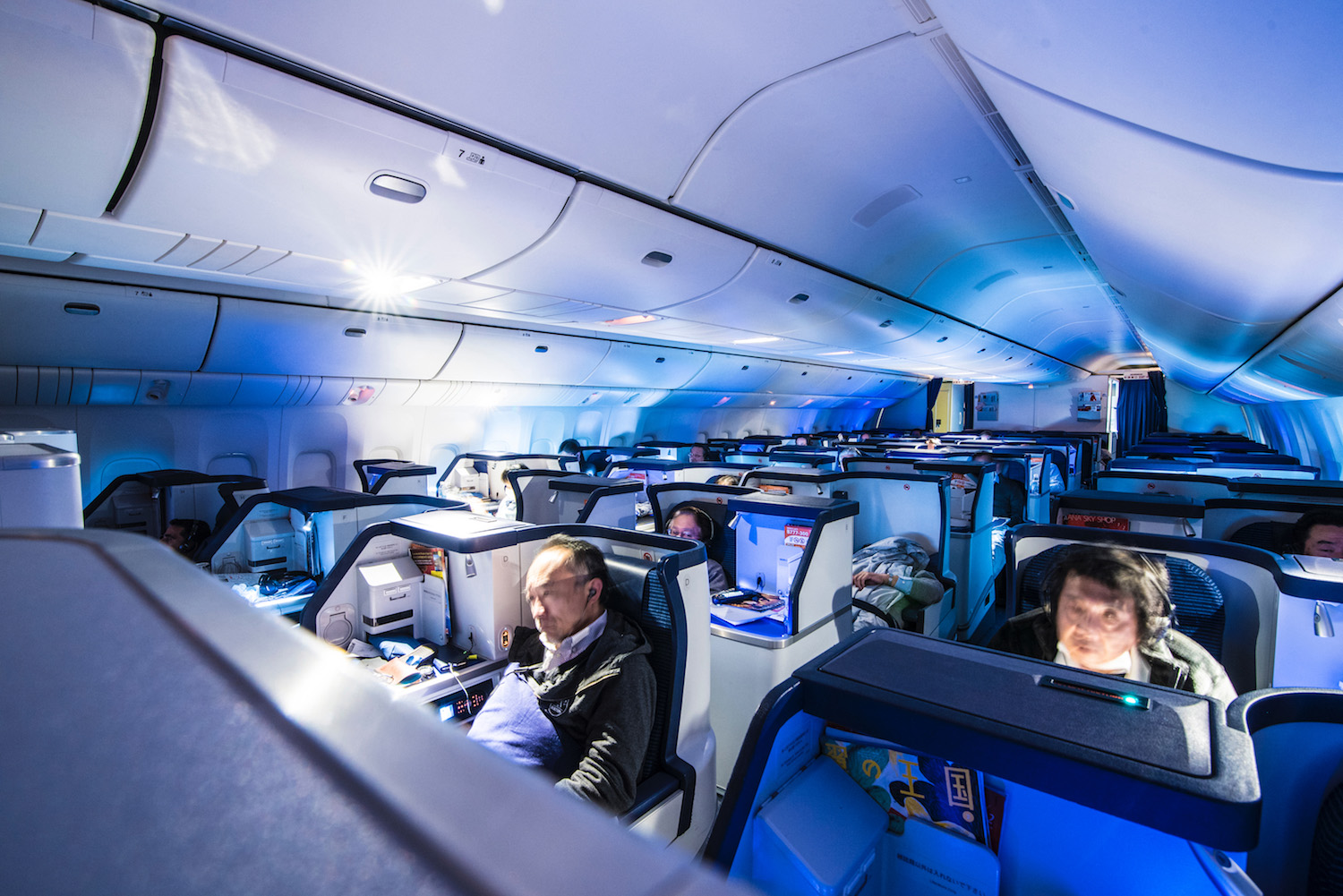
The ANA award chart is likewise favorable—at least if you’re traveling round-trip, since an ANA one-way award isn’t possible. It’s better than JAL’s, too, in that ANA is a transfer partner of AMEX Membership Rewards, making miles easier to accumulate. Keep in mind that while ANA’s low redemption rates can be appealing (according to the ANA mileage chart, round-trip in business class from Europe to Japan or vice-versa is only 95,000 ANA Mileage Club Points), transfers aren’t instant and holding awards is not possible, which means availability could technically disappear as you wait for your points to arrive. NOTE: As of late 2022, both JAL and ANA awards (at least when booking directly with each airline) are plagued by exorbitant fuel surcharges.
Credit Card Points
A quick Google search RE: what airlines fly to Japan will overwhelm even the most detail-minded person, since just about every airline geographically capable of doing so has flights to at least Tokyo. While most of these airlines pale in comparison to ANA and JAL, especially in business class , booking flights to Japan using frequent flyer points is generally much easier on non-Japanese airlines, even if prices are higher. This can certainly be the cheapest way to travel to Japan.

For example, while business class flights to Tokyo from Los Angeles cost as little as 80,000 United MileagePlus miles one-way (it only takes 75,000 ANA Mileage Club points, by comparison, to book a round-trip ticket), the flexibility of flying one-way is valuable for many travelers, United miles are easier to get than ANA Mileage Club points and United’s online booking system is a lot more straightforward than ANA’s, to say nothing of how simple the ANA award chart is. When using miles and points to book a flight to Japan, take careful stock of all your options and choose the one that offers the greatest reward for the least effort.
Other Ways to Fly to Japan Cheap
For most travelers, the cheapest way to Japan is contained among the strategies I’ve listed above. However, there are some other approaches you can take if you still can’t find the ticket price you want using these methods, though you do have to accept one truth before you begin: It just isn’t that cheap to fly to Japan!
Taking a connecting flight is one example. To be sure, the cheapest way to get to Japan from Europe is often through China, which is not a great value proposition in any way other than monetarily—Air China doesn’t compare to ANA or JAL in any positive way. Another way to save on your next flight to Japan is taking advantage of flash sales, which you can learn about by reading airfare blogs or even by subscribing directly to airlines’ email newsletters.
Other FAQ About Flying to Japan
What is the cheapest month to fly to japan.
There’s no one cheapest month for flying to Japan, although certain seasons are cheaper than others. Namely, winter months between December and February tend to be cheap, unless you’re flying directly to the winter sports capital of Sapporo, Hokkaido.
What is the cheapest city in Japan to fly to?
Tokyo’s Haneda and Narita Airports host the most intercontinental flights into Japan, so flights to Tokyo tend to be cheaper than those to other cities like Osaka, Nagoya, Fukuoka, Sapporo and Sendai. Note that sometimes, prices between Narita and Haneda can even be different.
How much does a round trip to Japan cost?
The price of a round-trip ticket to Japan varies depending on where your travel originates and the class of service you choose. While economy class flights between Japan and Asian countries like Taiwan and Thailand can cost as little as $300 round-trip, first- and business-class flights from long-haul destinations in Europe and North America can easily go for $5,000-10,000.
The Bottom Line
Are tickets to Japan cheap or expensive? They’re definitely not cheap, although using miles and points to book them can definitely result in a lower cost depending on how you play your cards. At the same time, since frequent flyer points for Japanese airlines can be difficult to acquire, you might actually end up spending more time (and, in some cases, money) going this route. Ultimately, the cheapest way to get to Japan (from US other otherwise) will depend on the particulars of your travel situation. Make your next trip to Japan your next yet when you hire me to plan a custom Japan itinerary
Plan Your Japan Trip

Subscribe to email updates!
Words, images and design ©2018-2024 Robert Schrader, All rights reserved. Read Privacy Policy or view sitemap .
- Travel Tips
- Climate & Seasons
When Is the Best and Cheapest Time to Visit Japan in 2023?

From skiing in Hokkaido to sunbathing in Okinawa, there's such a huge range of things to enjoy in Japan throughout the year. However, weather extremes and surges of tourists at certain times of the year can be seriously disruptive if you don’t plan ahead. This article will cover the best time to visit Japan to see highlights like cherry blossoms and autumn foliage, as well as specific dates to avoid and some budget travel tips for amazing experiences in the off seasons.

This post may contain affiliate links. If you buy through them, we may earn a commission at no additional cost to you.
Understanding the Climate and Seasons of Japan
While Japan is not the largest country by area, it has an extremely varied climate. Its northern areas such as Hokkaido see long, snowy winters, while its southern Okinawa islands (shown as the "Ryukyu Islands" in the above photo) have sunny, subtropical climates. Popular tourist destinations like Tokyo, Osaka, and the Mt. Fuji area are located on the Pacific Ocean side of the country. These areas see four distinct seasons, with hot, humid summers and cold winters.
For visitors, this means it’s best to consider not just the season but the climate of the specific areas you plan to visit. A winter trip to snowy Hokkaido will be entirely different to a visit to the Okinawa islands. Your destination will also impact when you can see seasonal highlights like cherry blossoms or autumn foliage.
If you like to think ahead, we've prepared month-by-month guides to the climate and seasonal highlights for major tourist destinations in Japan. Check them out for info about exactly what to expect, what clothes to pack, and what to do to make the most of the season!
- Guide to Hokkaido's Weather & Climate
- Guide to Tokyo's Weather & Climate
- Guide to Yokohama's Weather and Climate
- G uide to Kyoto's Weather and Climate
- Guide to Fukuoka's Weather & Climate
- Guide to Okinawa's Weather and Climate
What Are the Best Times to Visit Japan?
Cherry blossom season: march - april.
Spring in Japan is synonymous with cherry blossoms, which bloom all over the country around April each year. This is undoubtedly one of the most beautiful times to visit Japan, and the sight of Japan’s cities and parks tinted in shades of pink draws visitors from all over the world.
Cherry trees only bloom for around two weeks, with the much-anticipated full bloom period lasting as little as a few days. However, because of Japan's varied climate, the trees bloom in a wave through the country over the course of around a month. To ensure you’re timing your trip just right to see the trees in full bloom, it’s best to check our cherry blossom forecast (yes, Japan forecasts the cherry blossoms!). Also be aware that popular tourist areas like Tokyo and Kyoto can get very busy during this period, so book your accommodation and other tickets well ahead if you can. To avoid the worst of the crowds, you can also check out our roundups of little-known cherry blossom spots in Tokyo and Kyoto .
If you can’t catch the cherry blossoms, spring in Japan has plenty of other flowers and scenery to offer. Plum blossoms are in bloom around February and March, while wisterias , tulips, roses, and nemophila bloom around April and May. While these flowers aren’t quite as prevalent as cherry blossoms, we're confident there will be more than enough beautiful flower fields , gardens, and parks to satisfy you!
Festival Season: June - August
If you’re interested in Japan’s matsuri (festival) culture, summer is the best time to visit. Japan’s “big three” festivals are the Gion Matsuri in Kyoto (July), Kanda Festival in Tokyo (May), and Tenjin Festival in Osaka (July), but festivals are held throughout the country in the summer months. Japanese matsuri are important religious and cultural events, often with public performances like parades and dances to enjoy. The festive atmosphere, chance to dress up in summer robes called "yukata", and festival food and games are another highlight, particularly if you’re visiting with kids. To learn more about Japan's matsuri culture and when the dates fall, read our comprehensive guide to festivals in all 47 of Japan's prefectures !
Summer is also an amazing time for fireworks! Many of Japan's top firework shows usually happen during the summer months, drawing in spectators from all over Japan and even abroad. Some are so popular that you need to reserve the best viewing spots well in advance! Food stalls will often be set up near popular spectating spots, so even if you choose not to attend a festival, you can always have your fill of Japanese festival food at a firework show.
Of course, since Japan is an island country, summer is also a great time to visit its many coastal resorts and islands. Visitors flock to Okinawa in the south and the Seto Inland Sea area in the summer to soak up some sun and scenery. In Japan, many beaches are closed for swimming and surfing outside the summer months, so if you’re dreaming of a beach getaway, check these dates in advance. For beach holiday inspiration, we've covered TripAdvisor's top 10 best beaches in Japan here !
Fall Color Season: October and November
For many people in Japan, the fall color season is just as an exciting time of year as the cherry blossom season. The change of the trees signals the end of a long, humid summer, and in October and November (and sometimes even December), people in Japan flock to parks and gardens to see stunning red maples and brilliant yellow ginko trees. Many shrines and temples hold special evening viewings on their grounds, and "otsukimi", or moon viewing festivals, are also a popular activity at this time of year.
An autumn trip to Japan has many benefits: while popular autumn color hotspots may be busy, the scenery is stunning, and the weather can be more comfortable than the winter and summer months, too. This milder weather makes it easier to enjoy all kinds of foods, including local autumn delicacies such as persimmons, grilled Pacific saury, and roasted sweet potatoes.
For more about fall foliage spots and dates for different parts of Japan, we highly recommend checking out our nationwide fall foliage forecast . Keep in mind that the Okinawa islands have a subtropical climate, so you won't find any fall foliage spots there.
Ski Season: December - April
Japan’s mountainous geography is paradise for fans of winter sports. The ski season in Japan falls around December to April, with major resorts clustered around the Nagano area in the Japanese Alps and the northern island of Hokkaido, which is particularly prized among ski fanatics for its high-quality powder snow. There are around 500 ski resorts big and small throughout the country, including world-class resorts like Niseko in Hokkaido and Hakuba in Nagano. For more information on these, we've put together a guide to some of the best resorts for powder snow in Japan .
One highlight of a ski trip to Japan is the abundance of natural hot springs, delicious food, and great sightseeing to round out your trip. Here are some fantastic open air hot springs in Hokkaido to get you inspired!
Do be aware that the winter season coincides with New Year's, which in Japan means a peak in domestic travel and scheduled holidays for many shops and attractions. Keep that in mind as you plan any activities from around December 29th to January 5th.
What Times Should You Avoid When Visiting Japan?
Public holidays: domestic travel peaks.
Just like Thanksgiving or Christmas in other countries, Japan has certain times of the year where domestic travel peaks as people travel home to celebrate the holidays with family. Japan’s work culture also means that many people plan their travel around certain clusters of public holidays, particularly Golden Week, where some 20 million people travel in Japan. If you’re planning a trip to Japan, it’s worth considering avoiding these four domestic travel peaks:
- Golden Week: April 29 - May 5
- Bon Festival (Obon): August 13 - 15
- Silver Week: September 19 - 23 (Note: This occurs every couple of years when two public holidays in September align to form a five-day holiday)
- New Year's: December 29 - January 3 (Note: Japan doesn't have any official Christmas holidays, so this is actually like Christmas and New Year's combined)
*Please note that the exact dates of these holidays will vary from year to year.
If you do travel during these times, be prepared for very busy planes and bullet trains, traffic jams on highways, and peak pricing for accommodation (particularly true for Golden Week).
If you know your trip is going to coincide with these dates, book ahead where possible. If you can, staying within major cities and avoiding inter-city travel around the beginning and end of these periods will help minimize the hassle. When you're planning, refer to our up-to-date Japan Holiday Calendar for all the public holiday info you need to know.
Rainy Season
Japan’s rainy season, called "tsuyu" or "baiyu", typically falls between June to mid-July. While you may picture heavy monsoonal rain, Japan’s rainy period doesn’t mean you’ll be battling non-stop downpours every day. However, if you’re planning a lot of outdoor sightseeing, the rain and accompanying early-summer humidity can get in your way. Here are the average dates for the rainy season in Japan at popular spots, but keep in mind you can also expect some extra rainfall as the weather cools in September and October, too.
Okinawa: May 9th - June 23rd Fukuoka: June 5th - July 19th Kyoto/Osaka: June 7th - July 21st Tokyo: June 8th - July 21st Nagoya: June 8th - July 21st Sendai: June 12th - July 25th Hokkaido: Doesn't have a rainy season
For everything else you need to know about tsuyu before your trip, including sights in Japan that are actually best seen during this time, check out our guide to Japan's rainy season !
Climatic Extremes: Mid-Summer, Mid-Winter
Another factor to keep in mind is climate. While internationally speaking, the Japanese climate does not typically go into extremes of heat or cold, spending your day sweating or shivering can impact how much fun you’re having. In the peak of summer, temperatures in cities like Tokyo and Osaka will reach the high 30s (80s in Fahrenheit), often with intense humidity that can make the days feel hotter. In winter, on the other hand, it can dip below zero (32°F).
Your tolerance for this will depend on the environment you were raised in. If you’re coming from a warm part of the world, Japan's winters can be tough to handle. You might have to factor in the cost of buying cold weather clothes that you don't need at home. On the other hand, even people from warm countries can find the hot and humid summers in Japan intense, so if you're from a cooler climate, you might find a spring or autumn visit a safer bet.
Typhoon Season
Typhoon season, which peaks in August and September, can also present issues for travelers. Japan's building codes and infrastructure are built to handle these types of storms, so there is no need to reconsider a summer trip simply because of them. However, if you are in Japan from May to October, be aware that public transport, shops, and attractions may temporarily close if a typhoon is predicted. In severe cases, power outages and other disruptions are possible. So that you're not caught out, we recommend installing the Safety Tips app from the Japan Tourism Agency. This app gives early warning alerts in multiple languages for typhoons, earthquakes, tsunami, and other adverse weather events.
Lunar New Year
One element some overlook when planning a trip to Japan is the timing of other international holidays. For example, in 2019, a little over 50% of visitors to Japan came from China, Hong Kong, and Taiwan, all of whom celebrate Lunar New Year in late January or early February. While Japan doesn't celebrate the Lunar New Year, the holiday period means that sightseeing areas can be a bit more crowded with sightseers and tour groups taking advantage of the holiday.

Cheapest Times to Visit Japan: Tips for Off-Peak Visits
Some of the most beautiful times in Japan, like the cherry blossom season, can mean dealing with crowds and paying a premium for flights and accommodation. On the flipside, while some people may consider a rainy day a vacation disaster, others don't mind the rainy season if it means seeing the hydrangea-dotted temples and brilliant green foliage without the crowds.
If you’re budget-conscious, paying attention to the high and low seasons in different parts of Japan can be a profitable exercise. For example, the ski season in the Japanese Alps is justifiably busy with winter sports fans, but a trip in the low season offers breathtaking scenery, hot springs, and stays at luxurious resorts at lower prices. In recent years, more and more ski resorts are offering activities like glamping or adventure sports to attract summer visitors, too.
Winter in Okinawa can also be a great escape if you need a break from the cold, and flights and accommodation will be cheaper to boot. While it might be a little chilly for swimming, you can indulge in fresh seafood, explore the fascinating Ryukyu Kingdom (the former name for Okinawa) culture, and enjoy your run of gorgeous ocean scenery, including Japan's earliest cherry blossoms! Check out our guide to 50 things to do in Okinawa for more ideas.
Low seasons are the cheapest time of year to fly to Japan, so think outside the box to free up some extra funds for souvenirs!
Travel Smart and Enjoy Your Time in Japan!
Japan's culture and geography really does mean that there's something to enjoy whatever time of year you visit. When thinking about when to come, it's good to consider practical matters like your tolerance for heat or cold, and also what excites you about Japan. If it's gorgeous scenery, consider the cherry blossom or autumn foliage season. If you're interested in Japan's unique culture, a trip full of the music, dance, and local traditions of Japan's summer festivals might be the right pick for you. On the other hand, if you'd like a relaxed trip without crowds, maybe you'd prefer to visit Japan during an off-peak season instead.
Now that you have a sense of when the best time of year to visit Japan for you is, it's time to think about where to go! If you're still deciding, check out our comprehensive guides to some of Japan's most popular locations for inspiration:
- The Ultimate Kyoto Travel Guide
- The Ultimate Tokyo Travel Guide
- The Ultimate Osaka Travel Guide
- The Ultimate Mt. Fuji Travel Guide
The information in this article is accurate at the time of publication.
tsunagu Japan Newsletter
Subscribe to our free newsletter and we'll show you the best Japan has to offer!

- budget travel
- coronavirus
About the author
Related Articles
Related interests.
- Rainy season
Restaurant Search
Tsunagu japan sns.
Subscribe to the tsunagu Japan Newsletter
Sign up to our free newsletter to discover the best Japan has to offer.
Connect with Japan through tsunagu Japan
Let us introduce you to the best of Japan through our free newsletter: sightseeing spots, delicious food, deep culture, best places to stay, and more!

15 Essential Travel Hacks When Visiting Japan
A sk anybody what's on their travel bucket list, and their response is sure to include "Japan." Thanks to a combination of rich heritage, lush landscapes, and labyrinth cities packed with skyscrapers, temples, and tourist traps alike, the country has soared in popularity, with American Express claiming that the number of bookings has increased by 1,300% since 2019 (via Bloomberg ).
Part of what makes Japan so alluring is that its culture and customs are so distinct and unique to those of other countries. That's also what makes it an overwhelming travel destination, especially for first-time visitors. If you start your journey in a major city like Tokyo, Yokohama, or Osaka, you're instantly immersed in a world of neon lights, bustling crowds, loud noises, a million different smells, and sensory overload.
With so much to see, do, and eat, a trip to Japan really isn't the kind of vacation you can make up as you go along. The last thing you need is to run into an easily avoided stumbling block like a lack of internet or 30 minutes spent figuring out the route to your next destination — which is why you'll want to arrive armed with as much knowledge as possible.
Read more: 28 Bucket List Destinations That Everyone Needs To Experience At Least Once
Get Quick Meals At 7-Eleven
It's tough to walk for longer than 20 seconds without stumbling upon a convenience store in Japan. Also known as conbini, these stores are usually open 24 hours a day and are packed full of affordable tasty treats that will keep you going without the time (and money) it takes to eat at an actual restaurant.
For as cheap as 200 yen ($1.34), you can enjoy the likes of onigiri rice balls, chicken karaage, sandos, oden, and bento boxes. We also recommend picking up taiyaki for a quick sugar boost. Shaped like fish and made of pancake or waffle batter, they're usually filled with red bean paste, custard, and chocolate and make for an endlessly addictive snack.
The most common store is 7-Eleven, which has over 20,000 locations throughout Japan and is miles above its U.S. counterpart in the culinary department. There are also over 15,000 FamilyMarts scattered across the country, but they typically don't offer as much variety.
Get Pocket Wi-Fi
Public Wi-Fi is surprisingly scarce in Japan, which can put you in some tough spots if you get lost mid-metro commute. Fortunately, pocket Wi-Fi exists -- and it is a lifesaver. For as cheap as $5 a day, you can rent a portable device that will allow you to access the internet on the go, even on the train. The majority will allow you to connect multiple devices at the same time and come in a variety of different speeds and GB, with some even offering unlimited data throughout your stay.
If you rent in advance through a website like Ninja WiFi or Japan Wireless , you can pick up the device (also known by the much cuter name of a Wi-Fi Egg) at a designated counter once you've got through customs at airports including Haneda and Narita in Tokyo, Chubu Centrair, Kansai International, Fukuoka, and more. Once you're done, you can just pop it into the returns box at the airport on the way back. Easy.
Buy A JR Pass
Sadly, the JR (Japan Rail) Pass isn't as cheap as it once was. It surged in price by 70% in July 2023 as the yen continued to decline in value against other currencies around the world. However, if your itinerary includes extensive train travel, it's still worth the purchase.
The Japan Rail Pass will allow you to ride the rail to your heart's desire -- including the country's infamous, lightning-speed Shinkansen bullet trains (for a supplementary fee) and the Narita Express. It's more expensive to purchase once in Japan, so we recommend buying yours in advance on the JRailPass website where it costs $340.65 for seven days, $544.45 for 14 days, and $680.35 for 21 days.
If your visit is limited to just one or two cities, such as Tokyo and Osaka or Tokyo and Kyoto, then it probably isn't necessary. For example, a trip between Tokyo and Osaka typically costs $120 each way, which is considerably cheaper than forking out a few hundred dollars for a JR Pass.
Download Train Schedules And Maps
Japan has incredible public transportation. It also happens to be extremely overwhelming if it's your first (or second, or third) time in the country. Tokyo's metro can be especially confusing, with nine different train lines and 180 different stations to navigate. Its roads are even more complex with the majority not even having names, baffling even the city's own taxi drivers.
With that in mind, future-proofing for any situation where you may end up lost in an unknown place is always a good idea. Download or screenshot train schedules ahead of time through the JRailPass website, which offers both interactive and PDF versions of Tokyo, Osaka, and Kyoto's transportation systems. You can also download an offline version of the local area on Google Maps. This will also help if you face the aforementioned pesky issue of scarce public Wi-Fi, or if your portable Wi-Fi runs out of juice midday.
Use Citymapper
If you're visiting Tokyo, Citymapper is a must. Just like it does for multiple other cities across the globe, the award-winning app analyzes public transportation, congestion, and distance to figure out all the different ways you can reach your destination, and precisely how many minutes each option will take.
Whether it's walking, cycling, taxis, metro, or a combination of everything, all you need to do is select your chosen route and follow Citymapper's step-by-step instructions. When we say step-by-step, we mean it. The app's so smart that it will even tell you which exits and entrances to use at each station to make your journey as stress-free as possible. If you miss your stop or don't quite make your train, the app will also take that into account to restrategize your trip ASAP. You'll need to be online to request a new route, but if you check your journey ahead of time, you can save it to your homepage for offline use.
Visit Between January And March
There is no one "best" time to visit Japan, but there is a most convenient time. January to March tends to attract less crowds and will also usually bring the cheapest flights of the year. While it'll almost certainly be cold, you'll skip typhoon season and be in with a chance of seeing Japan in the snow.
If you do choose to visit at this time, just be sure to check the dates of the Lunar New Year (AKA Chinese New Year). This tends to be a public holiday across the region and will see cities across Japan packed with tourists. As it's such a popular time to travel, this will also be the exception to the "January to March is cheaper" rule with hotels and airlines driving up their prices over the holiday. The same is true of the end of March, which marks the beginning of cherry blossom season.
Make Advanced Reservations
There's a lot to enjoy in Japan. The problem is that everybody else wants to enjoy these things, too. Tourist attractions often book up months in advance, and a lot of them don't sell tickets at the gate, which doesn't leave much space for spontaneity for the average tourist visiting Japan .
If you plan on visiting the likes of the Warner Bros. Studio Tour Tokyo - The Making of Harry Potter, Tokyo Disney Resort, Ghibli Park, Shibuya Sky observation deck, Teamlab Planets, or the Studio Ghibli Museum, it's best to sort your tickets sooner rather than later. The Ghibli Museum is especially challenging, with tickets for the next month going on sale at 10 a.m. on the 10th of the month prior.
The same is true of the hotels at Tokyo Disney Resort . With one of the most impressive Disney hotel lineups in the world (including the MiraCosta, a hotel that is actually inside Tokyo DisneySea), rooms are in extremely high demand. These go on sale from 11 a.m. four months before the dates you hope to stay and are bookable through the Tokyo Disney Resort Online Reservations & Tickets website.
Download The Japan Connected-Free Wi-Fi App
If you don't want the responsibility of carrying around and charging pocket Wi-Fi, download the Japan Connected -free Wi-Fi app. Whether you need to double-check directions or just have a quick midday TikTok break, this handy tool will search over 170,000 internet hotspots to find the closest location to you. The majority of these will likely be at a 7-Eleven, where you'll almost always be able to go online.
As if that feature isn't useful enough, the app eliminates the need to fill in the registration forms that typically serve as a barrier before you can access public Wi-Fi. Fill out your name and email once and the app will complete each form on your behalf. While you used to need to be online to find the Internet (which kind of defeats the app's entire purpose), you can now download the offline map to ensure you can always find a connection. Just remember to be careful with what data you enter or share while using any public Wi-Fi network .
Japan has been a "cash is king" country for years, meaning paying with notes and coins is the default over ApplePay and credit cards. This attitude has slipped in recent years, but cash still has a strong grip on the country's residents with only 36% of people preferring cashless payments.
While you should be able to use your card in most major outlets and tourist locations -- such as department stores, malls, theme parks, supermarkets, and even taxis -- a lot of restaurants, cafes, and bars still prefer to be paid in cash. This number will be much higher outside of major cities, and many local restaurants, markets, or temples won't have the facilities to accept card payments even if they want to. Exchanging at least a chunk of your spending money into Japanese yen ahead of time will save you in sticky situations (plus it helps you control your spending, which is always a bonus).
Choose Taxis Over Ubers
Although Uber exists in Japan, it's not as widespread or commonplace as in countries like the United States, Canada, or the United Kingdom. Journeys tend to be more expensive than those taken with local cabs, making the latter the service of choice for locals and tourists alike.
The upside to Uber is, of course, the fact that it's so familiar for many tourists. It's easy to order your taxi and pay via card, and the entire process is in English. However, your cheapest option is to hail taxis on the street, as you won't need to pay a base fare for the pick-up service. It'll say on the front of a car in Japanese if it's occupied. It's also color-coded so tourists can understand. Red means it's taken. Green means it's available. If you do want to pre-book, most locals prefer to use the Go app for journeys anywhere within Japan's 47 prefectures. This works similarly to Uber, except it allows you to pay with both cash and card and will give you a flat rate for journeys to and from the airport.
Purchase A Suica Card
The question isn't so much what a Suica card can do ; what can't it do? This prepaid, contactless card can be repeatedly loaded up with more cash to pay for public transport, including the metro, trains, buses, and taxis. Beyond transportation, Suica is also accepted in many shops, restaurants, cafes, and even vending machines. Just look out for the Suica symbol to know if they do -- and if you can't spot it, it's at least worth asking.
You can purchase your card before arriving in Japan and return it at the end of your trip to recover your 500 yen ($12) deposit. Due to a manufacturing shortage, the sale of new Suica cards is temporarily on hold as of June 2023, but if you're on a temporary visa, you can still purchase a Welcome Suica card. This doesn't require a deposit, doesn't need to be returned, and is valid for 28 days. These can only be purchased inside Japan at locations such as Narita and Haneda airports and will come with a reference paper which you'll need to keep on your person at all times.
Utilize Storage Lockers
For security reasons, storage lockers are a rarity at train stations around the world. Japan is an exception. You'd be hard-pressed to find a major station without coin lockers (which, despite the name, can actually be used with a Suica card, too), and in Tokyo, most stations come equipped with storage facilities.
Baggage storage is one of those things you don't realize you'll need until you desperately need it. These lockers are useful if you only have a few hours before heading to your hotel or next destination and want to stow away your belongings so you can freely explore. They also happen to be extremely cheap, typically costing between $1 and $5. There's usually no problem finding a vacant locker, but if you are struggling, you can download the SPACER app , which will allow you to find and reserve a locker at major stations such as Shinjuku, Osaka, and Shibuya in advance. This is currently only available in Japanese, but there are plans for an English version in the near future.
Avoid National Holidays
Lunar New Year isn't the only holiday worth skipping if you want to avoid the crowds. National holidays bring in huge crowds anywhere, but especially Japan, where workers get little annual leave and want to take advantage of the break. If you do decide to brave big attractions like Shibuya Crossing, Senso-ji Temple, or Tokyo Skytree, you'll likely find yourself shoulder-to-shoulder with fellow tourists.
For a quieter vacation, April 29 to May 6 -- or, Golden Week -- is one of Japan's busiest holiday periods. This tends to be the most hectic season for the likes of Tokyo Disney Resort and Universal Studios Japan, where you can expect to wait in long lines for everything, from the park entrance to the restrooms. While Christmas isn't a national holiday in Japan, it is for many other countries, meaning the festive season can also bring an influx of tourists to both of these locations. Late September (Silver Week), New Year, and the Obon Week in August are typically also very busy.
Claim Your Tax Refund
From clothes to gadgets, Japan is one of the most unique places for retail therapy in the world. If you're a tourist, you can also shop with the peace of mind that you'll get at least some of your money back. Any non-resident visiting Japan for less than six months can enjoy tax-free shopping, meaning you can reclaim 10% of the value of your purchase.
There are a few catches. First, you'll need to check that the store is in fact a "tax-free shop" by checking for a logo stating as such at the entrance. They're extremely common and can be found in the likes of Namba City, Echika Ikebukuro, and Seibu Shibuya. You'll also need to have spent more than 5,000 yen ($33) in the same store on the same day. Some stores will let you pay tax-free from the offset if you present your passport, while others will require you to present your receipt at a tax exemption counter on the same day to get your money back.
Download A Good Translation App
If you know Japanese, you're good to go. For those of us who aren't bilingual, Japan can be tough to navigate at times. While most signs in major cities will have translations, less than 30% of people living in Japan speak English, which means it's inevitable you'll hit the language barrier at some point during your stay.
A good translation app is a must, especially one that's able to translate pictures. Google Translate is always a go-to, but one of the best choices is iTranslate Translator . Not only can it tackle text, but you can also use it to scan and translate menus, signs, labels ... you name it. Best of all, it can work offline if you download the Japanese pack ahead of time. It's free to download but will cost you $5.99 a month to unlock its full potential. Considering how useful it is, it's better to spend $5.99 than find yourself stranded in a restaurant blind-ordering a dish because you can't read the menu.
Read the original article on Explore .
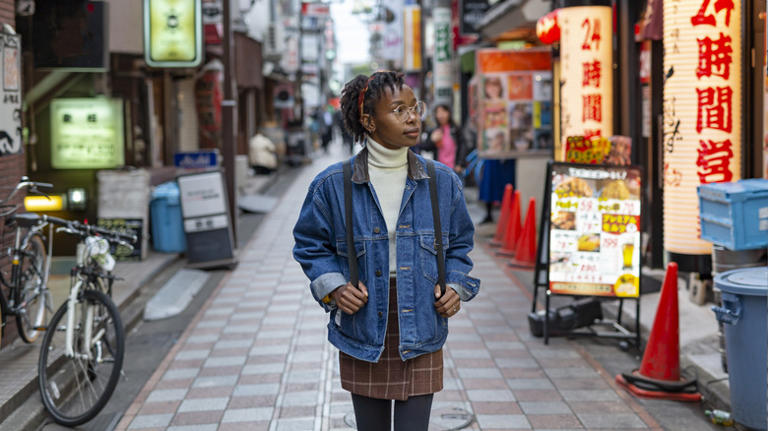
Japan On Sale: Why It’s Summer’s Big Travel Bargain
Americans are flocking to Japan in droves, thanks to the strong greenback that makes everything seem 15% cheaper than last year.
- Share to Facebook
- Share to Twitter
- Share to Linkedin
Thanks to the strong U.S. dollar, Japan feels 35% cheaper than five years ago.
T he U.S. dollar is going strong relative to many foreign currencies right now, which translates to international travel bargains for savvy shoppers. One of the easiest way for American travelers to grab a “deal” on an overseas trip is to choose a destination where the comparatively strong dollar delivers a built-in automatic discount for on-the-ground costs like hotels, dining and attractions.
Right now, a trip to many countries in Asia is easier on the wallet than in recent years. Is Bangkok or Phuket on your bucket list? The dollar buys 8.5% more Thai baht than a year ago. The greenback also buys 8.5% more Vietnamese dong and Indonesian rupiah, 6.2% more Malaysian ringgit and 5% more Taiwan dollars.
But far and away the Asian currency most impacted by the strong U.S. economy is the Japanese yen. Today one U.S. dollar buys 156.36 yen, 15% more than one year ago, and an eye-popping 43% more than five years ago.
The weak yen has helped propel Japan to be the most popular destination in Asia. In March 2024, the number of visitors to Japan exceeded three million foreign tourists in a single month for the first time ever, according to the Japan National Tourism Organization (JNTO). That was 69.5% more than the same month the previous year and 11.6% more compared to March 2019.
While the lion’s share of those visitors came from neighboring Asian countries, American travelers are also getting the memo. In March, a record 290,100 Americans visited Japan in a single month—a 42% jump year over year and a 64% increase compared to the same month in 2019.
Unsurprisingly, the weaker yen has goosed spending by vacationers whose money goes further than in decades. Foreign visitors to Japan spent 1.75 trillion yen ($11.2 billion) in the January to March period, according to data from the JNTO. That’s an increase of 52% compared to pre-pandemic 2019.
Airfare to Japan
Japan is now so popular that it grabs 29% of all U.S.-based searches for trips to Asia and 8% of all international searches for the summer this year, according to the airfare-tracking site Hopper.
That huge demand has kept airfares ticking upward. For May departures, tickets from the U.S. to Japan are averaging $1,281 per ticket, up 4% from this time last year. Flights this summer are averaging $1,379 per ticket, up 2% from last year and up 26% from this time in 2019, according to Hopper data.
Meanwhile, additional supply is keeping airfare inflation in check as U.S. and Japanese airlines ramp up service between the two countries. Today about 60 flights leave the U.S. for Japan every day, 6% less than before the pandemic. Still, that’s a big improvement over this time last year, when only 49 daily flights were departing to Japanese destinations.
From June to August, carriers will be flying 9% more seats than last summer. And by midsummer, the market between the US and Japan will be nearly restored to pre-pandemic capacity.
Four U.S. airlines currently fly to Japan: United Airlines, with 19% share of the seats; Delta Air Lines, with 10%; and Hawaiian Airlines and American Airlines, each with 7% share of capacity. (Three Japanese airlines—Japan Airlines, All Nippon Airways and Zipair—make up over half of all scheduled seats.)
Hopper data shows that 92% of U.S. travelers planning trips to Japan want to fly into Tokyo, but a finite number of flights are allowed in and out of Haneda airport. The Japanese government determines how many slots to make available to U.S. carriers, which need to apply to the U.S. Department of Transportation (DOT) for the right to a route.
Last year, United Airlines and American Airlines applied to DOT to launch nonstop U.S.-to-Tokyo flights. United had wanted a new nonstop from Houston’s George Bush Intercontinental Airport (IAH) to Haneda. Instead, it was awarded a new Guam-to-Tokyo route, which it launched on May 1, joining United’s other Tokyo-bound flights from Newark, Los Angeles, San Francisco, Honolulu, Washington D.C. and other cities.
American Airlines’ newest route to Japan will launch on June 28. Flights from New York’s John F. Kennedy International Airport to Tokyo will be the carrier’s fourth daily nonstop to Haneda, joining existing service from Dallas, New York, Chicago, Los Angeles, San Francisco and other cities.

- Editorial Standards
- Reprints & Permissions
Join The Conversation
One Community. Many Voices. Create a free account to share your thoughts.
Forbes Community Guidelines
Our community is about connecting people through open and thoughtful conversations. We want our readers to share their views and exchange ideas and facts in a safe space.
In order to do so, please follow the posting rules in our site's Terms of Service. We've summarized some of those key rules below. Simply put, keep it civil.
Your post will be rejected if we notice that it seems to contain:
- False or intentionally out-of-context or misleading information
- Insults, profanity, incoherent, obscene or inflammatory language or threats of any kind
- Attacks on the identity of other commenters or the article's author
- Content that otherwise violates our site's terms.
User accounts will be blocked if we notice or believe that users are engaged in:
- Continuous attempts to re-post comments that have been previously moderated/rejected
- Racist, sexist, homophobic or other discriminatory comments
- Attempts or tactics that put the site security at risk
- Actions that otherwise violate our site's terms.
So, how can you be a power user?
- Stay on topic and share your insights
- Feel free to be clear and thoughtful to get your point across
- ‘Like’ or ‘Dislike’ to show your point of view.
- Protect your community.
- Use the report tool to alert us when someone breaks the rules.
Thanks for reading our community guidelines. Please read the full list of posting rules found in our site's Terms of Service.
7 Cheapest Destinations For 2024 That Offer The Most Travel Value
Looking for a cheap destination for your 2024 vacation?
- Find the cheapest vacation spots in 2024 with the Post Office's Holiday Money Report, focusing on currency strengths and local costs.
- Locations like Sunny Beach, Bulgaria, Sharm el-Sheikh, Egypt, and Algarve, Portugal offer affordable travel experiences with diverse activities.
- Tokyo and Hoi An, Vietnam provide inexpensive yet unforgettable experiences with free attractions like parks, shrines, and cultural sites.
Looking for a cheap vacation? The postal and financial services firm Post Office , located in the United Kingdom, has released a new travel report that highlights some of the most affordable vacation destinations for 2024. The yearly study is intended for tourists from the UK, although Americans might also benefit from this list.
The Holiday Money Report 2024 identifies some of the most affordable holiday locations by examining currency strengths, local costs, and necessary visitor fees in 40 well-liked vacation spots worldwide. The study rates locations using a barometer that accounts for the cost of eight necessities for tourists: beer, coffee, cola, water, wine, sunscreen, bug repellent, and a three-course dinner.
Furthermore, the report provides a decent idea of where travelers’ money will go the farthest, even if it excludes items like lodging and travel. Here are the seven cheapest destinations for 2024 that offer the most travel value.
10 Cheap Travel Destinations In The US, Ranked By Cost
7 sunny beach, bulgaria, travel cost per day: $78.26.
Sunny Beach, situated on Bulgaria's Black Sea coast, was built as a resort town for Bulgarian families in the 1950s and has grown to be the nation's top tourist destination over time. Due to the town's expansion over time, the town now offers vacationers an exceptionally wide range of possibilities. These include go karting, paintballing, casinos, music venues, and a massive waterpark.
Additionally, this cheap destination has a gorgeous waterfront, lined with tall buildings and featuring a lovely blue sea as well as a lengthy sandy beach. When it comes to nightlife, the neighborhood is known for its club scene. With a bustling nightlife and affordable costs, it's a great option if travelers are looking to go out with friends on a tight budget.
6 Sharm el-Sheikh, Egypt
Travel cost per day: $76.86.
Sharm El Sheikh is a popular destination for eco-tourists and divers due to its abundant marine life and hundreds of Red Sea coral reef locations. Over the past several decades, the tourism industry in this city on the Sinai Peninsula has expanded quickly, leading to the emergence of upscale resorts and sophisticated nightlife.
Sharm el-Sheikh, known for its affordability and value, stands out as one of the cheapest destinations in 2024, offering an array of budget-friendly activities. Snorkeling and diving in the crystal-clear waters of the Red Sea are must-dos, showcasing colorful coral reefs teeming with marine life.
For excursions on land, sampling delectable street cuisine and touring Old Sharm's bustling marketplaces provide rich cultural experiences without breaking the budget. Additionally, hiking Mount Sinai for breathtaking sunrise views comes at little cost, making Sharm el-Sheikh a treasure trove of affordable yet unforgettable experiences.
5 Algarve, Portugal
Travel cost per day: $74.76.
The Algarve region in Portugal, which offers culture, history, and scenic beauty at a far lower cost than in past years, is one of the cheapest destinations for 2024 that offers the most travel value. Travelers looking for an inexpensive yet stimulating break will find Algarve to be an exquisite destination with its sun-drenched beaches, quaint villages, and mouthwatering seafood.
Algarve's beautiful beaches are well-liked by people all over the world. This is particularly true if travelers go at the height of summer. Even with Algarve's growing popularity, this sunny region of Portugal continues to provide a ton of amazing bargains for cheap costs. There are several affordable hotels in the area; travelers can get some great deals, but they will need to make reservations far in advance.
10 Cheap Solo Travel Destinations For Those On A Single Budget
4 tokyo, japan, travel cost per day: $73.95.
Unexpectedly, Tokyo, Japan, a thriving city where modernity and tradition coexist, claims its place on the list of the cheapest 2024 destinations. The Post Office claims that all travelers need to buy as visitors is $74.43 each day.
Tokyo offers a wide range of free attractions, from skyline views at the Tokyo Metropolitan Government Building to discounted museum tickets on designated days. Green spaces like Ueno Park and iconic shrines like Sensoji are also free to explore. Enjoy art without spending a yen, with TeamLab installations scattered throughout the city and public sculptures like Louise Bourgeois' giant spider .
Unexpected places, like luxury boutiques and sushi restaurants, also host free art displays. Whether admiring Mt. Fuji from observation decks or stumbling upon art in unexpected places, Tokyo provides endless opportunities for exploration without breaking the bank .
3 Mombasa, Kenya
Travel cost per day: $68.79.
With its white sand beaches, lively marketplaces, and rich Swahili tradition, Kenya's Mombasa comes in on the list of the world’s cheapest travel destinations for 2024. Its seaside location on Africa's east coast entices visitors looking for both leisure and cultural discovery.
Given that Mombasa Island is one of the most popular tourist attractions in Kenya, travelers should definitely make the effort to visit if they haven't already . It's best to avoid choosing a date between December and March when travel is at its busiest and rates are highest.
12 Top Travel Destinations In The US For 2024
2 cape town, south africa, travel cost per day: $68.07.
With the backdrop of Table Mountain and immaculate coastlines, Cape Town, South Africa, promises a memorable vacation with an expenditure of $68.48 per day for necessities. Here, travelers can savor fine cuisine inexpensively while immersing themselves in the dynamic culture.
Tourists can visit Boulders Beach, renowned for its colony of African penguins , which presents a picturesque scene with ancient granite boulders and shimmering turquoise waters, or explore Kirstenbosch Botanical Gardens for serene sunset concerts and scenic strolls. At the historic Labia Theater , enjoy diverse films, or indulge in culinary delights at food markets like Oranjezicht City Farm and Mojo Market .
Budget-conscious travelers can also explore the vibrant streets of Bo Kaap for free, unwind on hiking trails such as Lion’s Head and beaches like Clifton, or ascend Table Mountain on complimentary hikes or cableway rides.
1 Hoi An, Vietnam
Travel cost per day: $64.10.
Hoi An, Vietnam, tops the list of the most affordable destinations for 2024. The Southeast Asian city offers the best value for travelers’ money and won't break the bank, with a total projected cost of just $64.51 per day for travel necessities, according to the Post Office survey.
Hoi An, a city on Vietnam's central coast, draws tourists with its UNESCO-recognized Ancient Town, a charming area where lantern-lit lanes lead to delightful stores and street food vendors. Additionally, it's located near some of Asia's most breathtaking white-sand beaches.
Hoi An's Ancient Town, a historic gem from the Nguyen Dynasty, reflects cultural exchanges with Japan and China. Notable structures like the Cau Pagoda showcase foreign architectural influences.
On-budget travelers can explore bustling streets and cultural sites like the Hoi An Museum and Folk Island's Handicraft Village at VinWonders Nam Hoi An . History enthusiasts can visit the Hoi An Impression Theme Park and delve into the town's 400-year history, featuring the Hoi An Memories Show. For tranquility, travelers on a budget can visit Cam Thanh Village's coconut tree-lined rivers, offering basket boat rides and local boat shows.

COMMENTS
4. Go camping in the summer months. If you really want to do Japan on the cheap, you can rely on its network of well-maintained campsites in rural or resort areas; prices range from ¥500 to ¥1,000 per person or tent. Note that many sites are only open in the summer. 5. Swap a night in a hotel for an overnight bus ride.
The Cheapest Accommodation Options in Japan. Like practically every country in the world, prices in Japan have increased post-pandemic. In 2024, you'll be paying a little more for everything than you would have done a few years ago — in fact, prices almost doubled between my first trip in 2017 and today! — however costs are still on a par with most Western countries.
The Seishun 18 is a 5-day ticket, costing 2,370 yen per day - a total of 11,850 yen. A fraction of the price of the Japan Rail Pass, this is a great option if you want to do lots of little trips or one or two big journeys during the 5 day period. Interestingly, the ticket can also be shared between up to 5 people.
You can save money in Japan by living like a local. If you're staying in a hostel, buying a rail pass, eating relatively cheap food, and visiting a few attractions, budget around 10,000-16,000 JPY per day. However, by utilizing the tips above, I think you can travel Japan for 7,000-10,000 JPY per day.
A regular JR pass that allows travel across the whole country costs 29,100 yen. This is incredibly reasonable. If you take a train from Tokyo to Kyoto, throw in a day trip to Nara and you've started saving money. Our plan was as follows: 3 days - Hiroshima and Miyajima. 2 days - Osaka. 1 day - Himeji. 1 day - Nara.
From the United States, a round-trip flight to Japan can be anywhere from $800 USD to $1500 USD. This cost will fluctuate depending on the time of year you choose to travel and where you're traveling from, so keep an eye on prices and see if you can score yourself a deal.
6. Book your accommodation ahead of time. Budget-friendly places fill up first. Unfortunately, Japan is one of those countries where planning ahead is going to save you lots of money. Our guesthouses and hostels were all booked on Booking.com and Hostelworld.com for anywhere from $7.50-$23 per person.
7. Hit up $1/plate conveyor belt sushi. Sushi-go-round, conveyor belt sushi, or "sushi kaiten" is a great way to dine affordably in Japan. Plates are colour-coded by price, but ¥100 (~$1USD) per plate conveyor belt sushi can be found throughout the country.
11. Try housesitting. This is the ultimate Japan on a budget tip if you can pull it off! Housesitting is a way to avoid spending anything on lodging and accommodation while traveling. If you're flexible with dates for lodging and accommodation, take a look at housesitting as an option.
The price chart on this page is designed to give an idea of what you can expect to pay for a variety of everyday and travel-related items in Japan. Food, Drink and Sundries Price; drink: about 130 yen: cup of coffee: 100-600 yen: can of beer: about 250 yen: pint of beer: from about 500 yen: 1/2 liter of mineral water:
From the creators of Tokyo Cheapo, Japan Cheapo is a site dedicated to helping you get the most from your yen while travelling around Japan. More than 100,000 people visit Japan Cheapo each month for help in planning their trip to Japan. Combined with Tokyo Cheapo, total reach exceeds 850,000.
The fast train from Tokyo will cost around $120. This is where the Japan Rail Pass really comes in handy. If you plan to do even a small amount of traveling between cities, it will pay off quickly. You'll get unlimited rail travel with the seven-day pass for $294.
6. Shop cheap. Tax-free. 100 yen shop. Japan Wonder Travel Tours. Read more Japan tips. 1. Travel season. Peak seasons for Japanese travelers (which means peak hotel rates) are usually cherry blossom season from late March to early April, and autumn foliage season from mid-November to early December.
Flights to Fukuoka, Japan. $1,169. Flights to Fukushima, Japan. $1,716. Flights to Hachijo, Japan. View more. Find flights to Japan from $301. Fly from the United States on Turkish Airlines, ZIPAIR and more. Search for Japan flights on KAYAK now to find the best deal.
There are loads of types of vacations in Japan and the cost will depend on what type of trip you're taking and for how long you'd like to stay. Here are the latest prices for a 3 night trip for 2 travelers: Top vacation $619; Family vacation $539; Romantic vacation $854; Luxury vacation $813; Budget vacation $412.
A trip on a local train from Kyoto to Tokyo costs around 8,360 JPY instead of 13,320 JPY for the bullet train. However, the local train journey takes 9 hours instead of 3 hours and requires several transfers, making it a less than an ideal choice for most travelers.
Japan is NOT expensive. Find out how to travel Japan on a budget in the first part of our Japan travel guide series and discover where you can find the cheap...
Despite its long-held reputation for being one of the more expensive countries to visit in Asia, Japan can actually be surprisingly cheap. Of course, in the 1980s, the country went through an economic boom, and living costs skyrocketed; however, in the 30 years that have followed, the cost of daily life and travel have evened out.
One of the cheapest times to visit Japan is during the off-season, which runs from late October to early April. During this time, airfare and hotel rates are typically lower than they are during peak travel periods. Additionally, many attractions offer discounted admission during the off-season.
Find the right budget tour in Japan with TourRadar. Choose from 43 trips with 756 customer reviews. ... orderly, polite (to a fault) and relatively cheap (I found). Our guide did very well, and her English good and improved as we went along. Destinations Tokyo, Nikko, Kyoto ... Best 3 Week (21 Days) Japan Travel Itineraries 2024/2025; Discover ...
When it comes to a specific plane ticket to Japan cost, it's difficult to name an exact figure, but you should expect to pay no less than $1,000 round-trip (in economy) from most cities in the US and Europe, and at least $500 return from points within Asia, sometimes even including neighboring countries like China and South Korea. Business class flights are several times more expensive—it ...
Festival Season: June - August. If you're interested in Japan's matsuri (festival) culture, summer is the best time to visit. Japan's "big three" festivals are the Gion Matsuri in Kyoto (July), Kanda Festival in Tokyo (May), and Tenjin Festival in Osaka (July), but festivals are held throughout the country in the summer months.
For as cheap as 200 yen ($1.34), you can enjoy the likes of onigiri rice balls, chicken karaage, sandos, oden, and bento boxes. We also recommend picking up taiyaki for a quick sugar boost.
Foreign visitors to Japan spent 1.75 trillion yen ($11.2 billion) in the January to March period, according to data from the JNTO. That's an increase of 52% compared to pre-pandemic 2019.
10 Cheap Travel Destinations In The US, Ranked By Cost ... 4 Tokyo, Japan Travel cost per day: $73.95. Unexpectedly, Tokyo, Japan, a thriving city where modernity and tradition coexist, claims its place on the list of the cheapest 2024 destinations. The Post Office claims that all travelers need to buy as visitors is $74.43 each day.